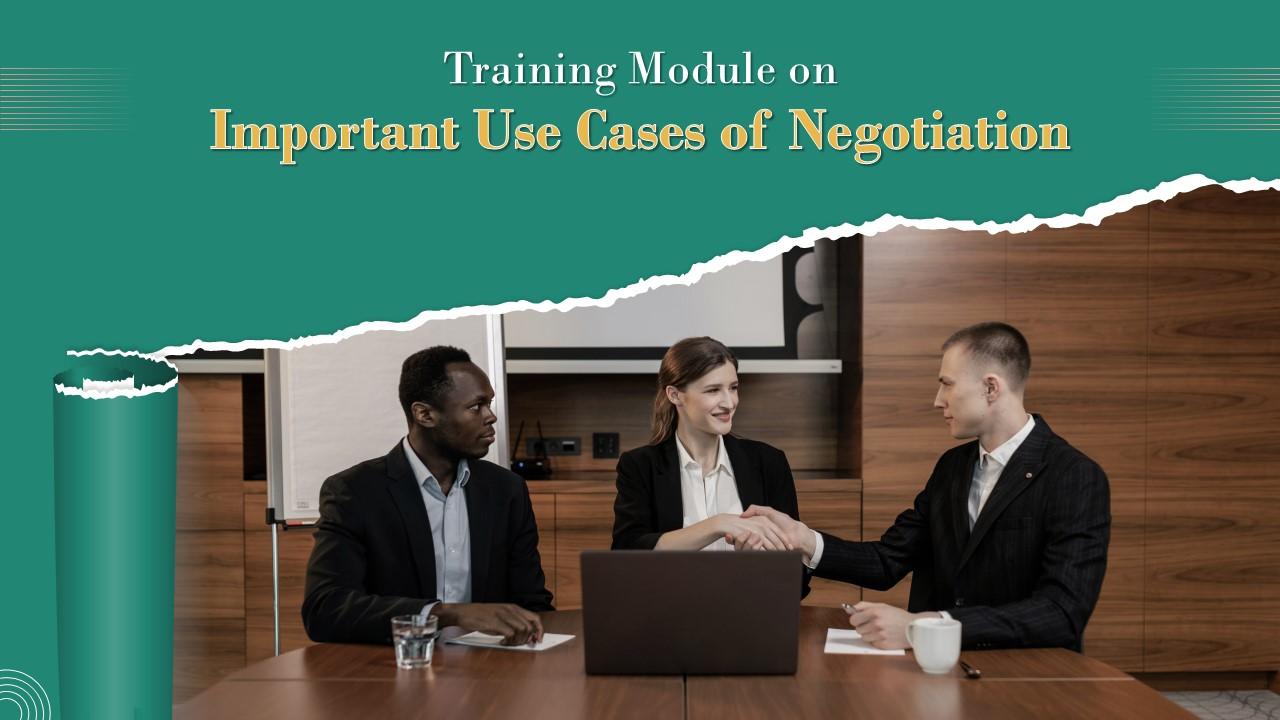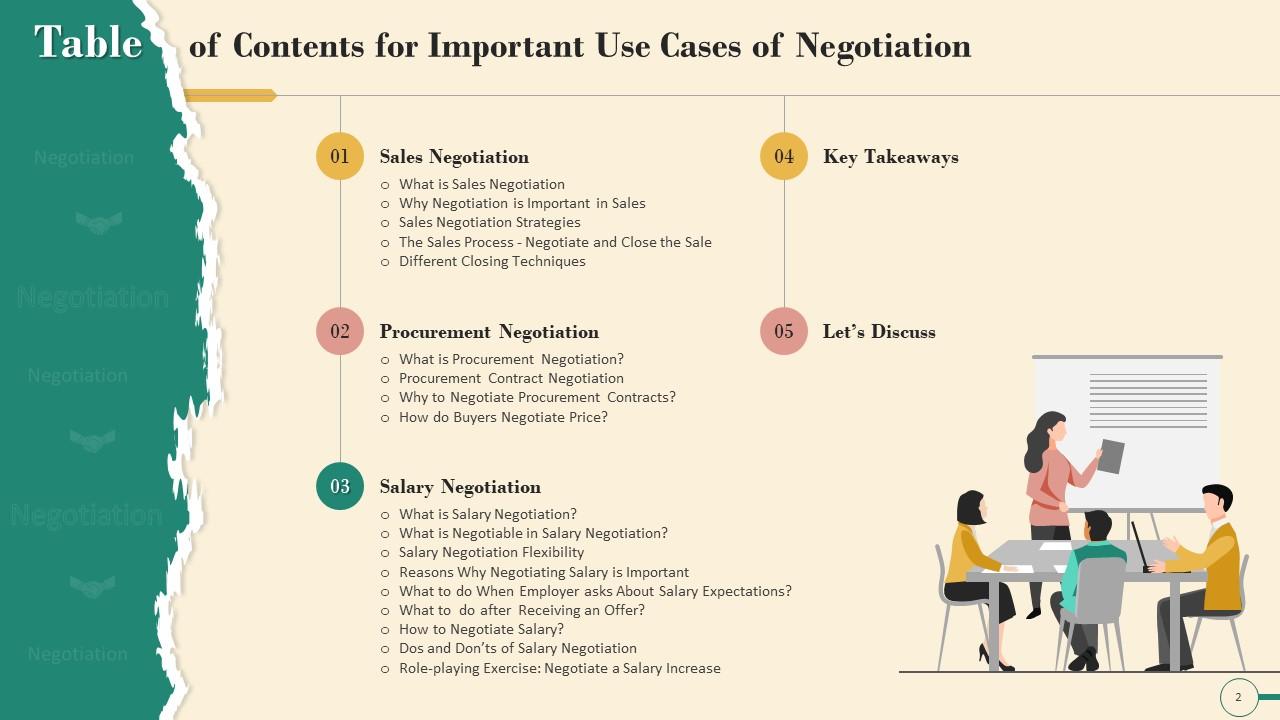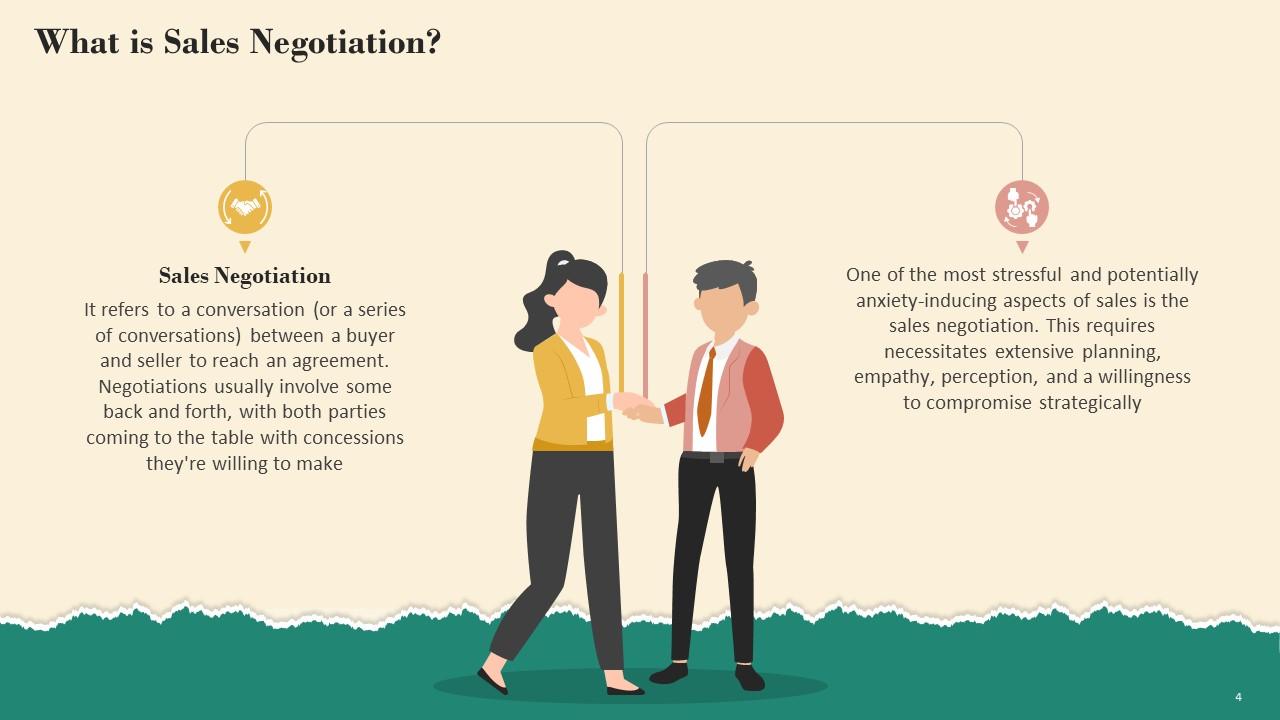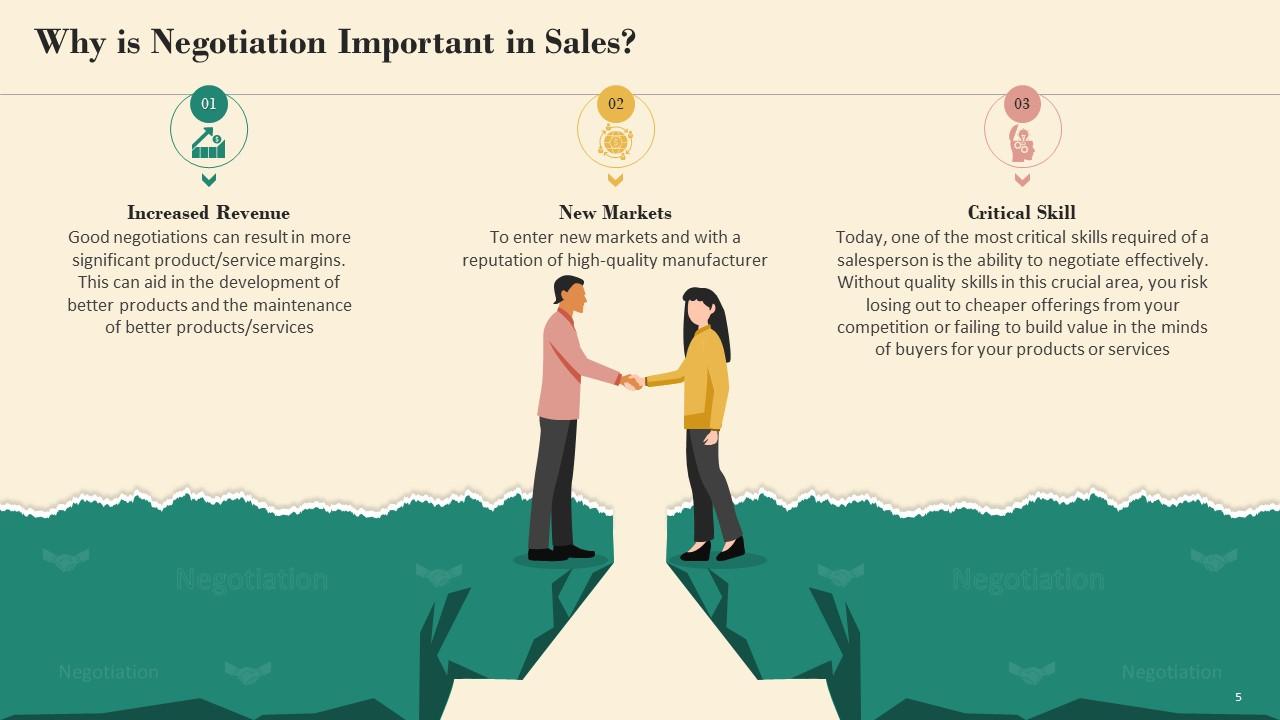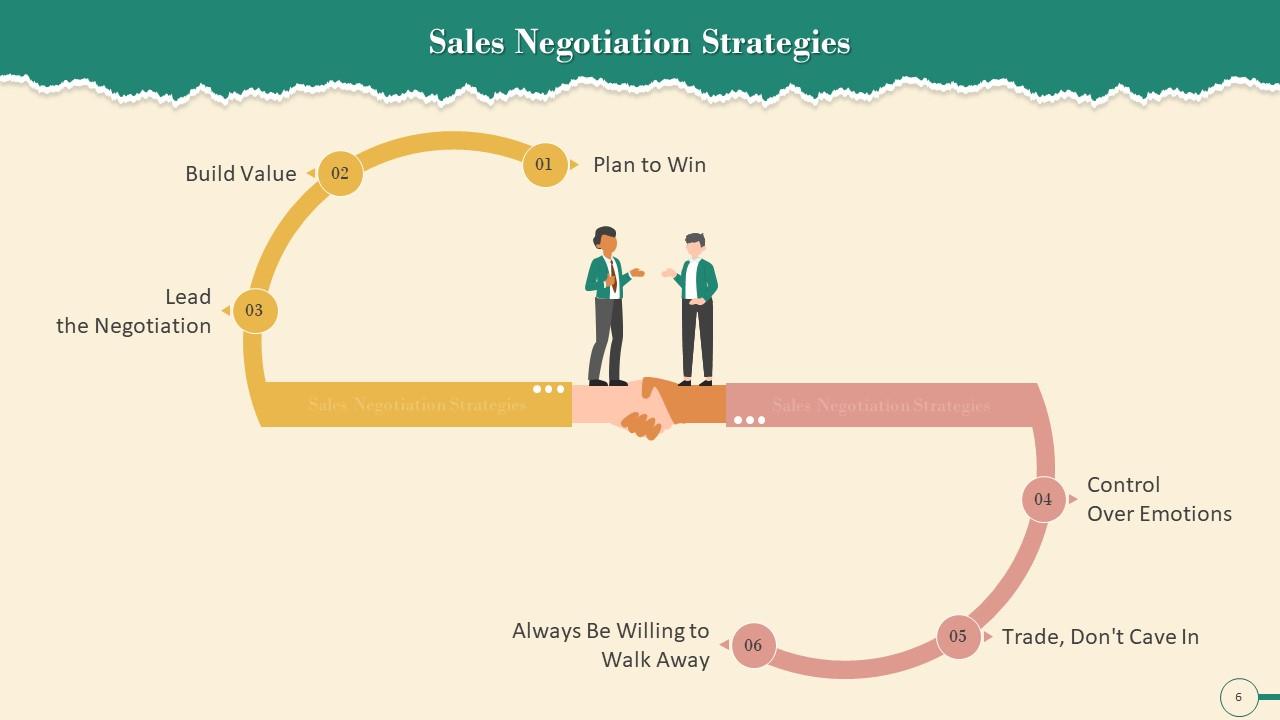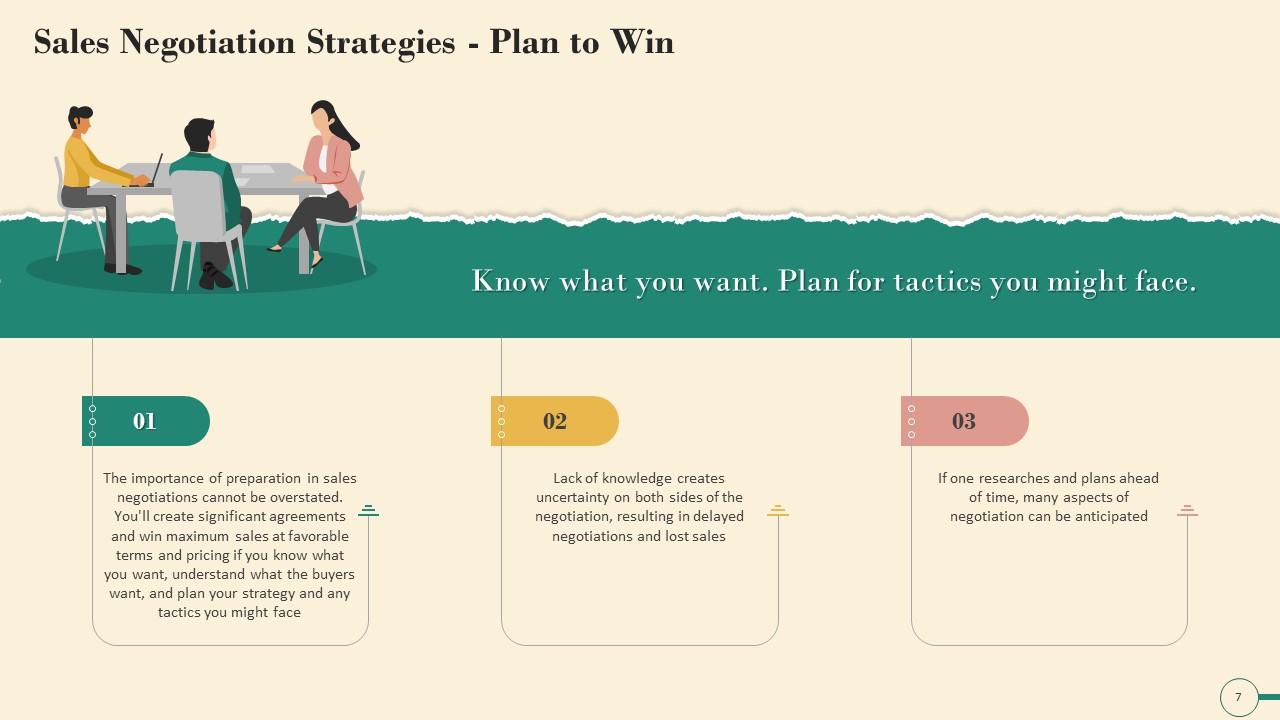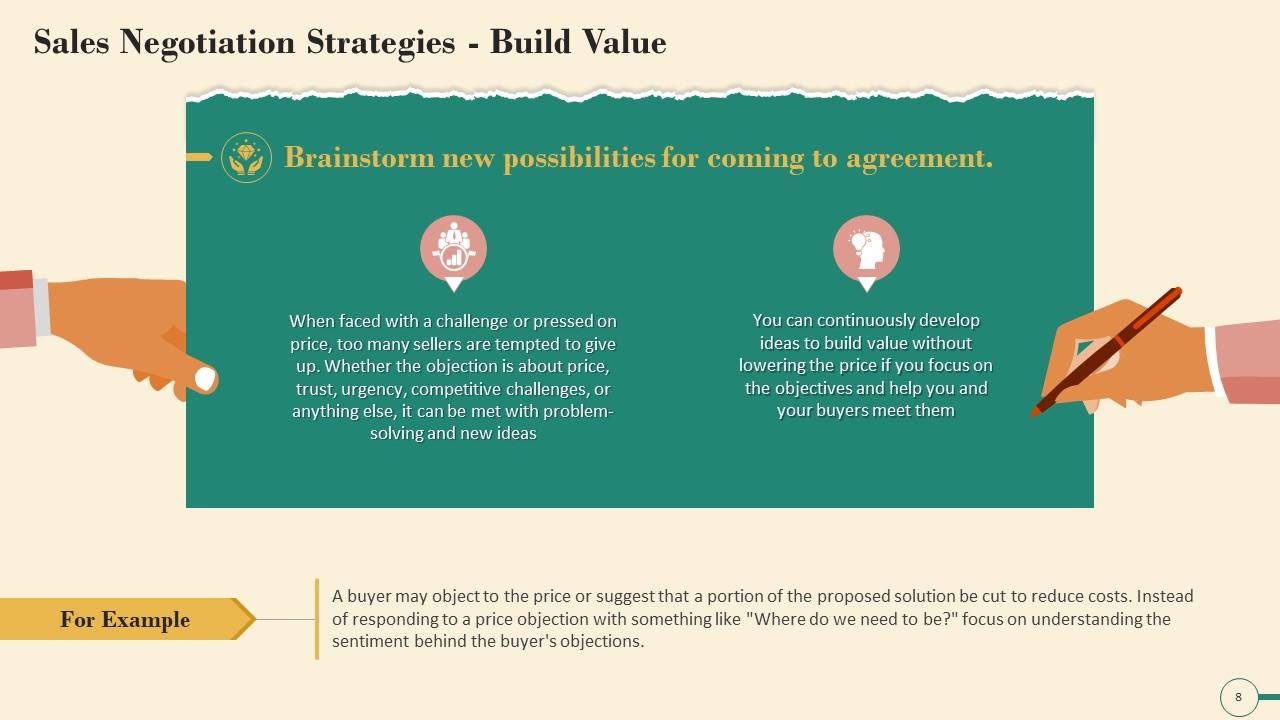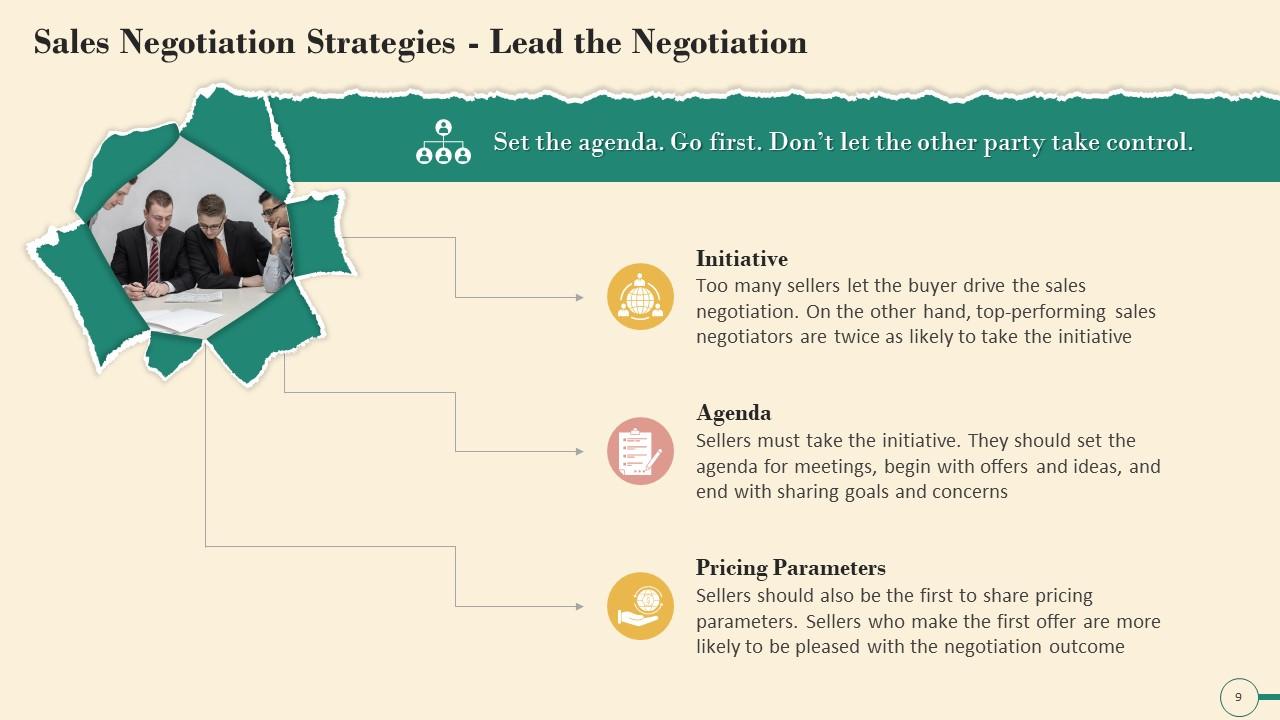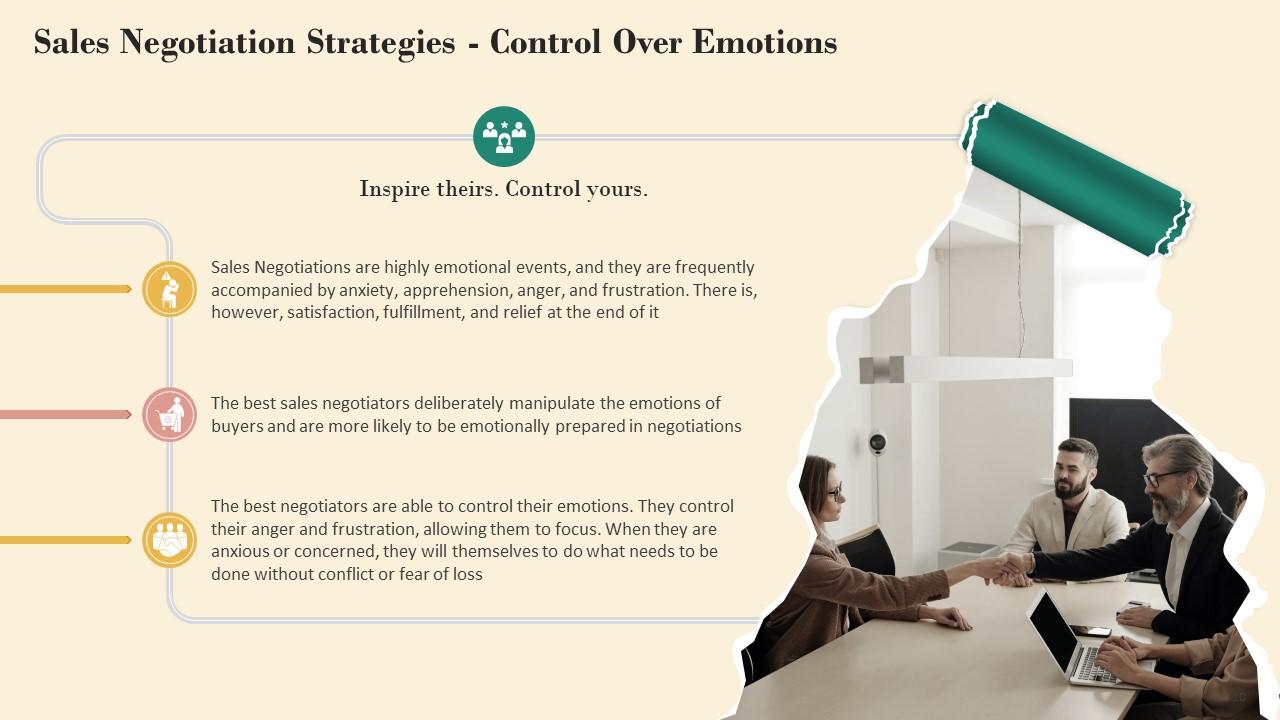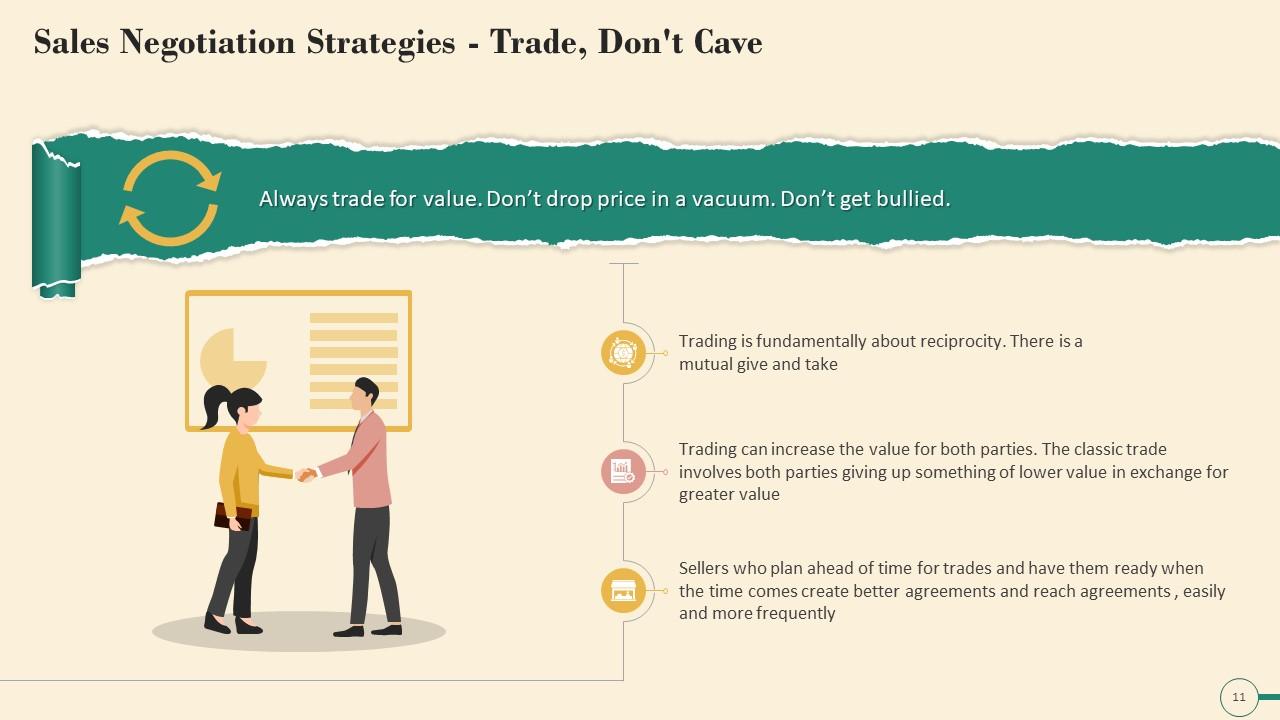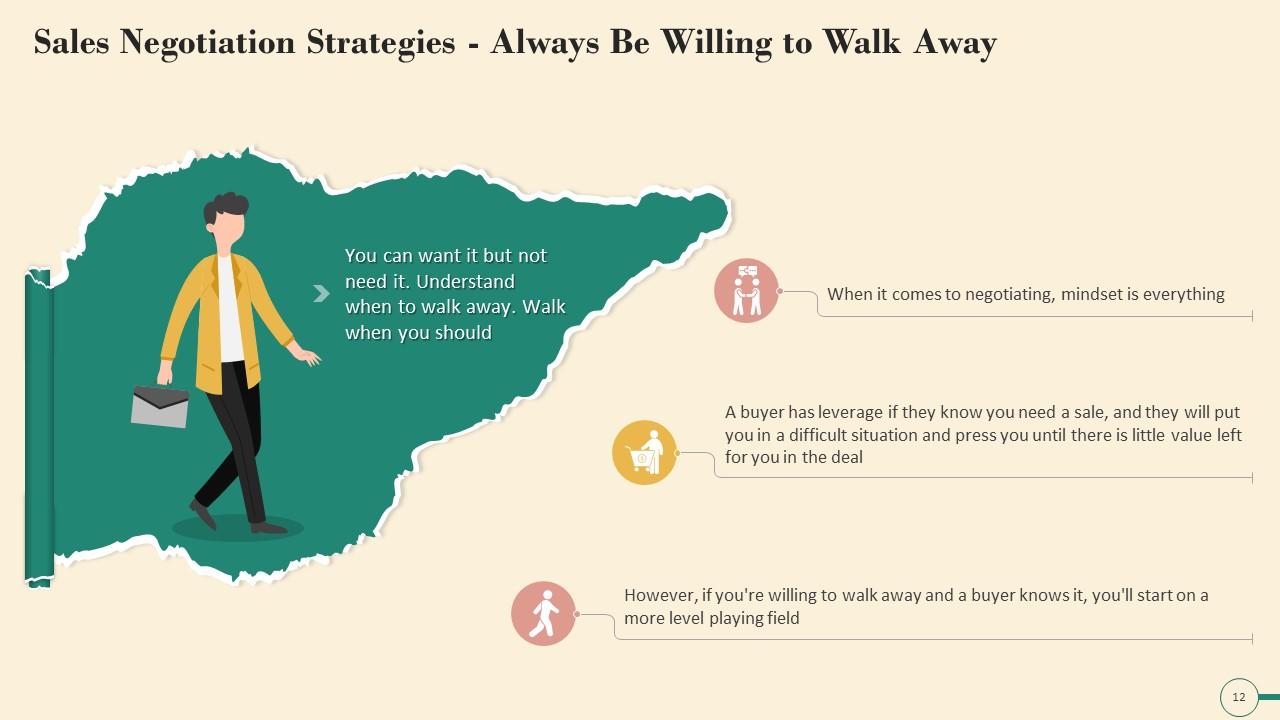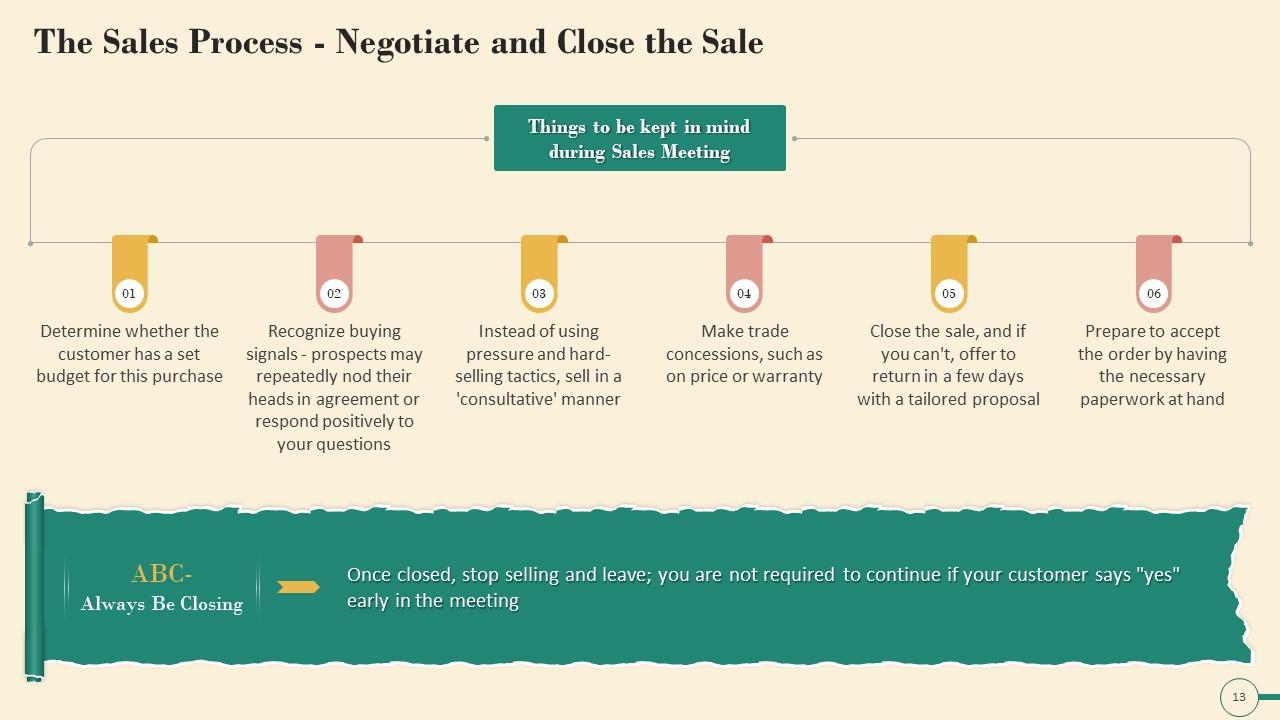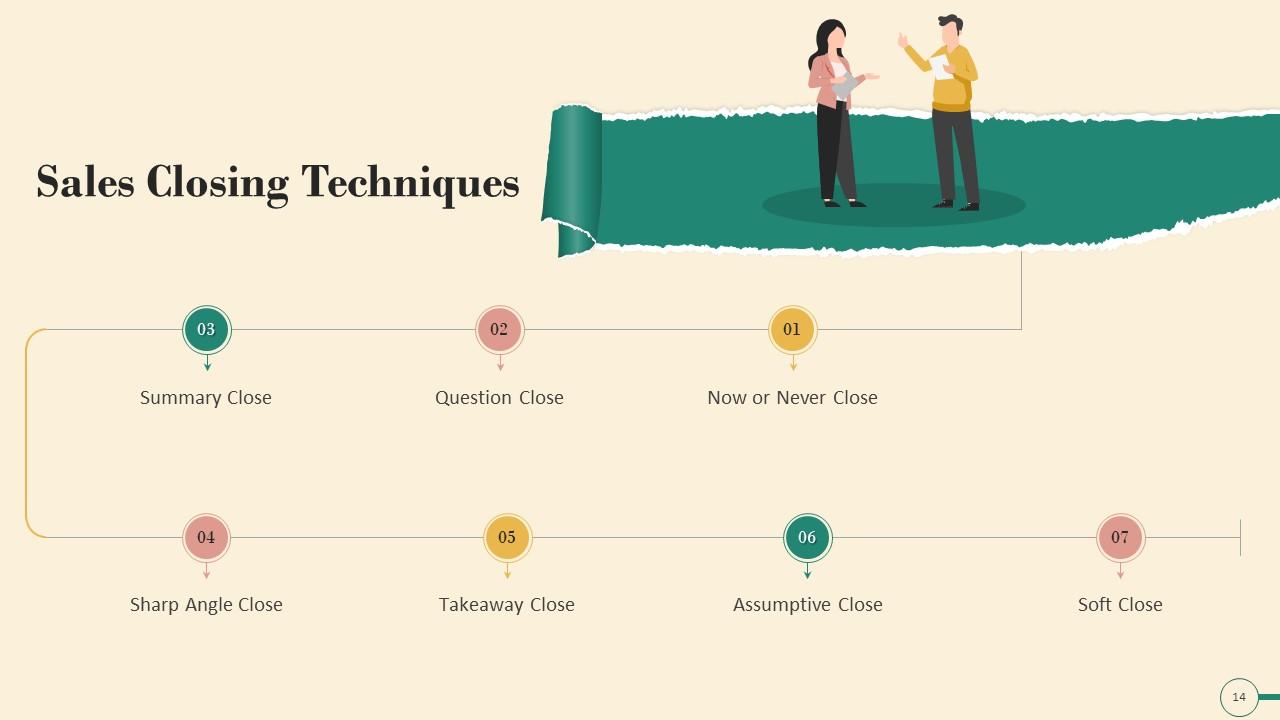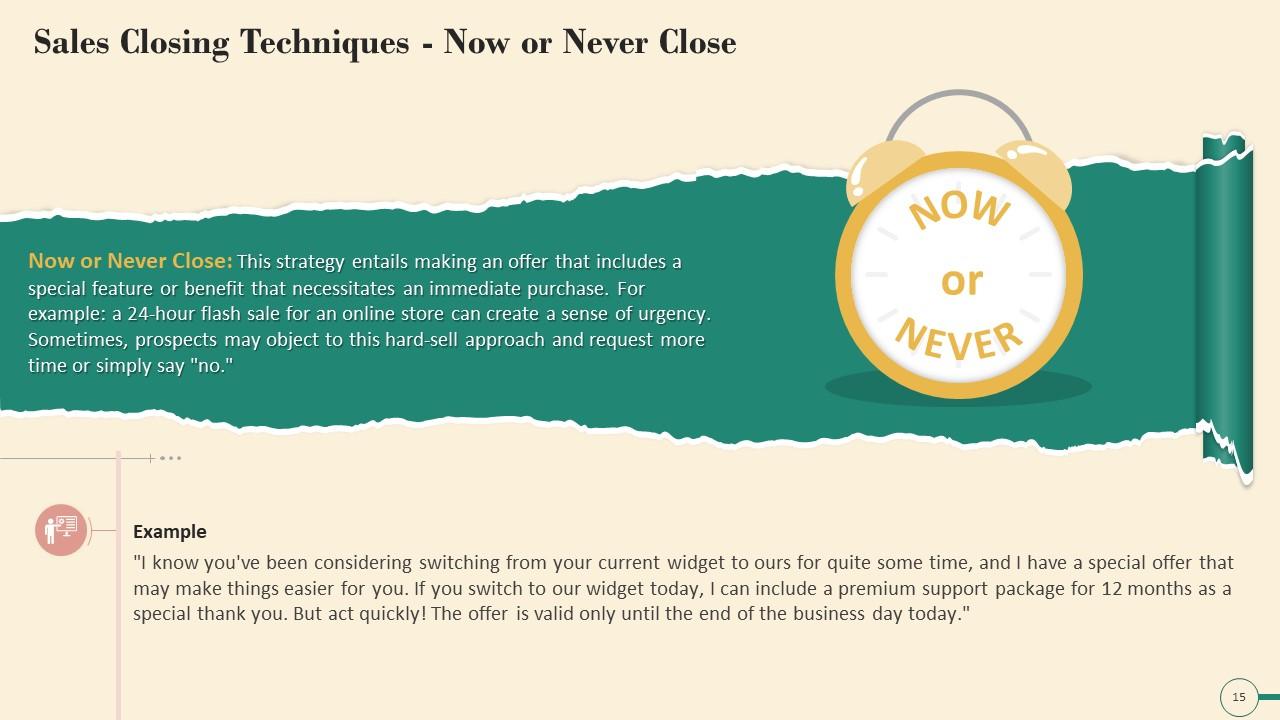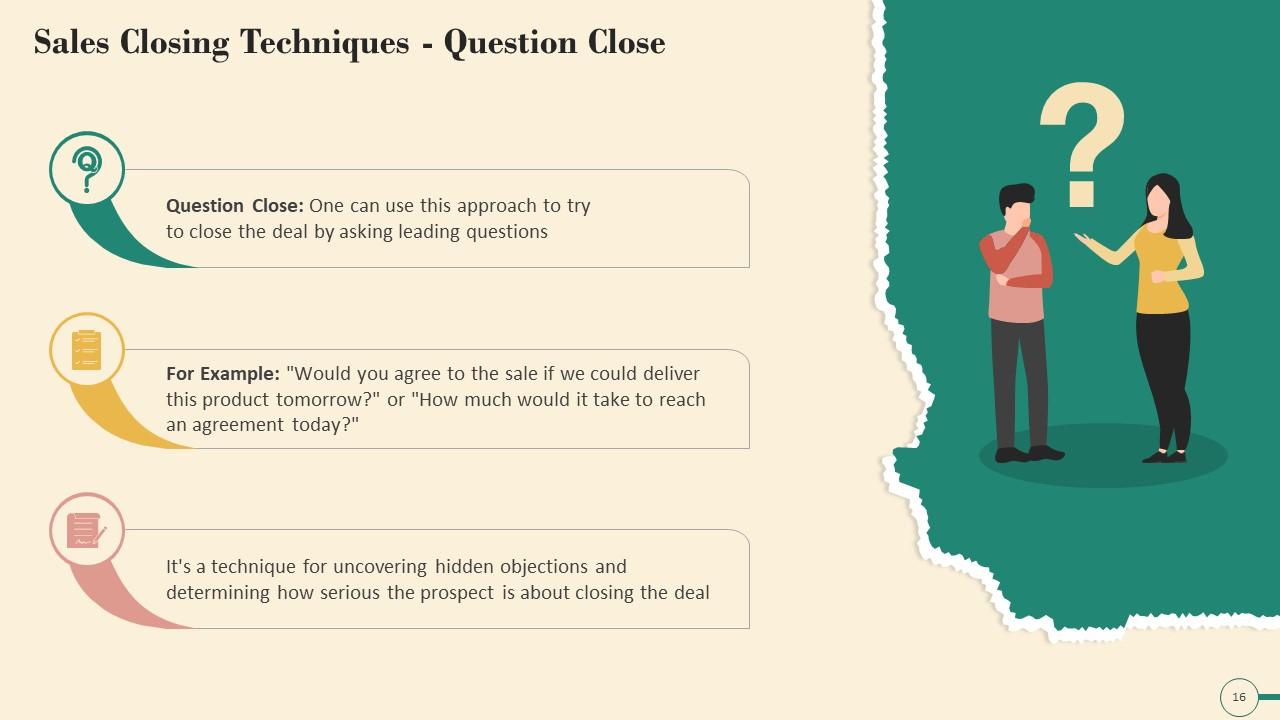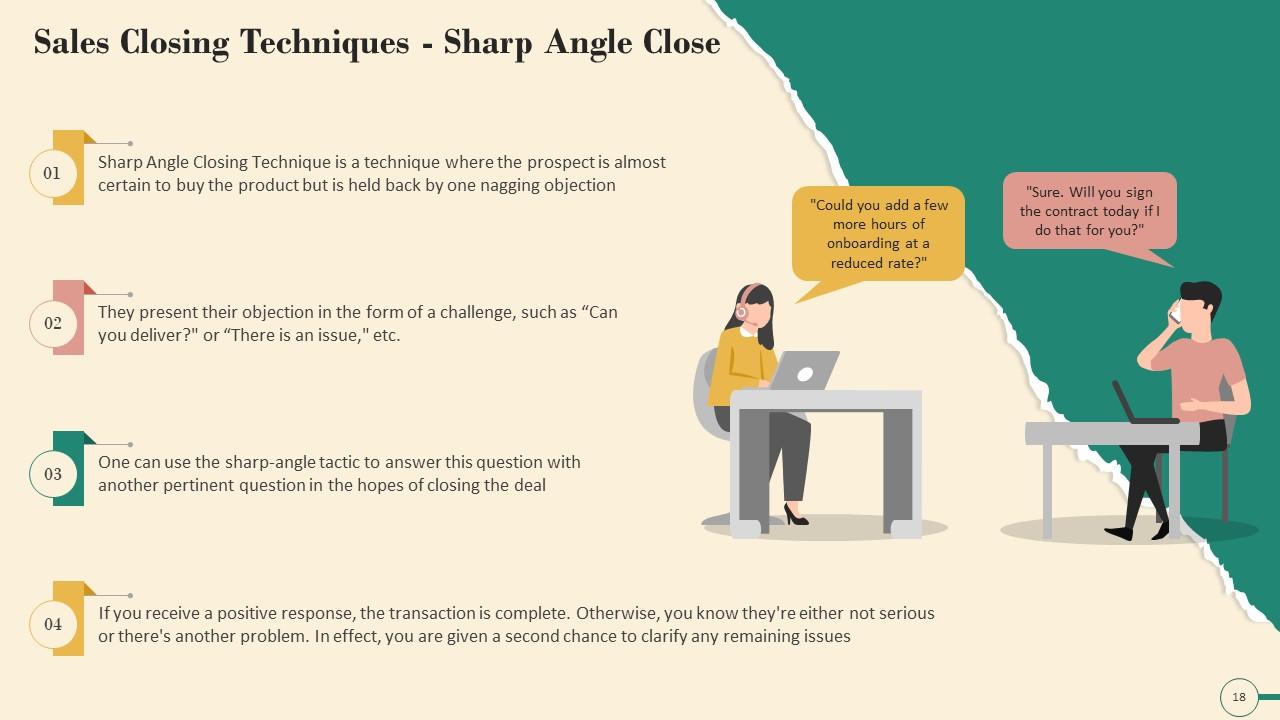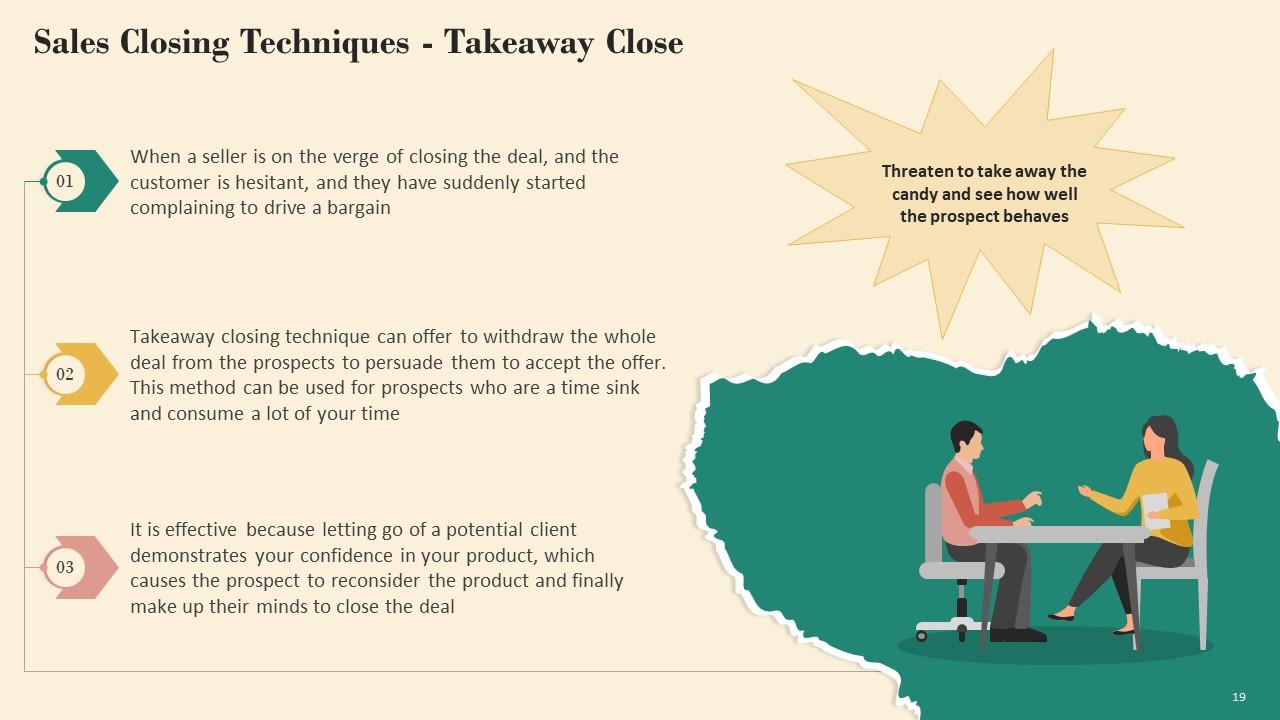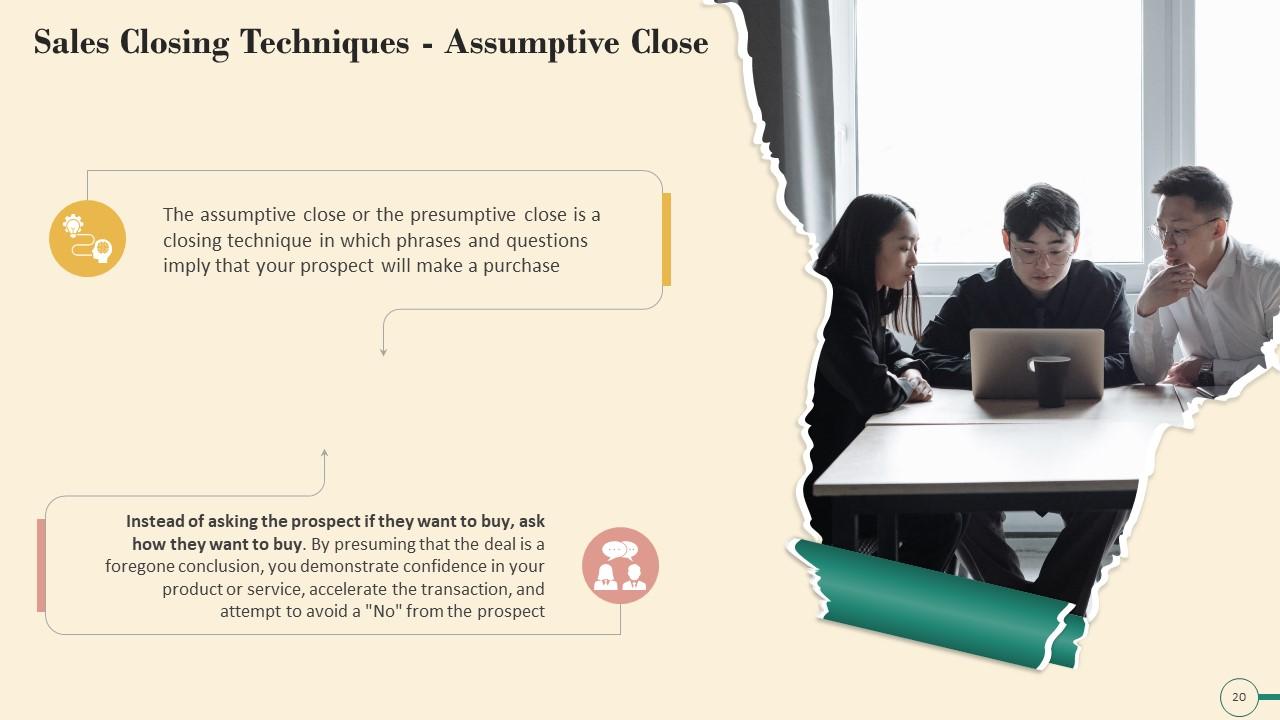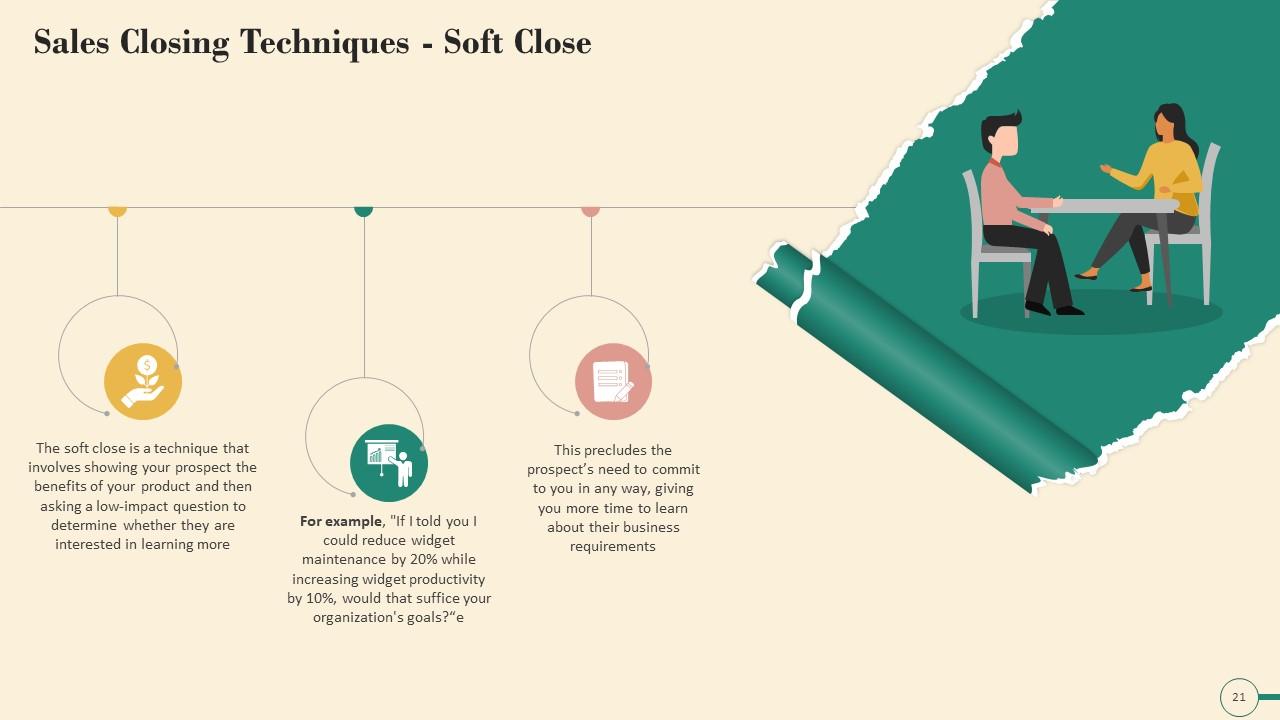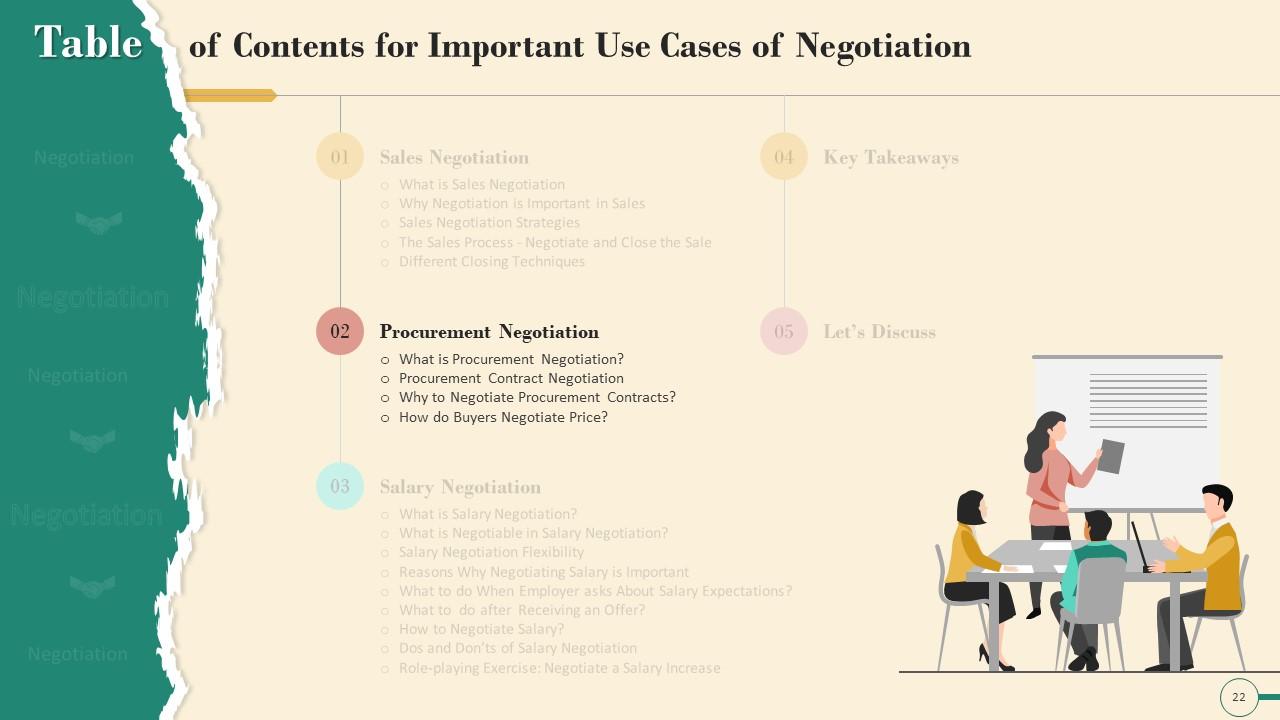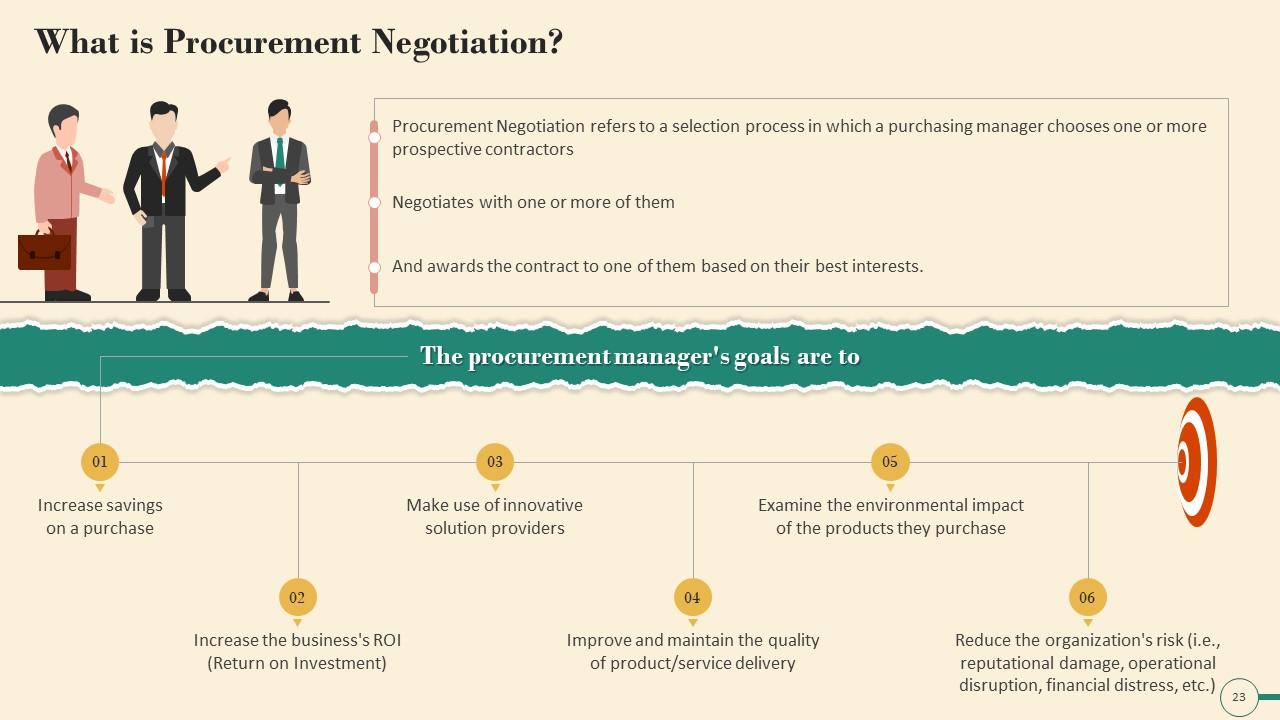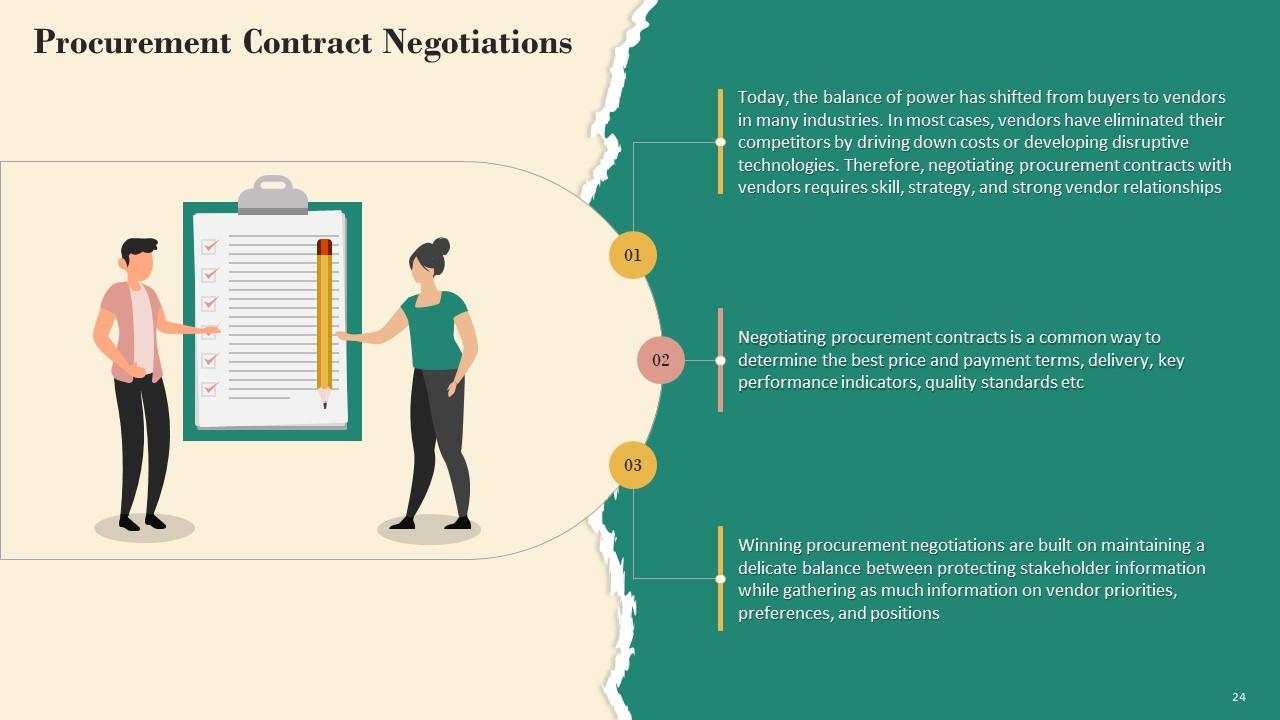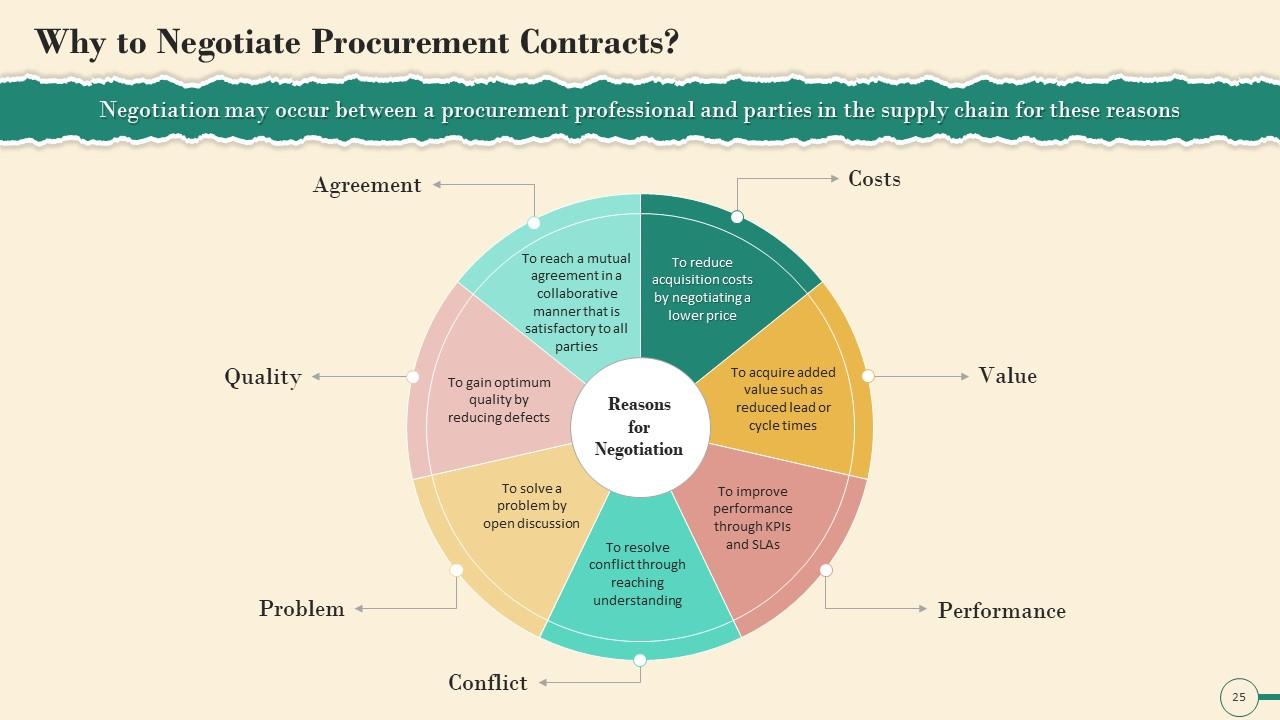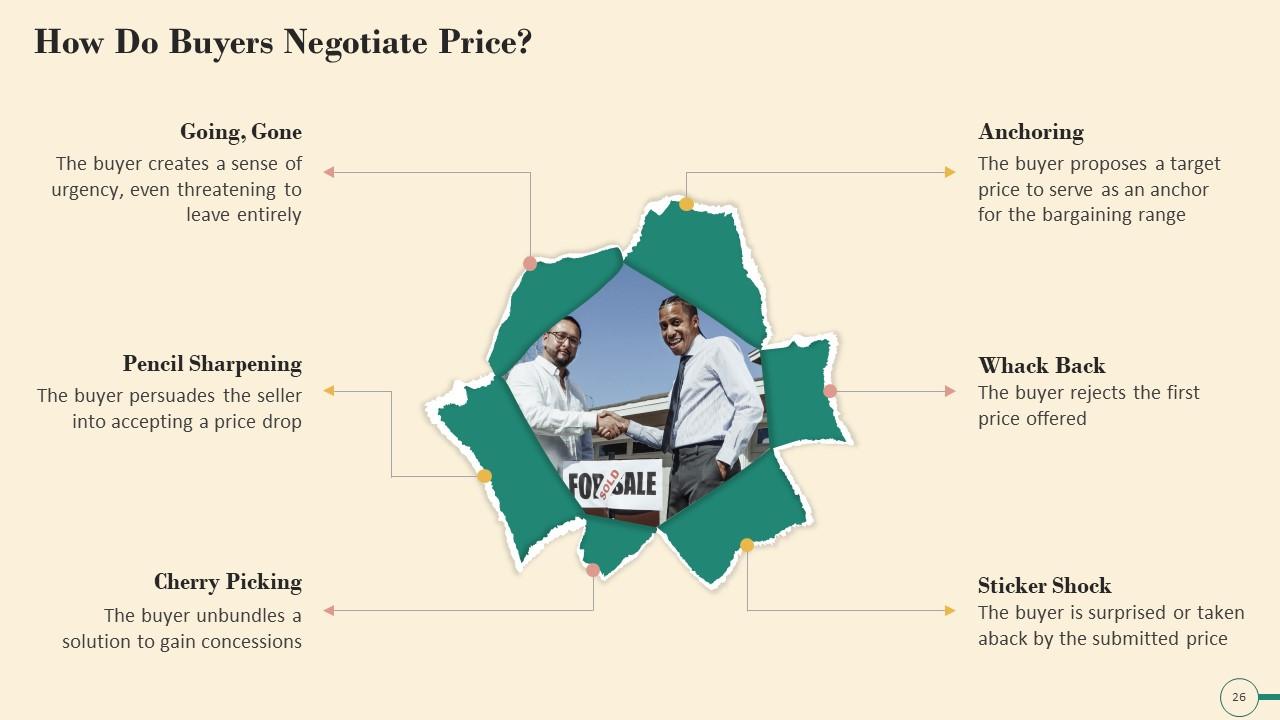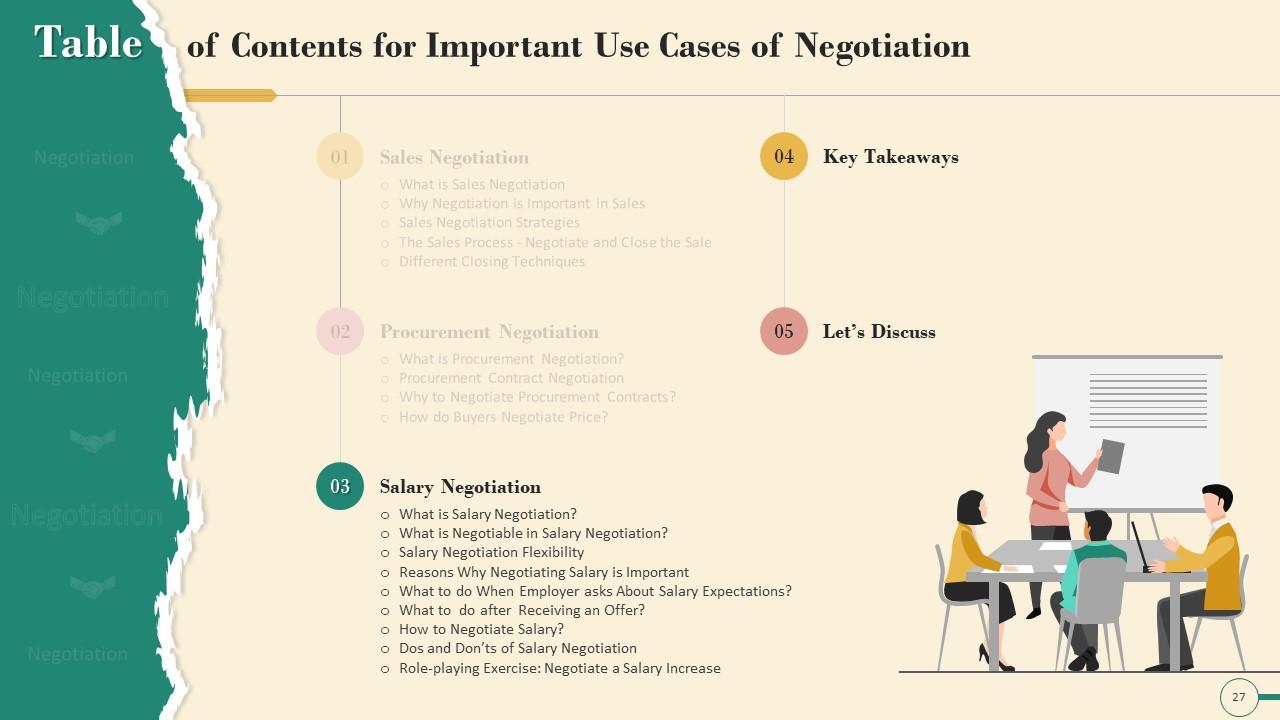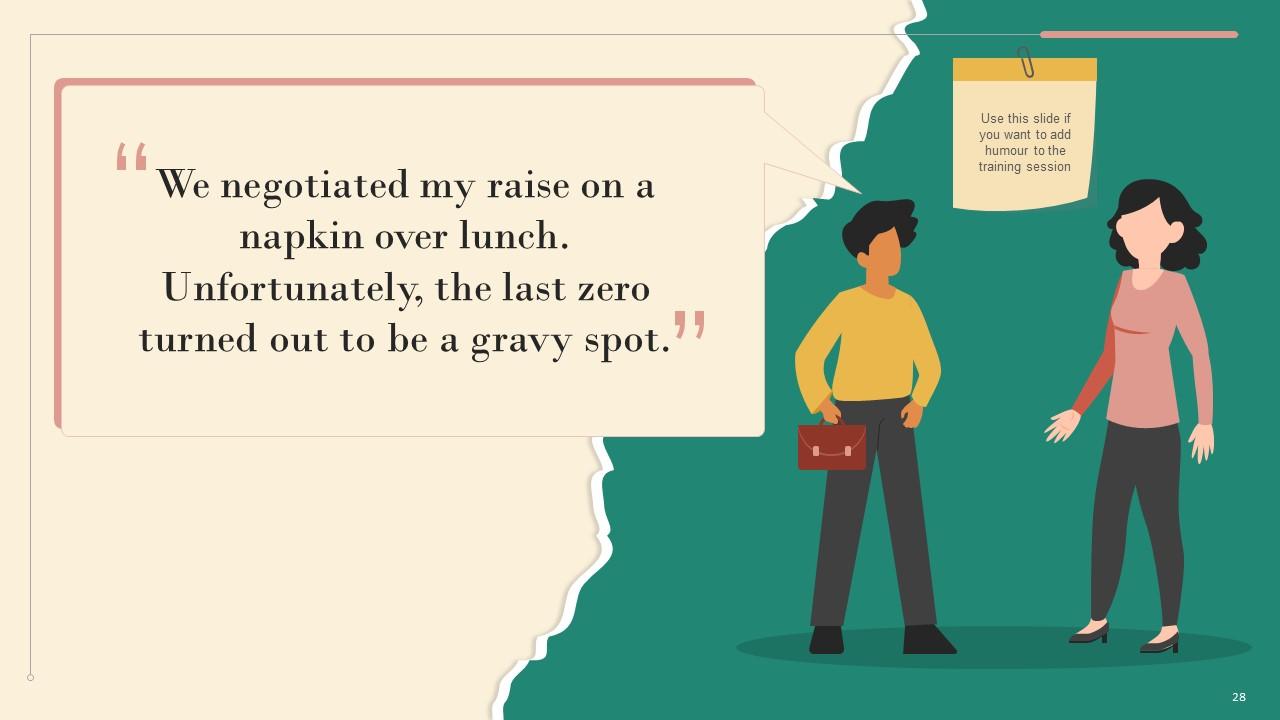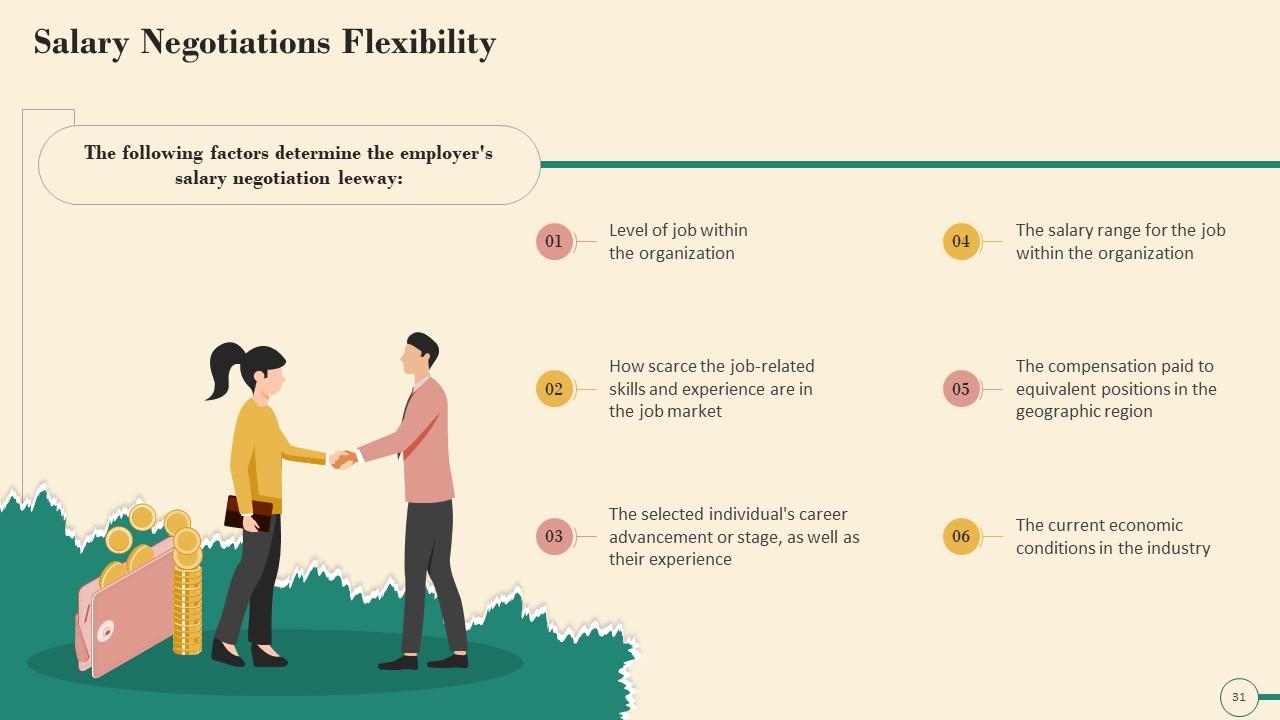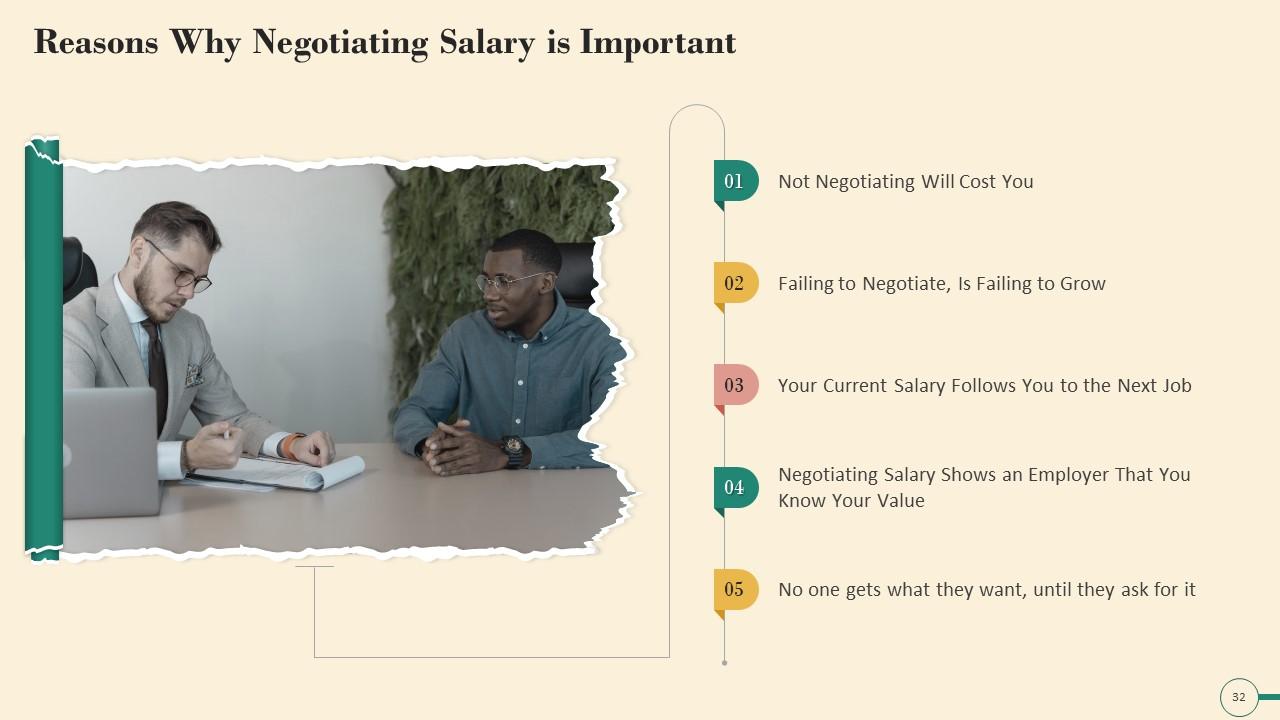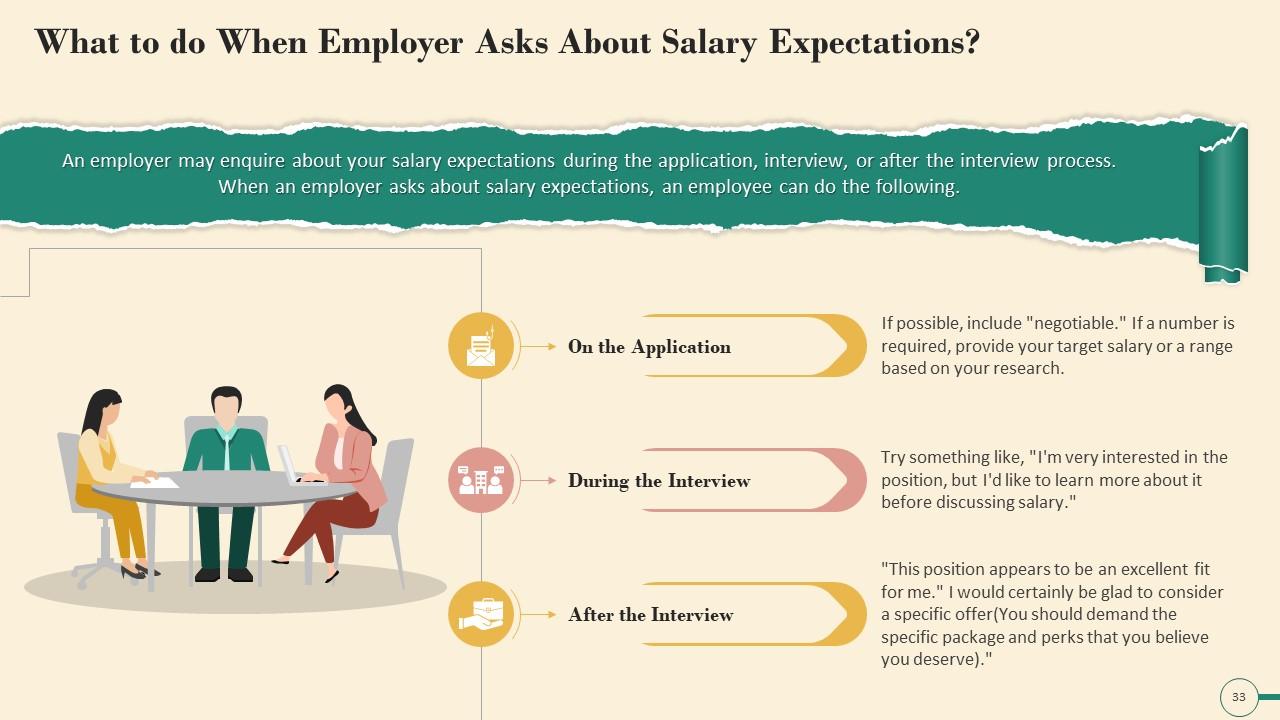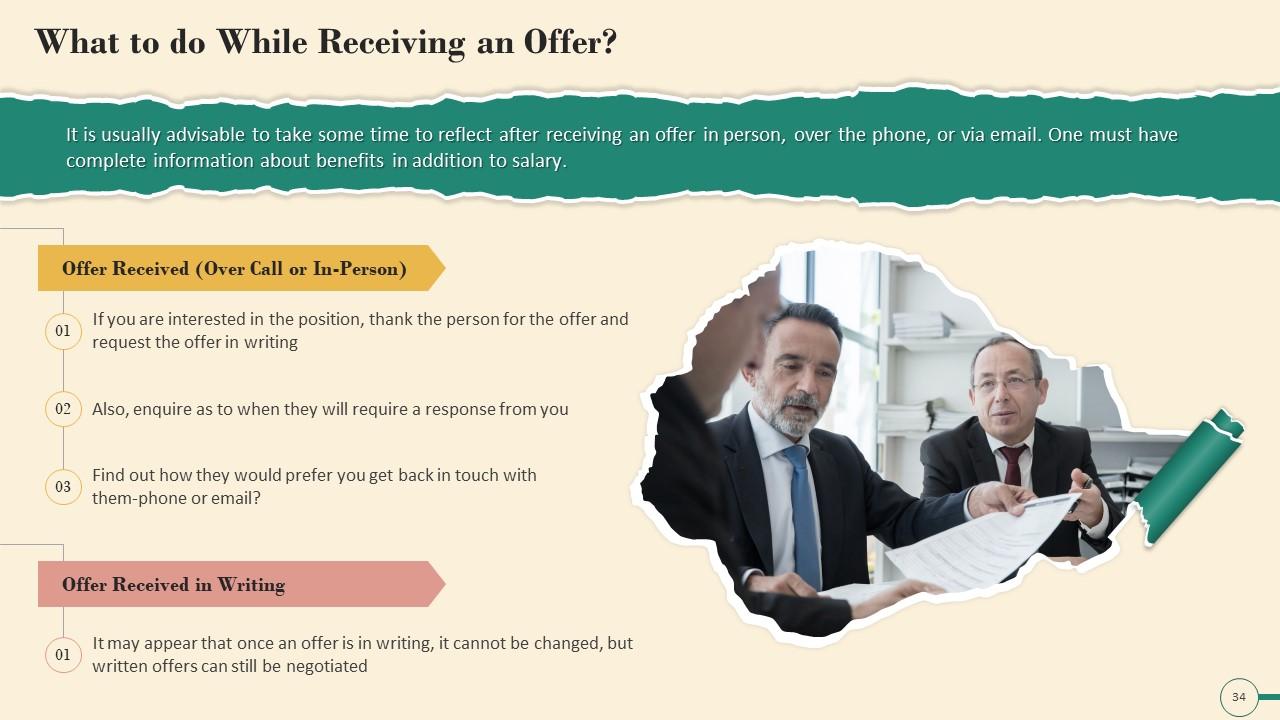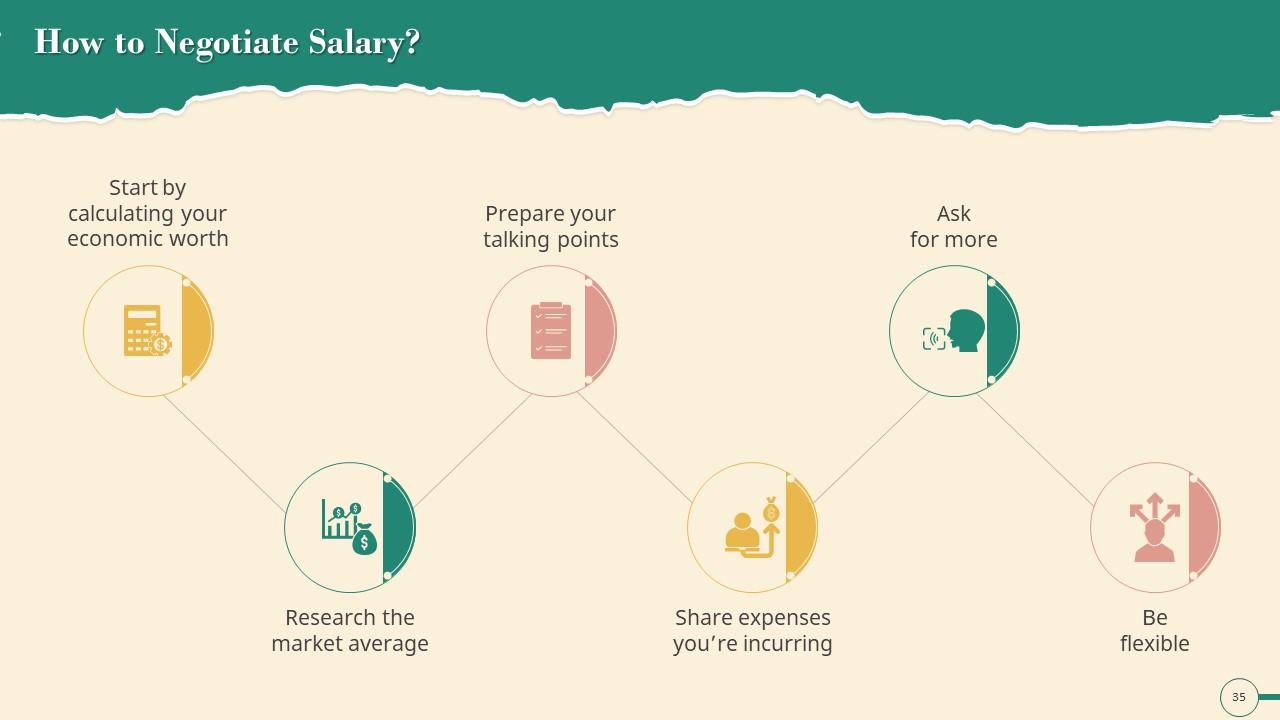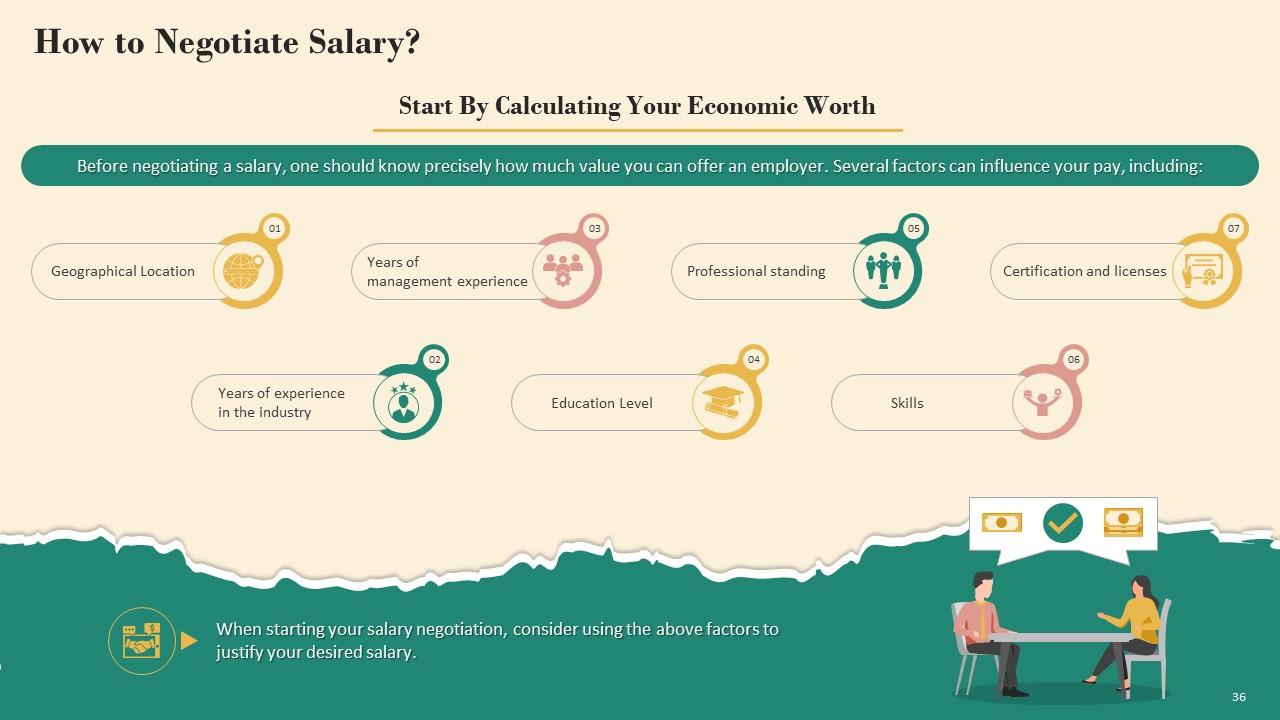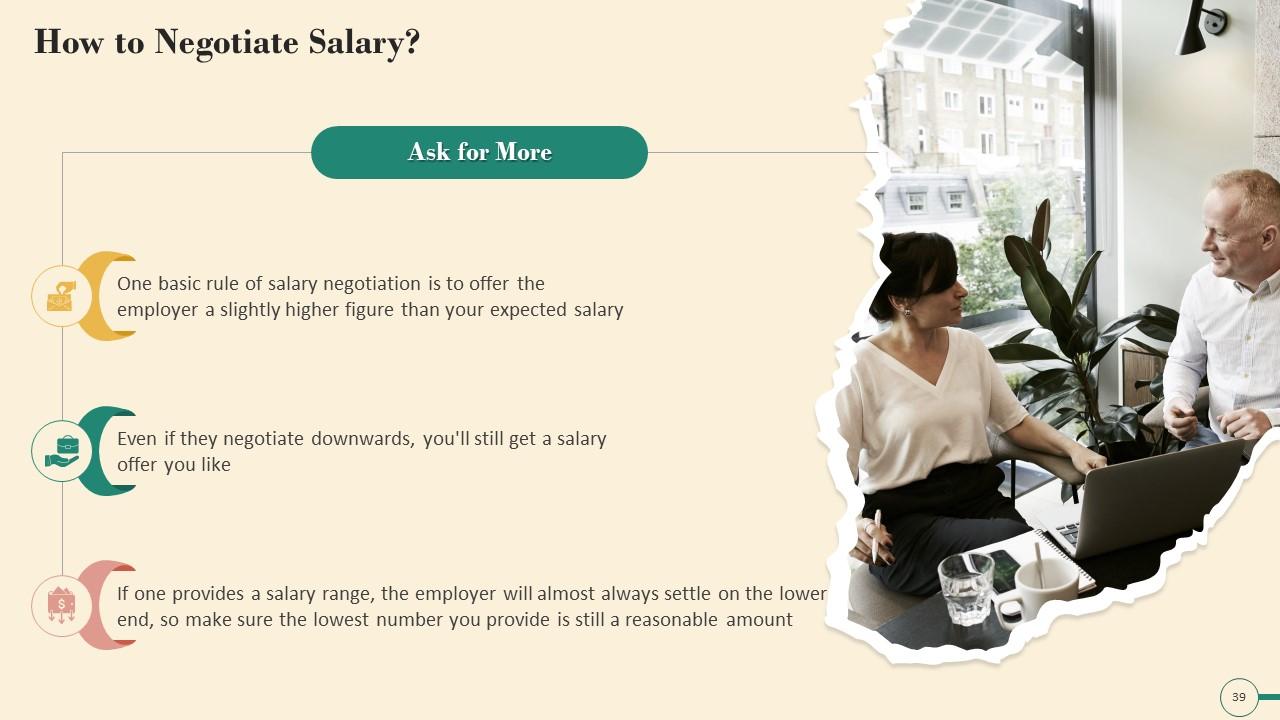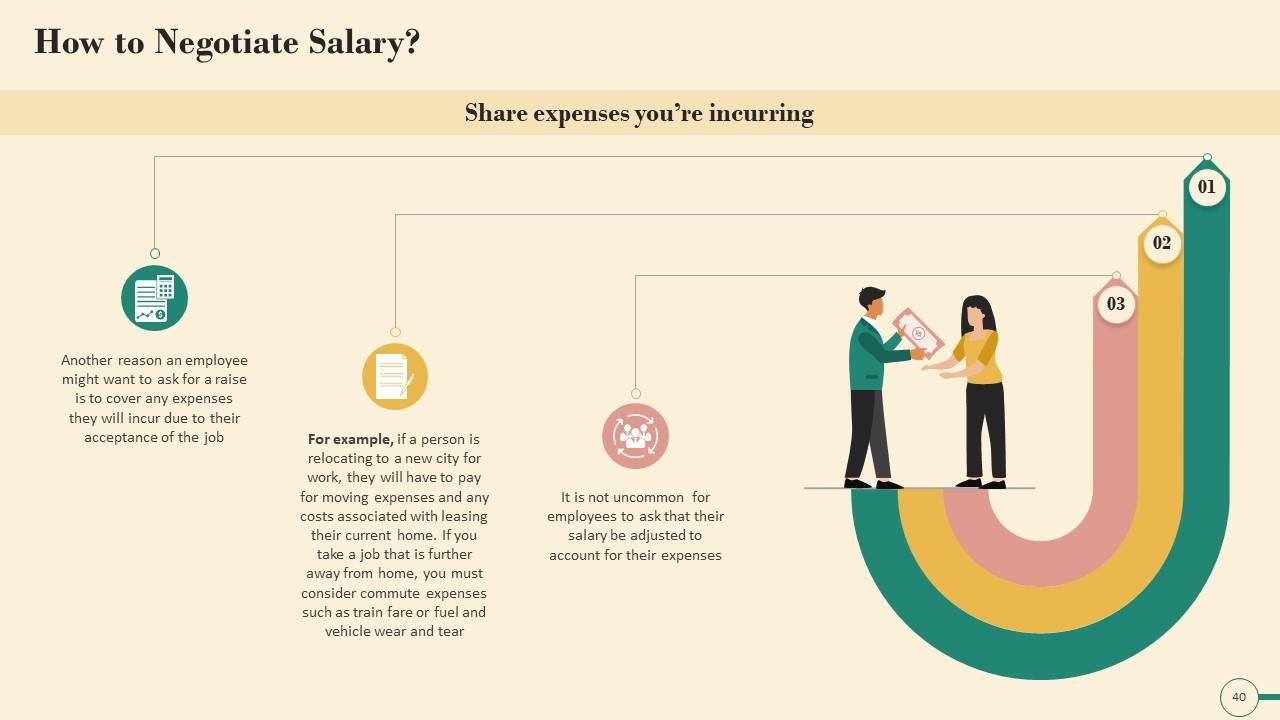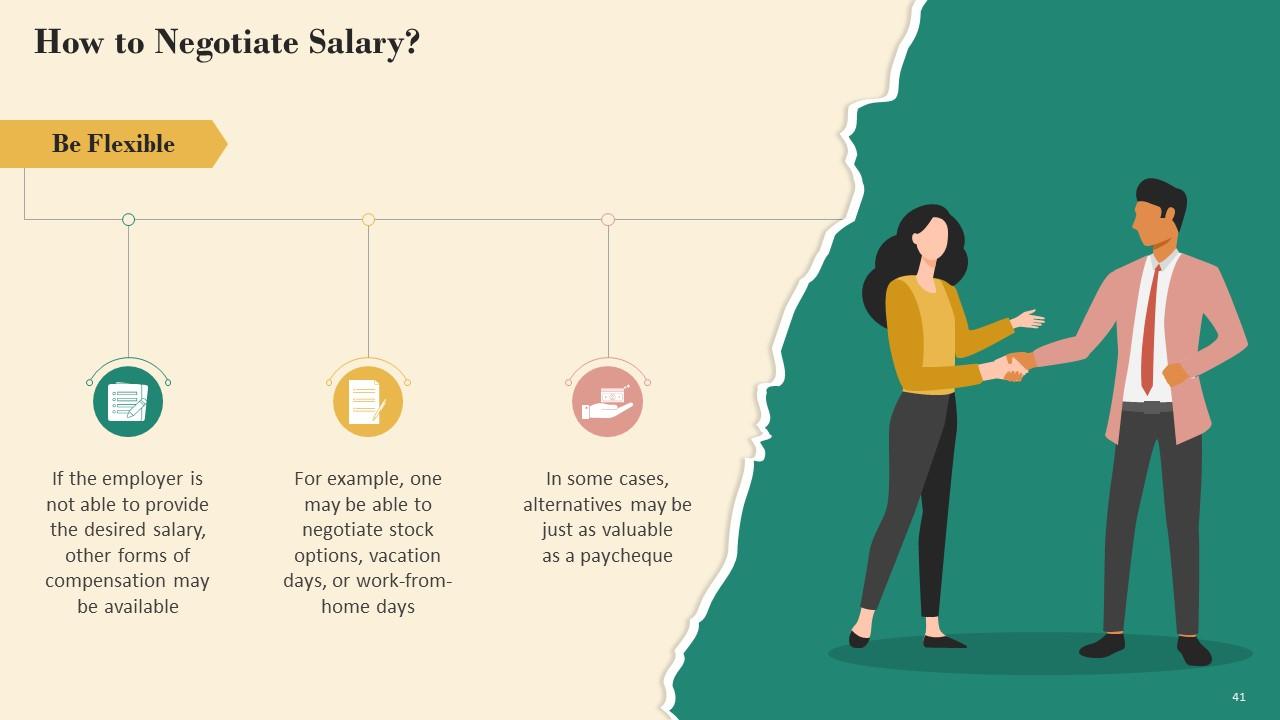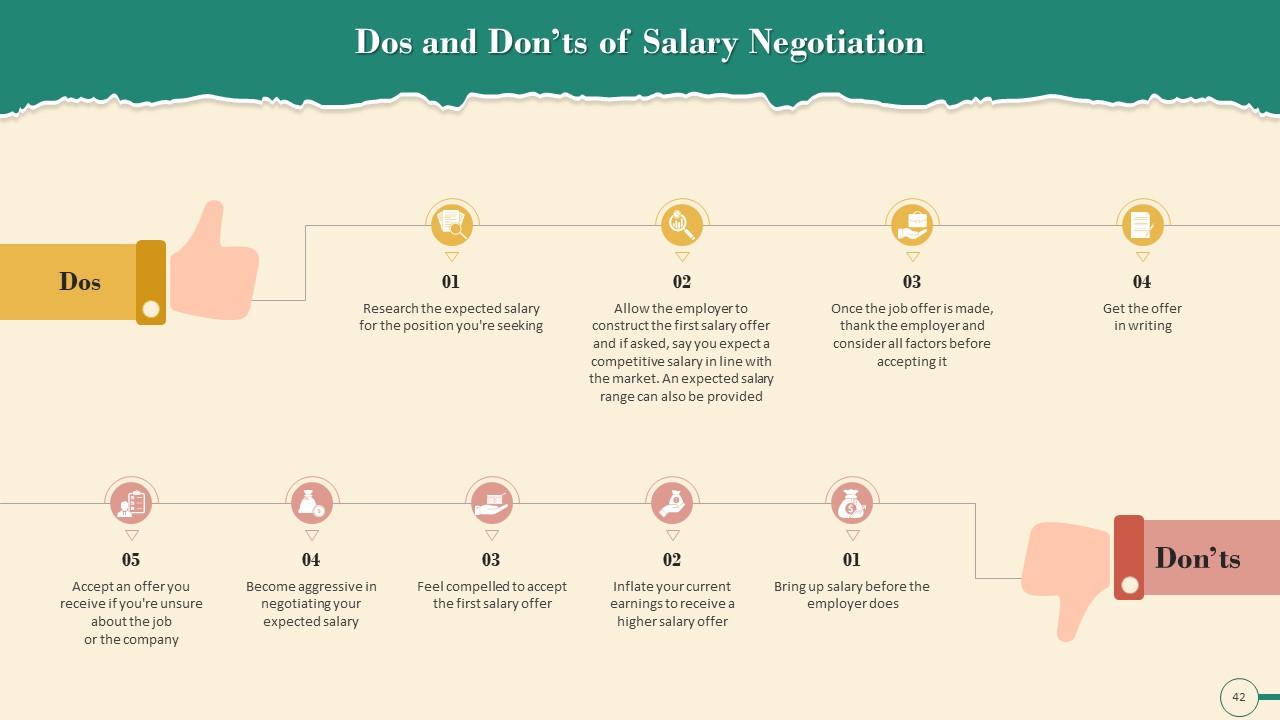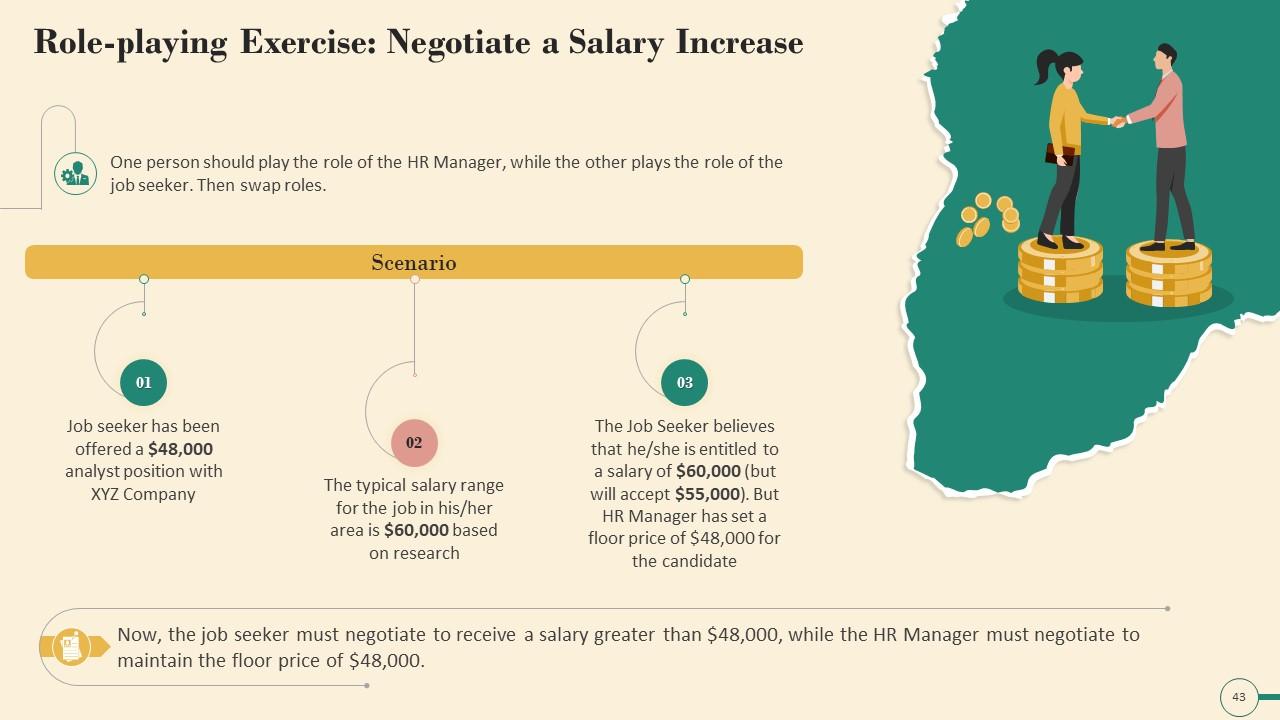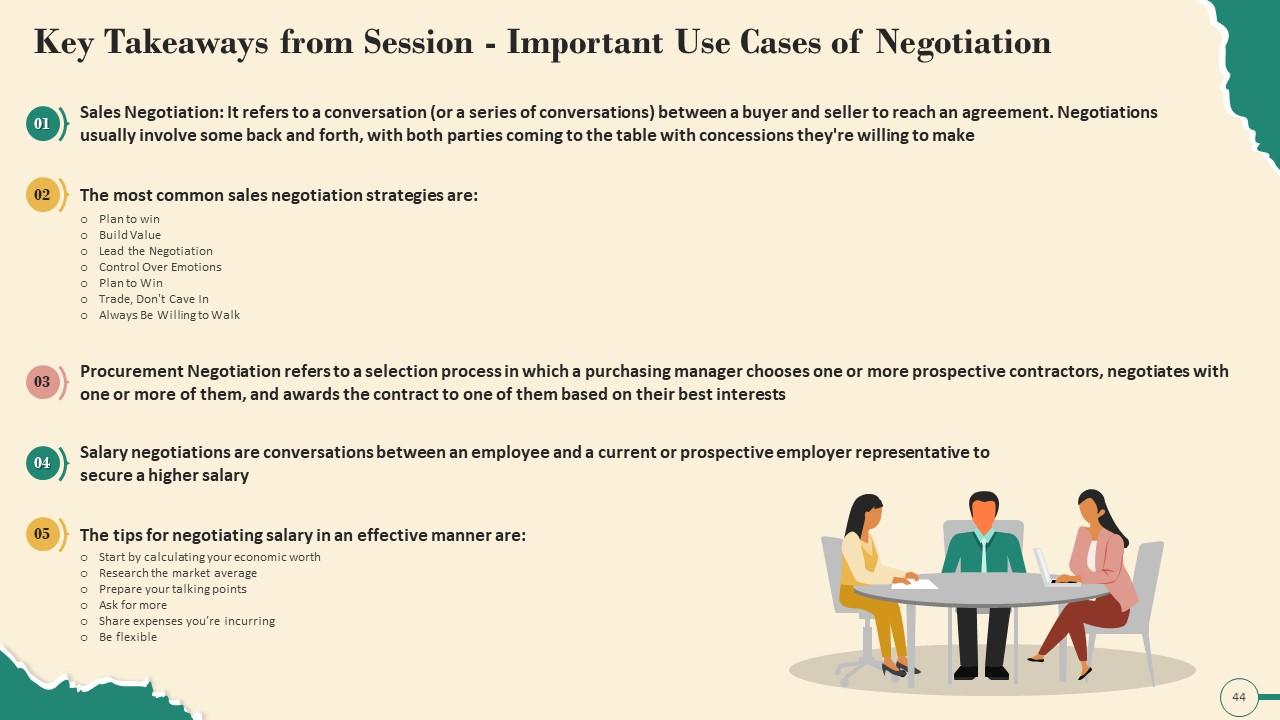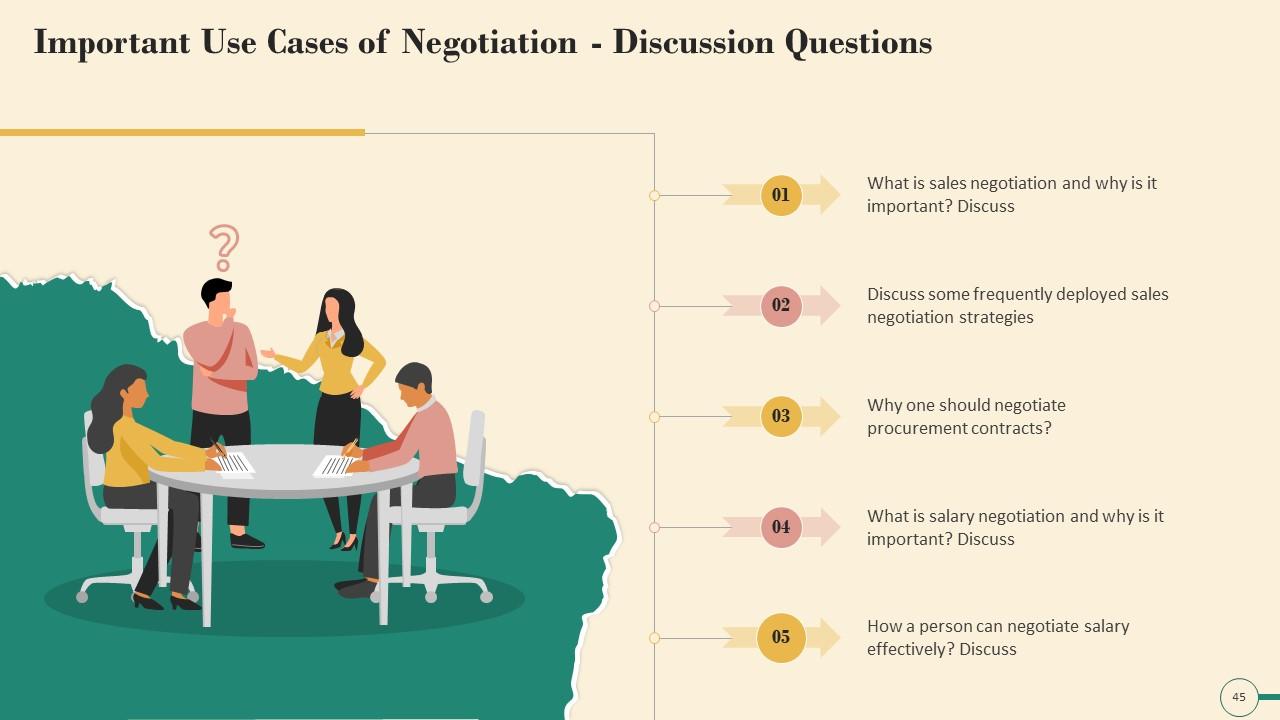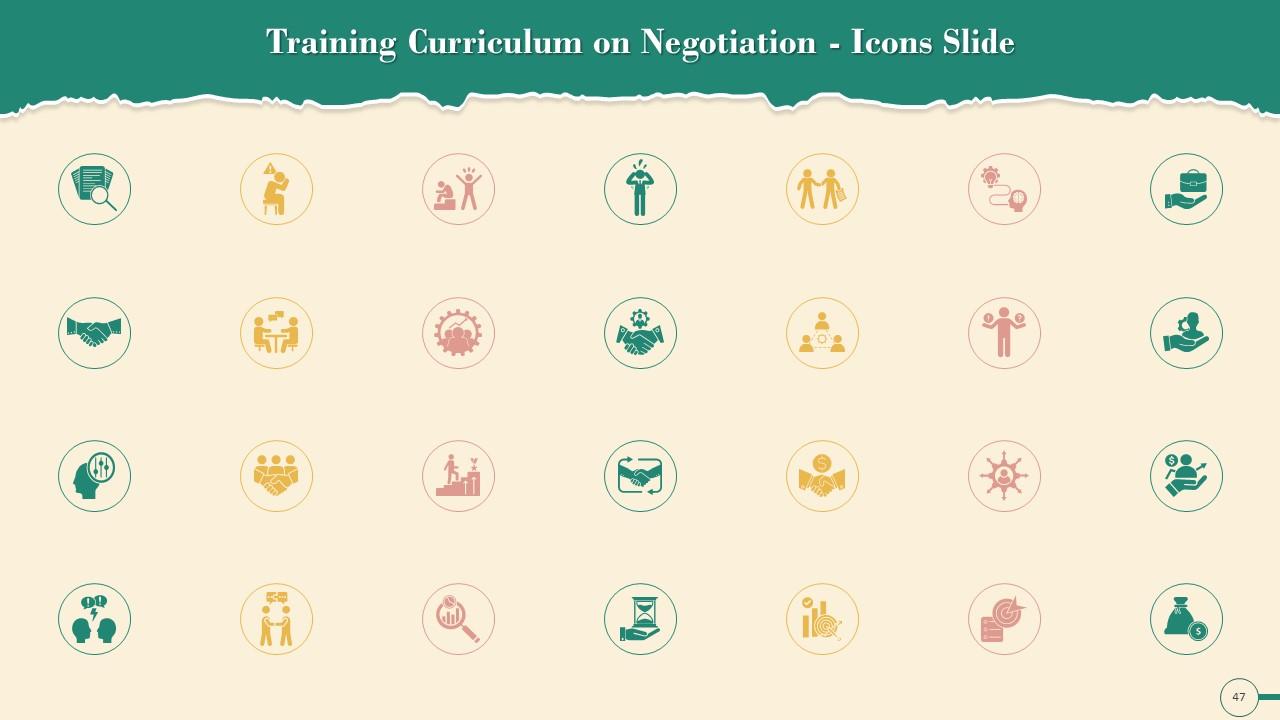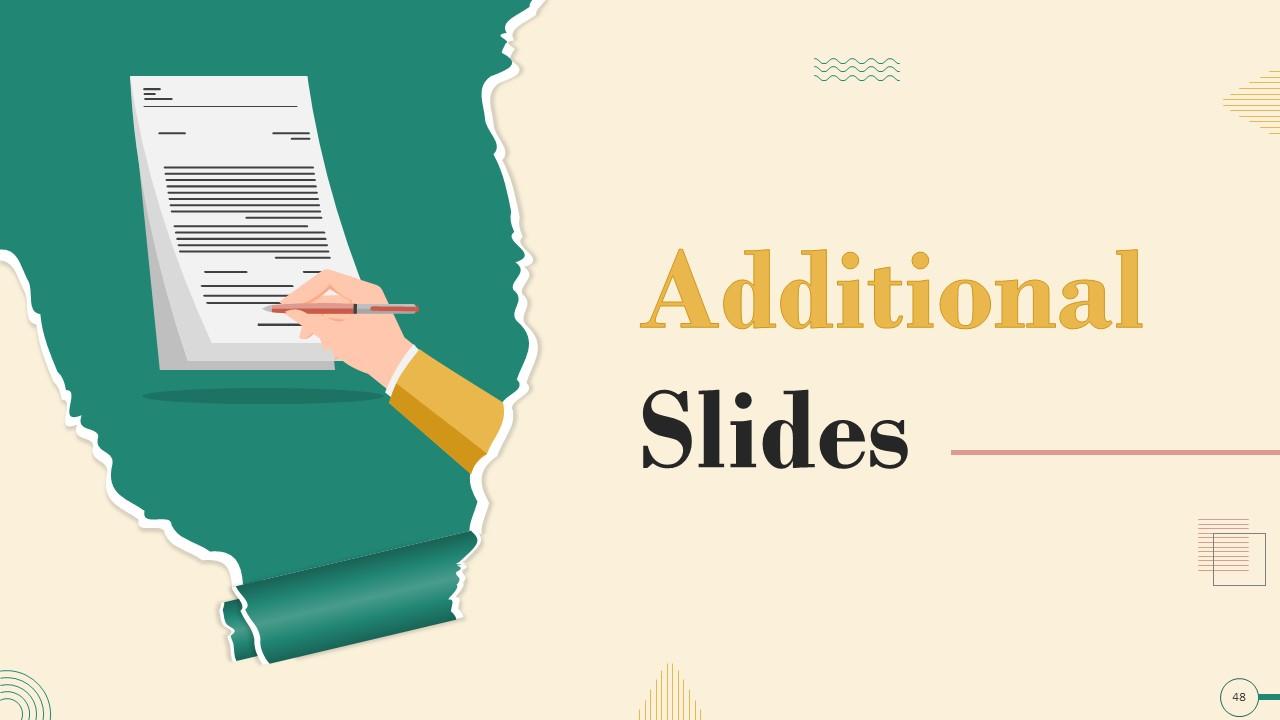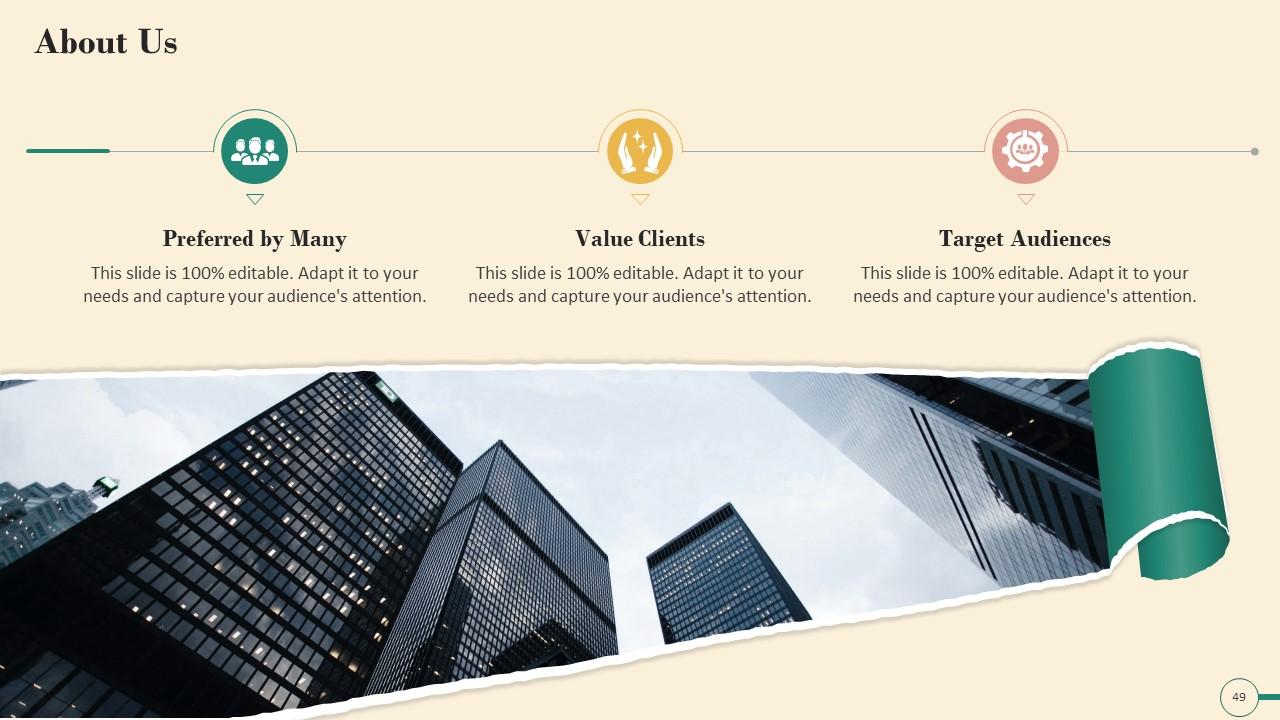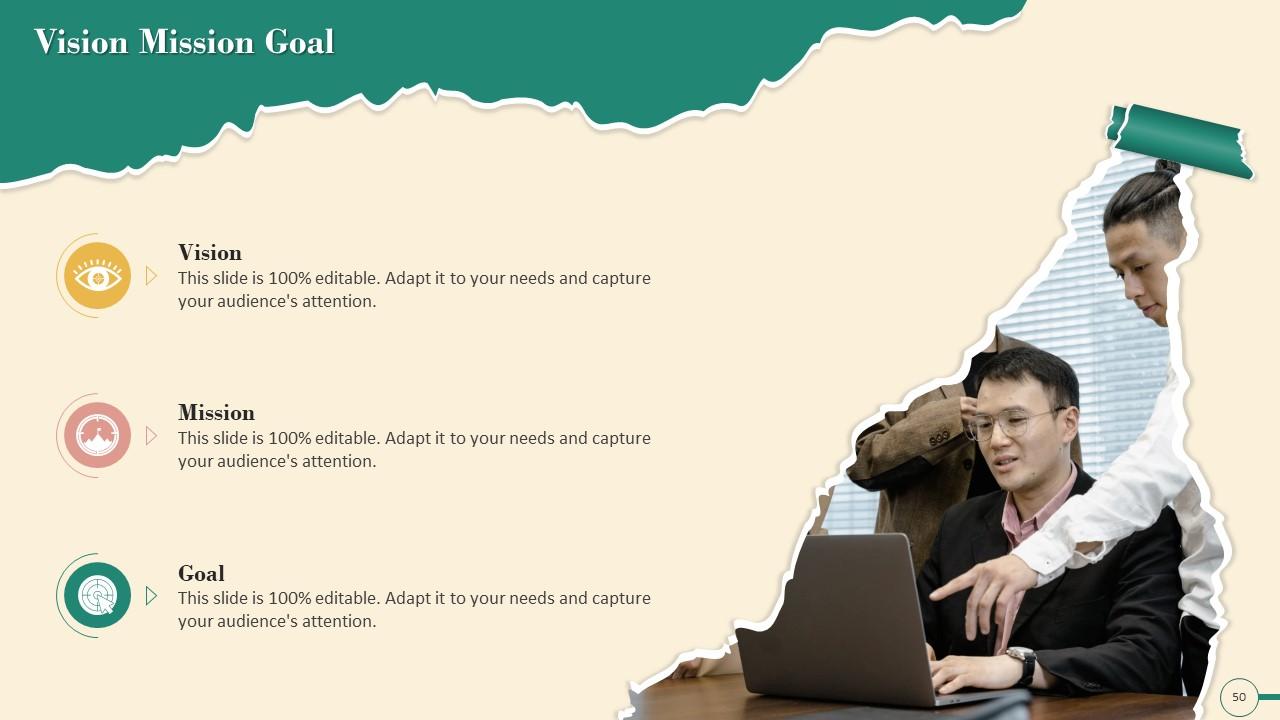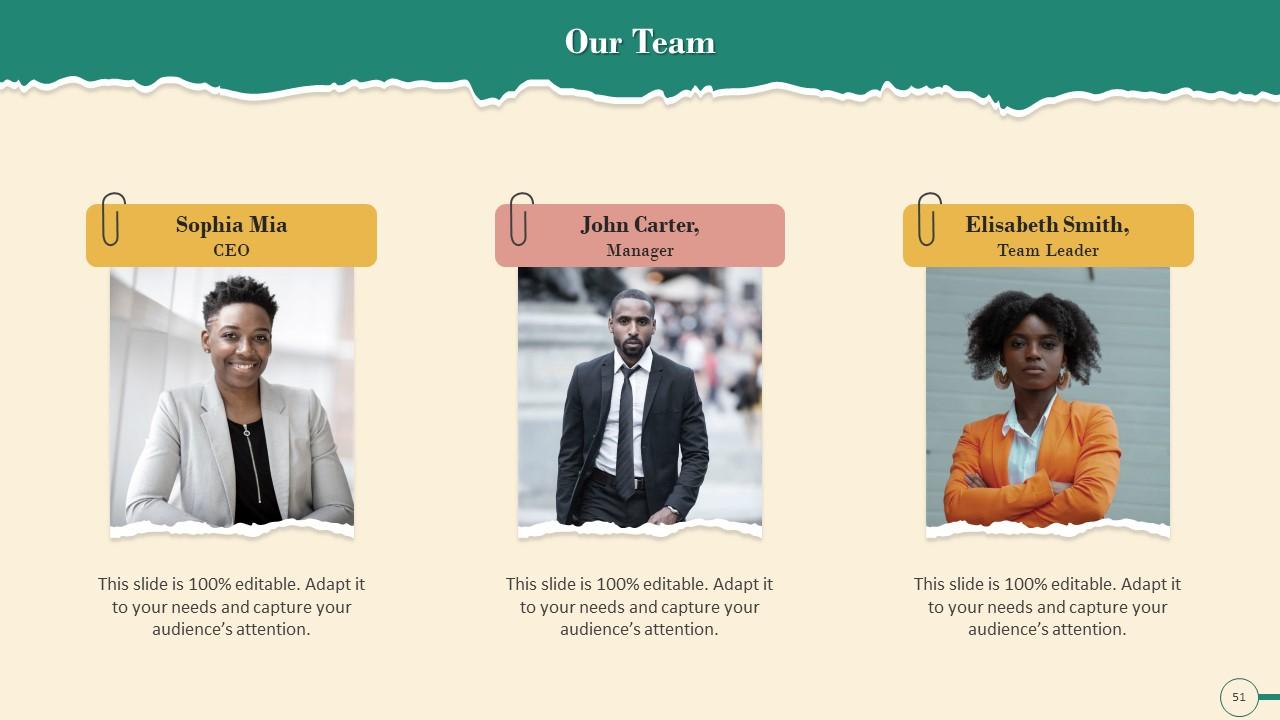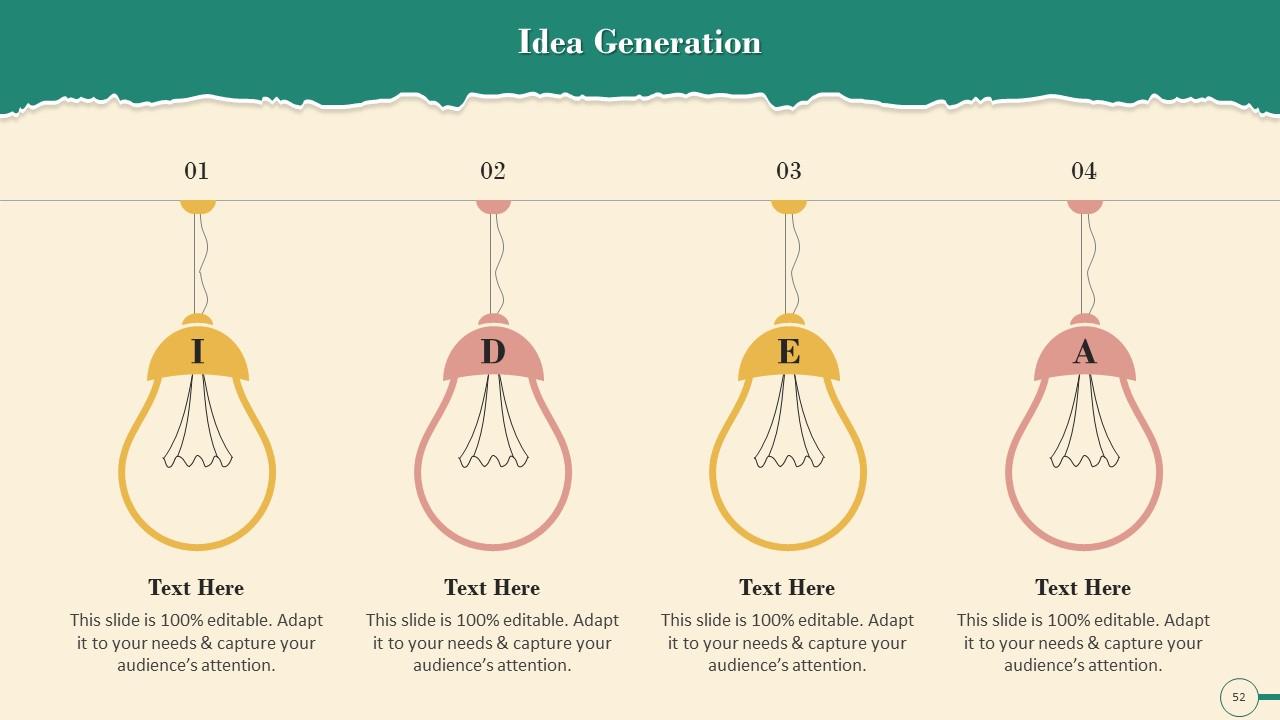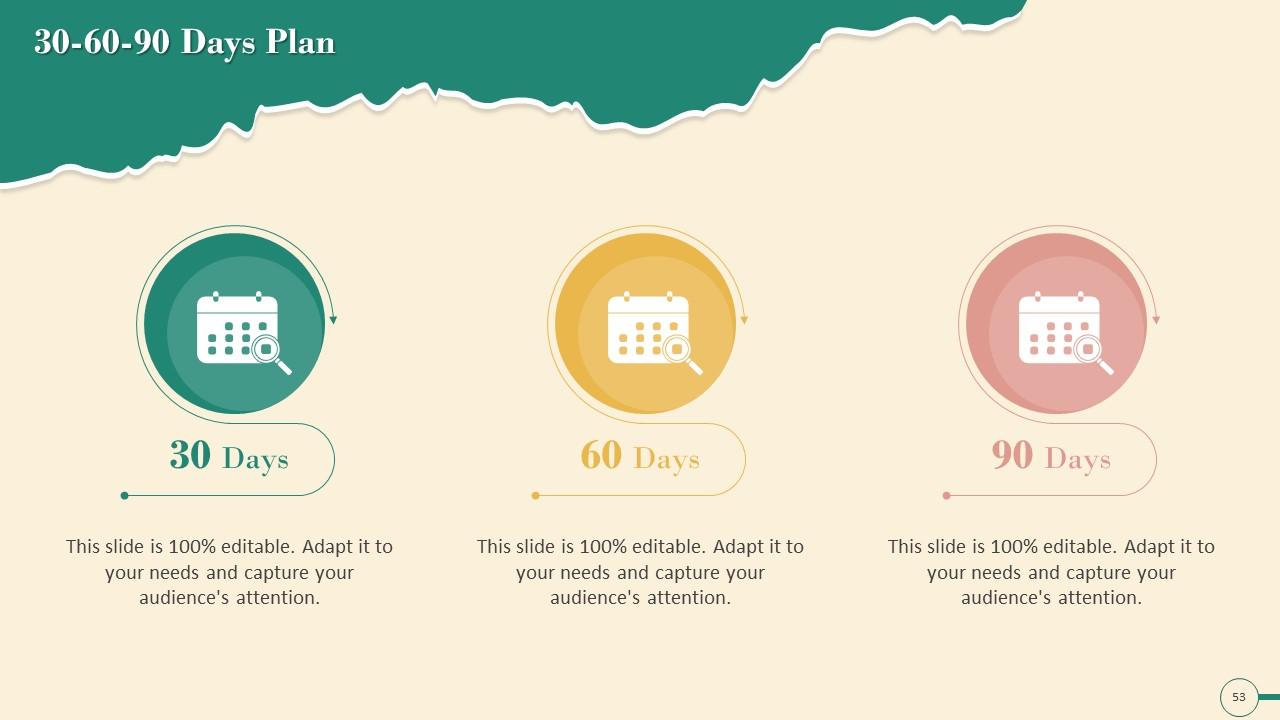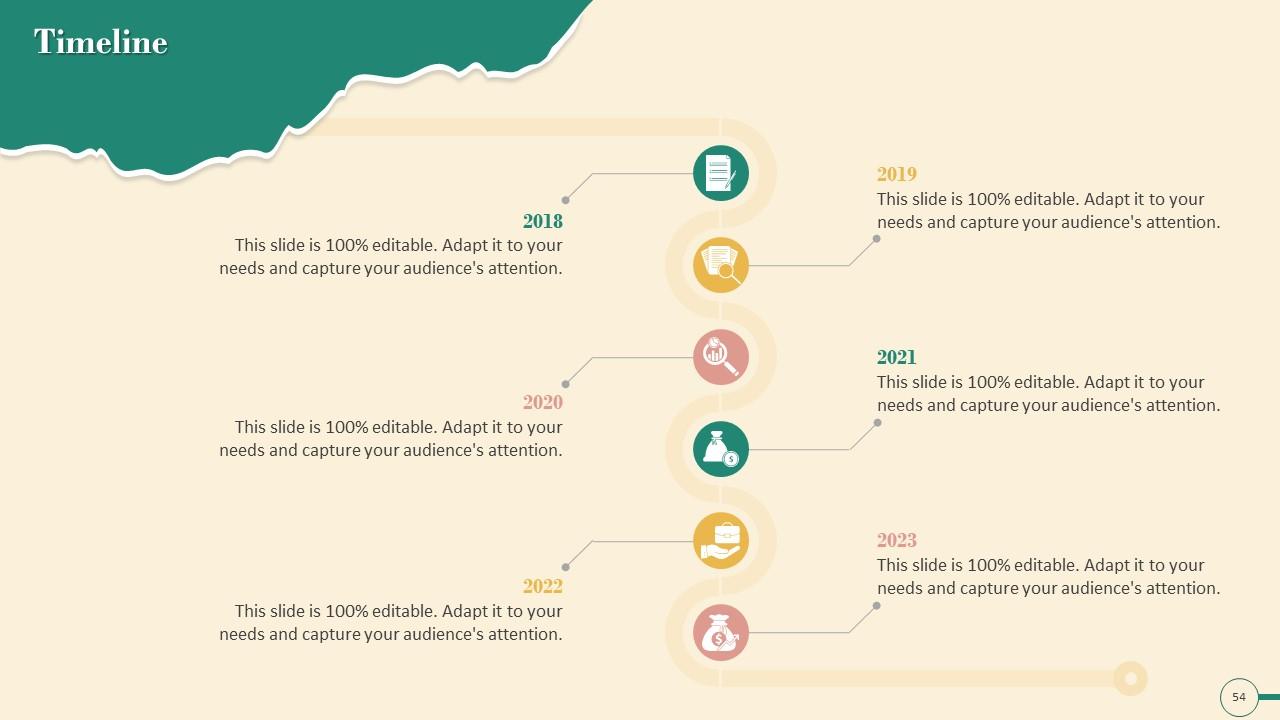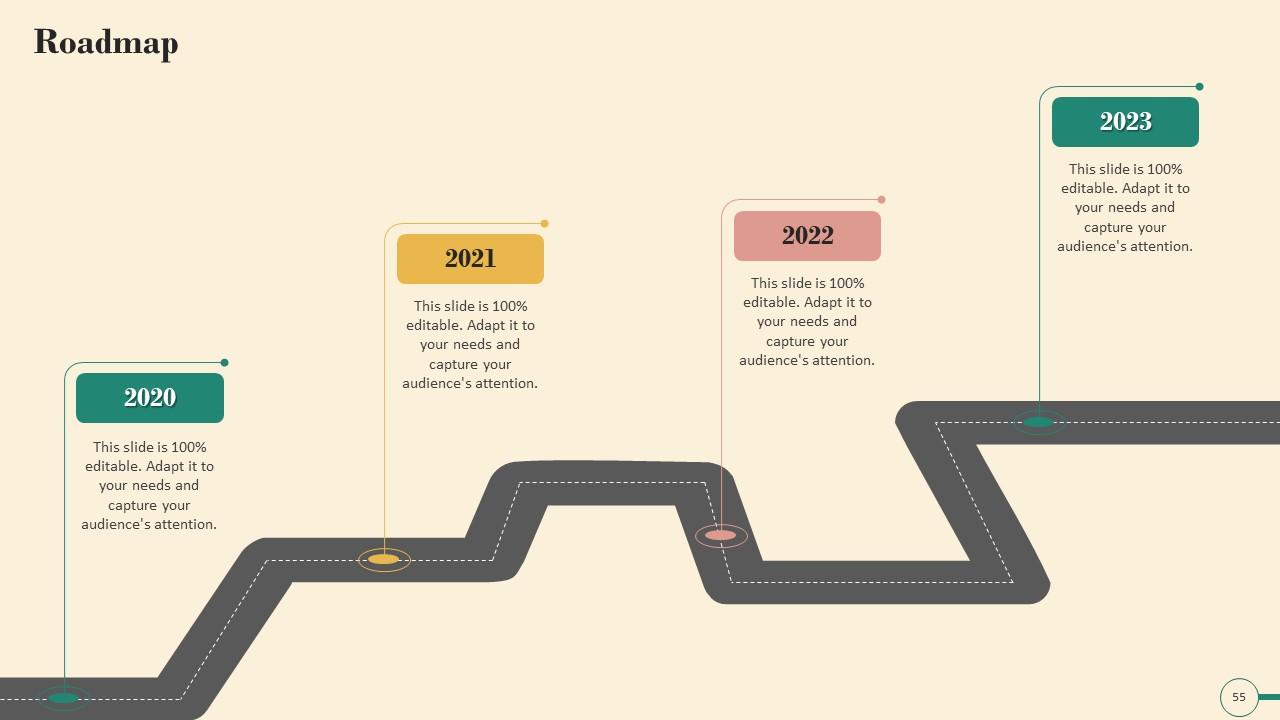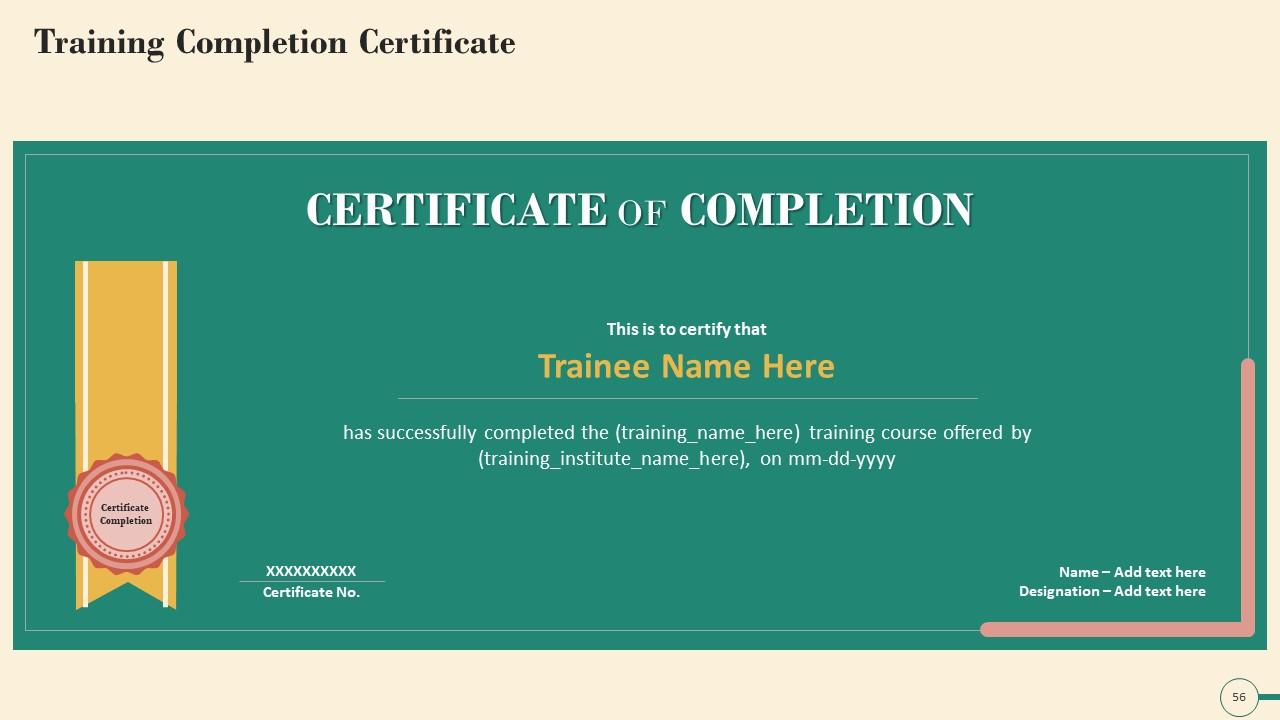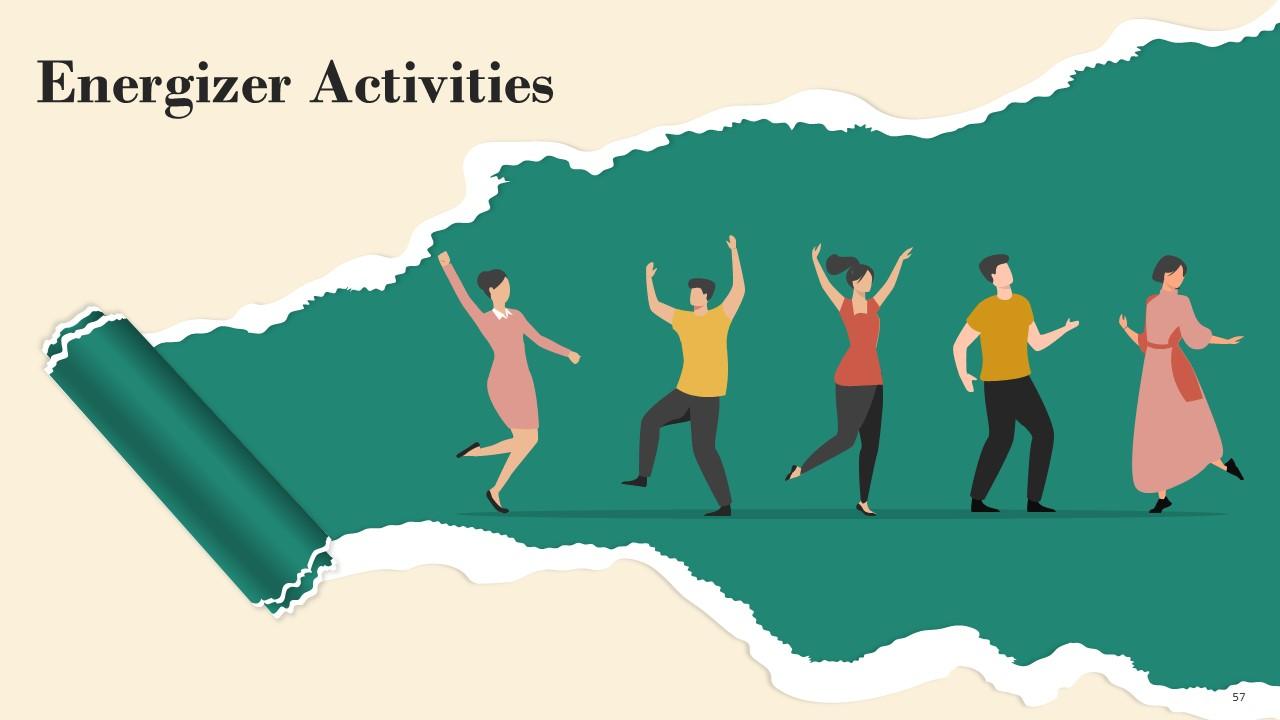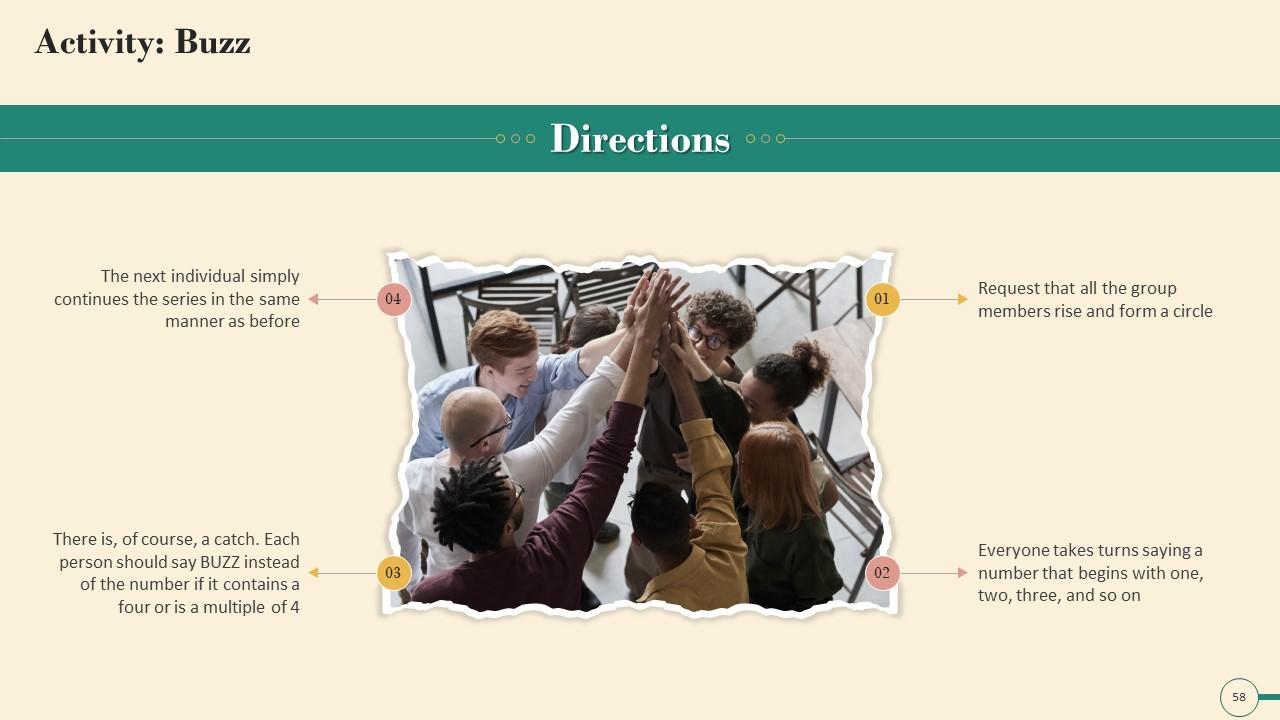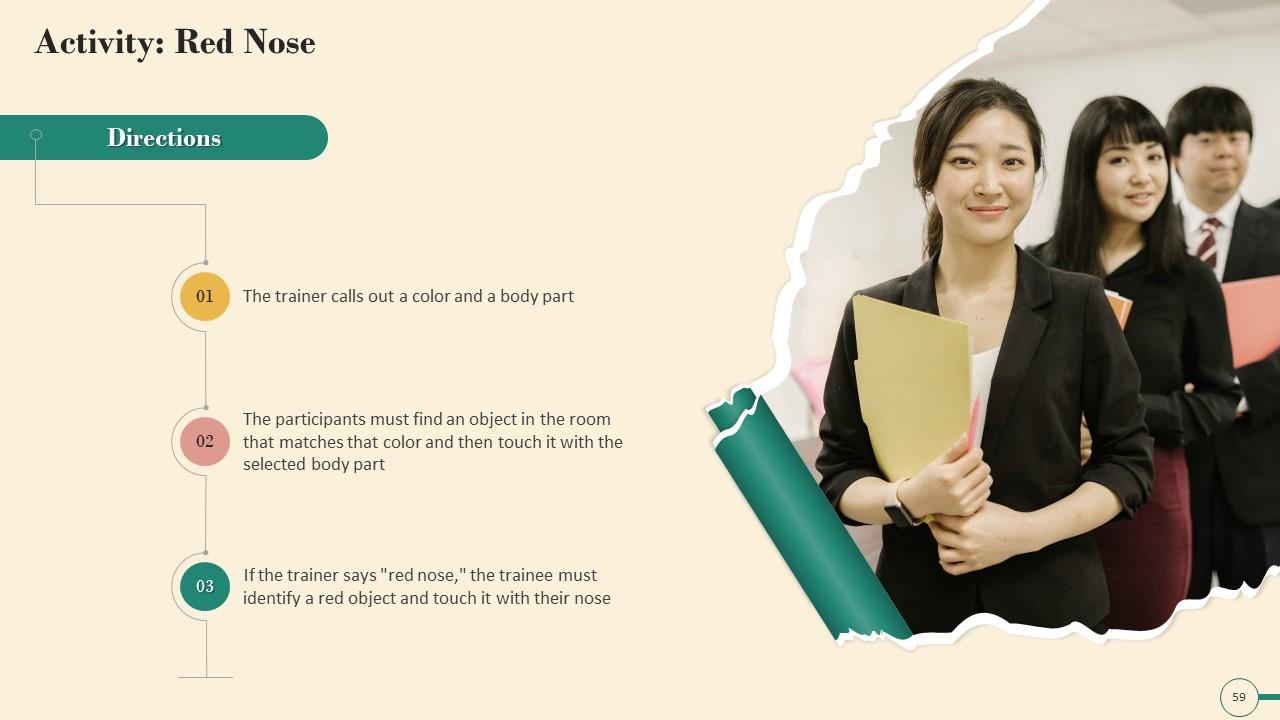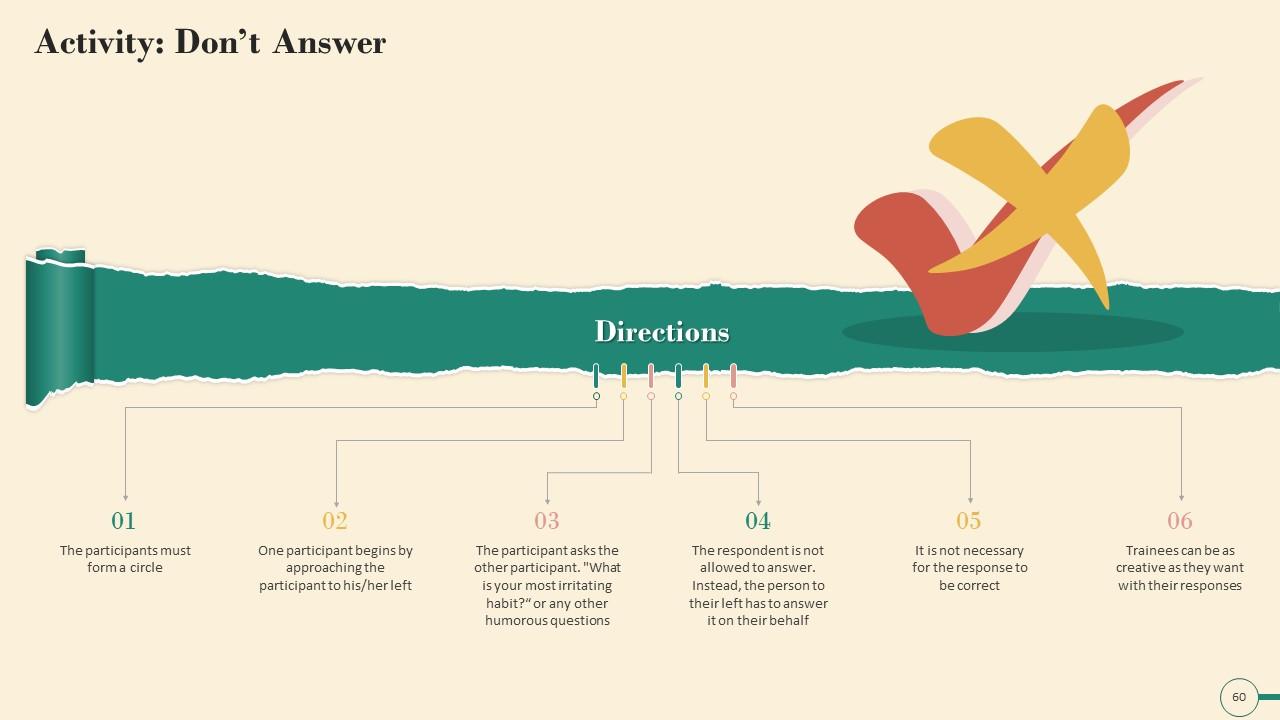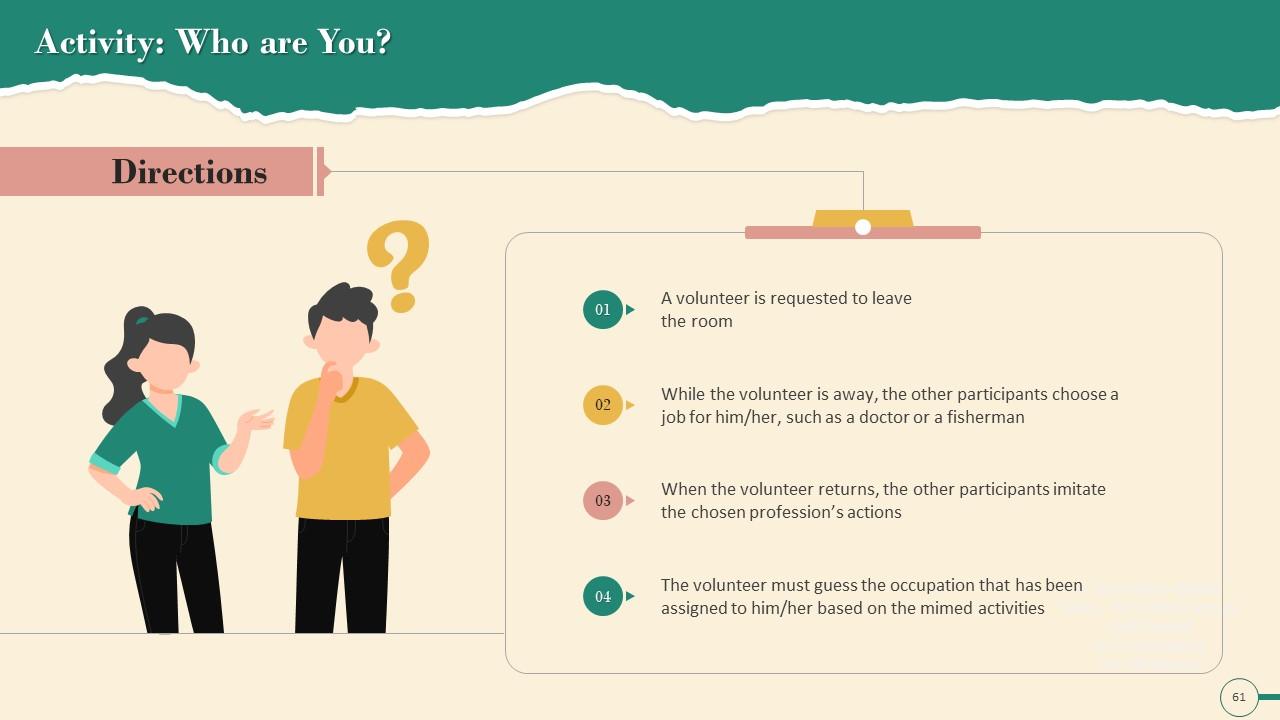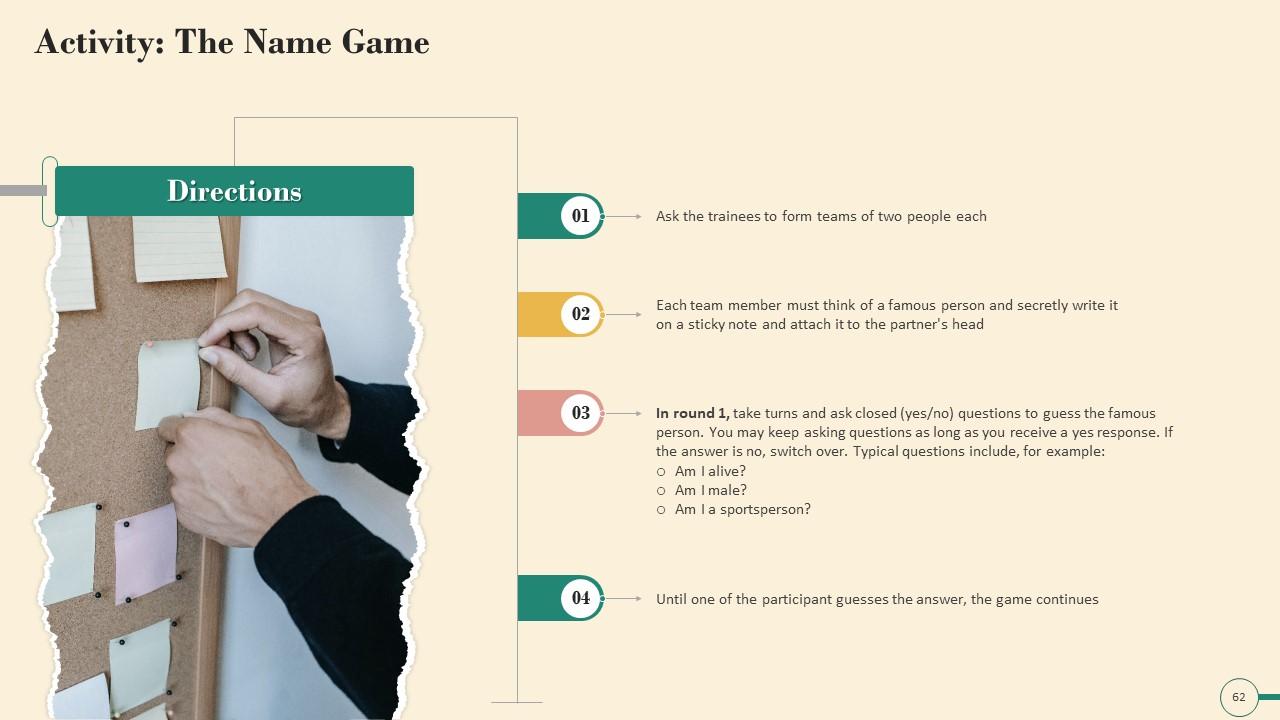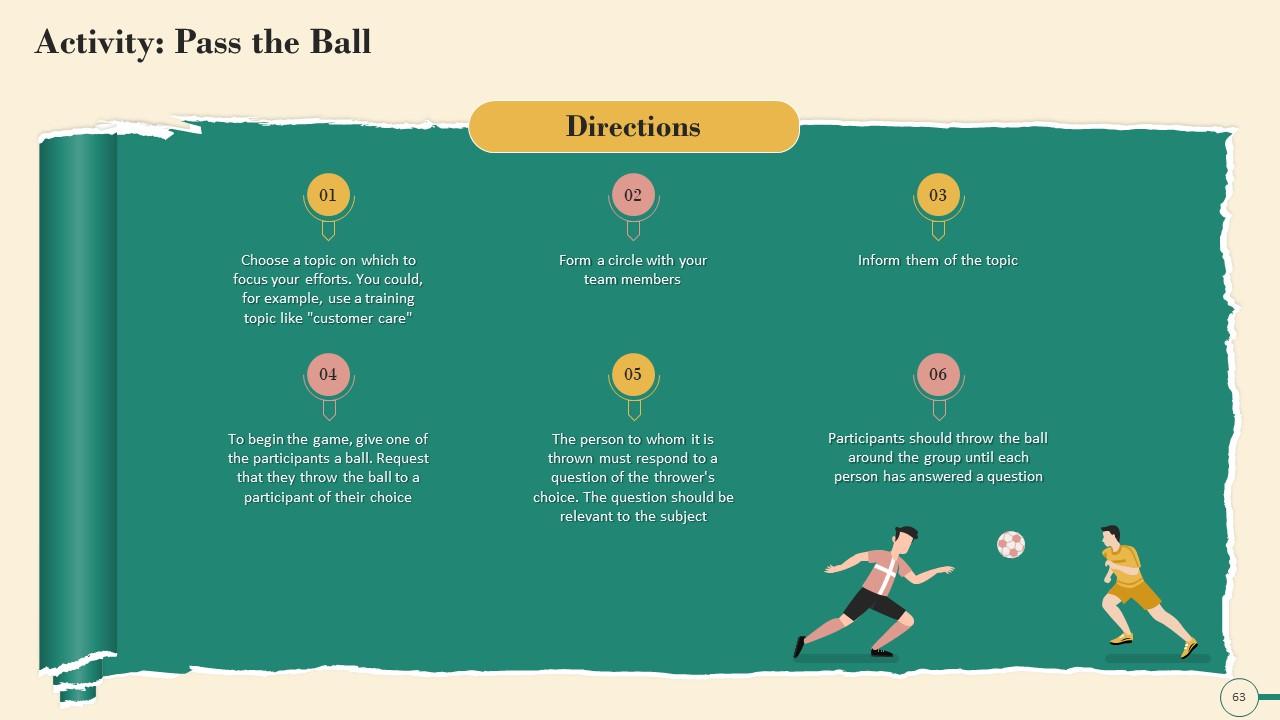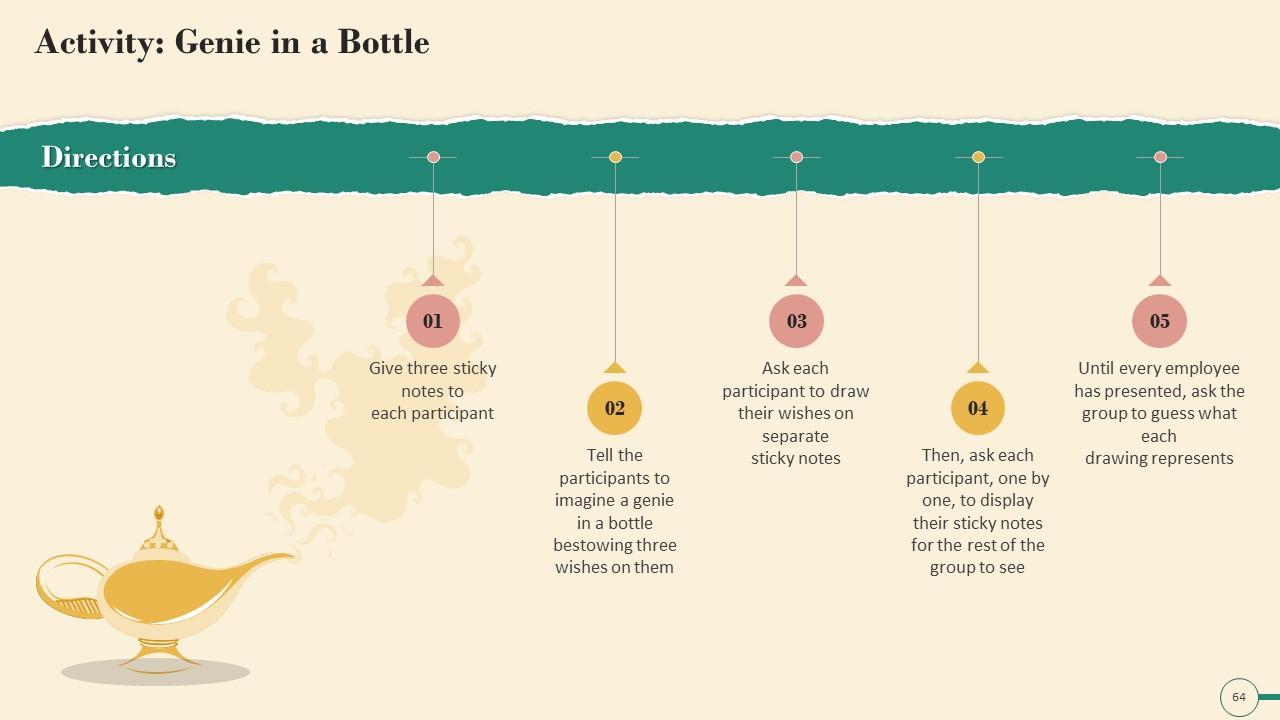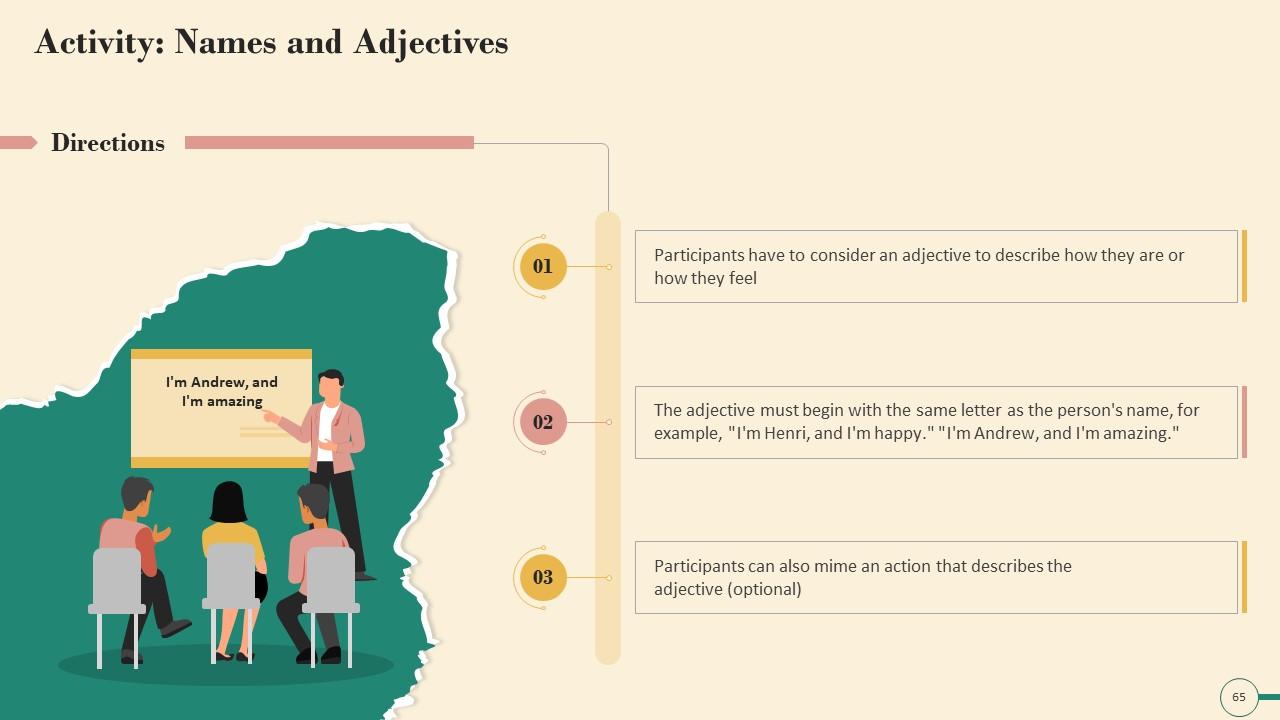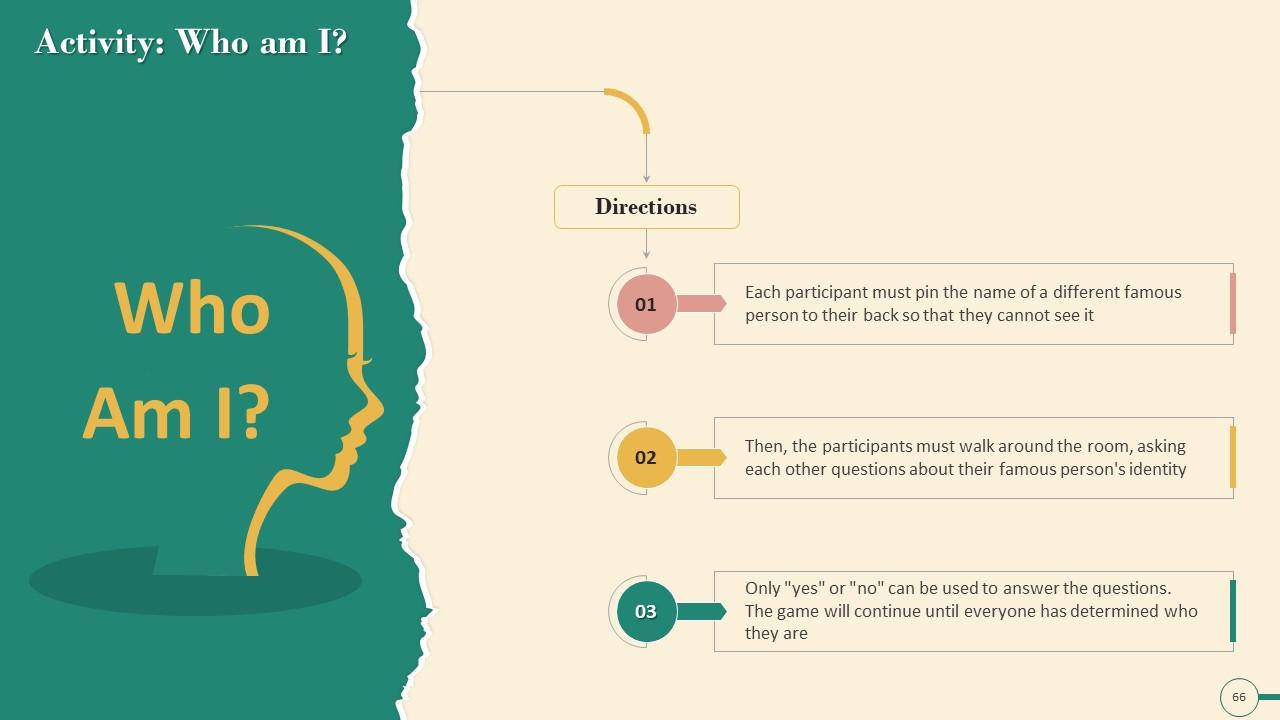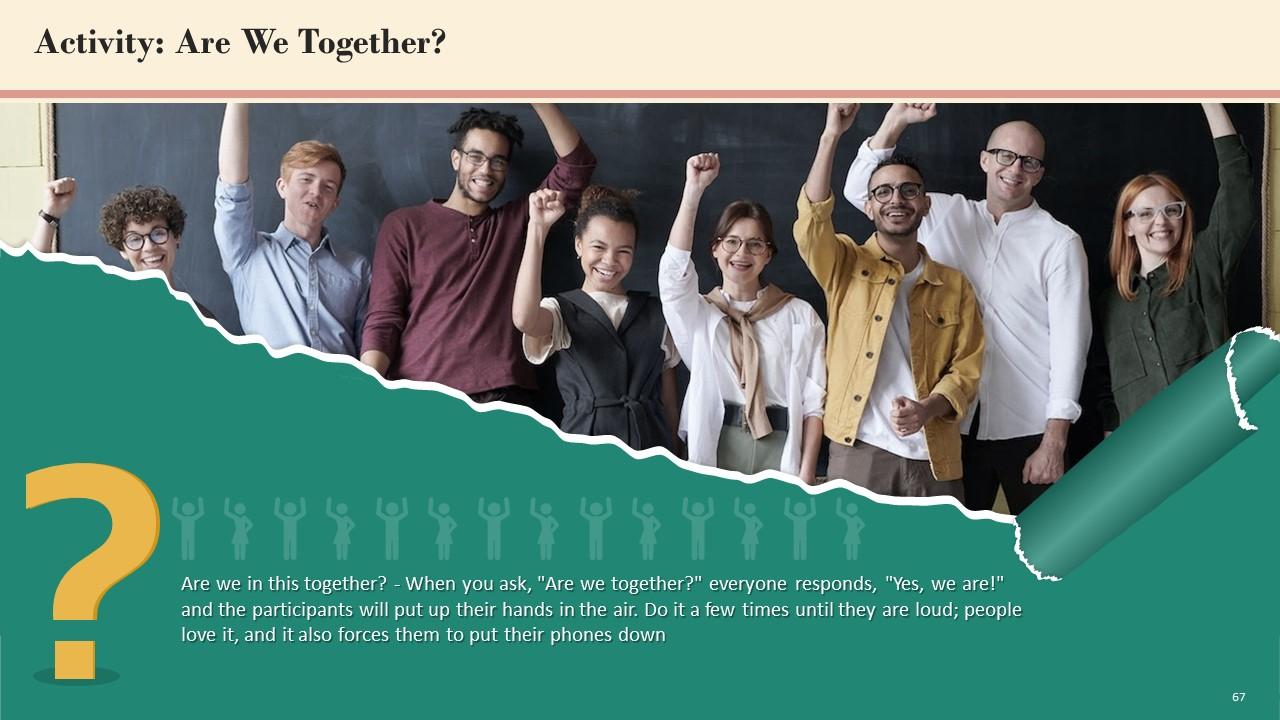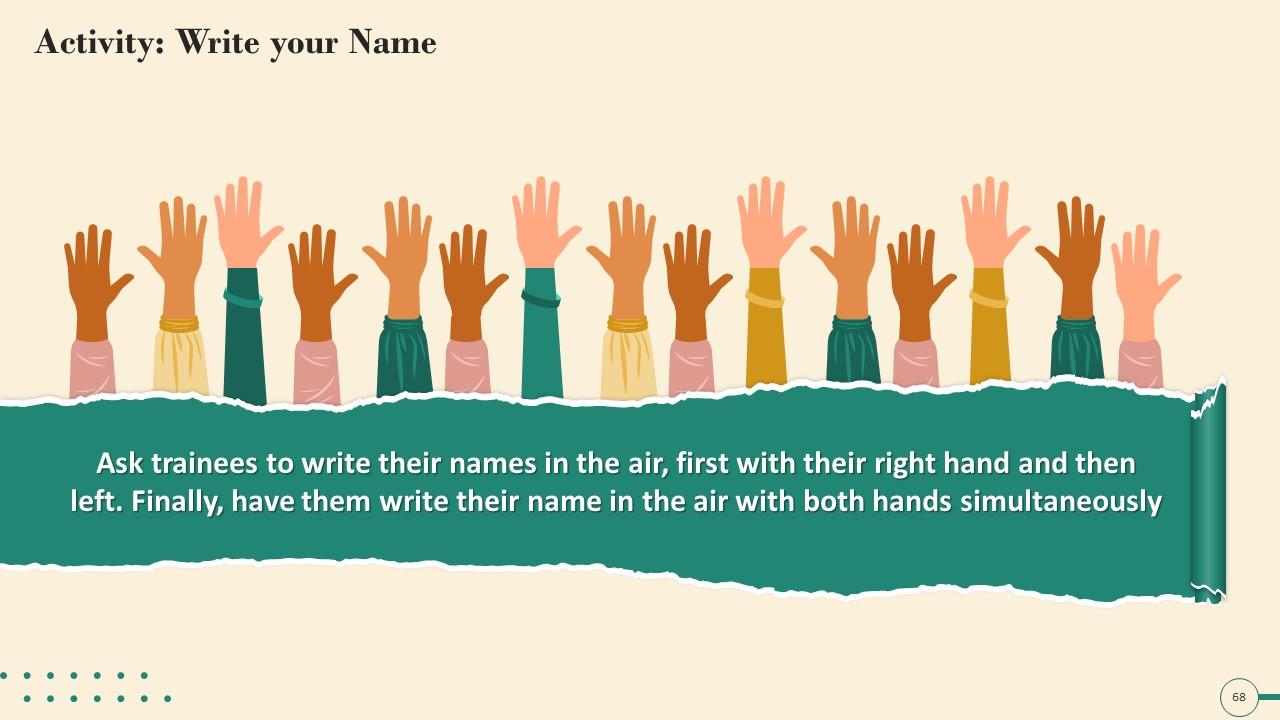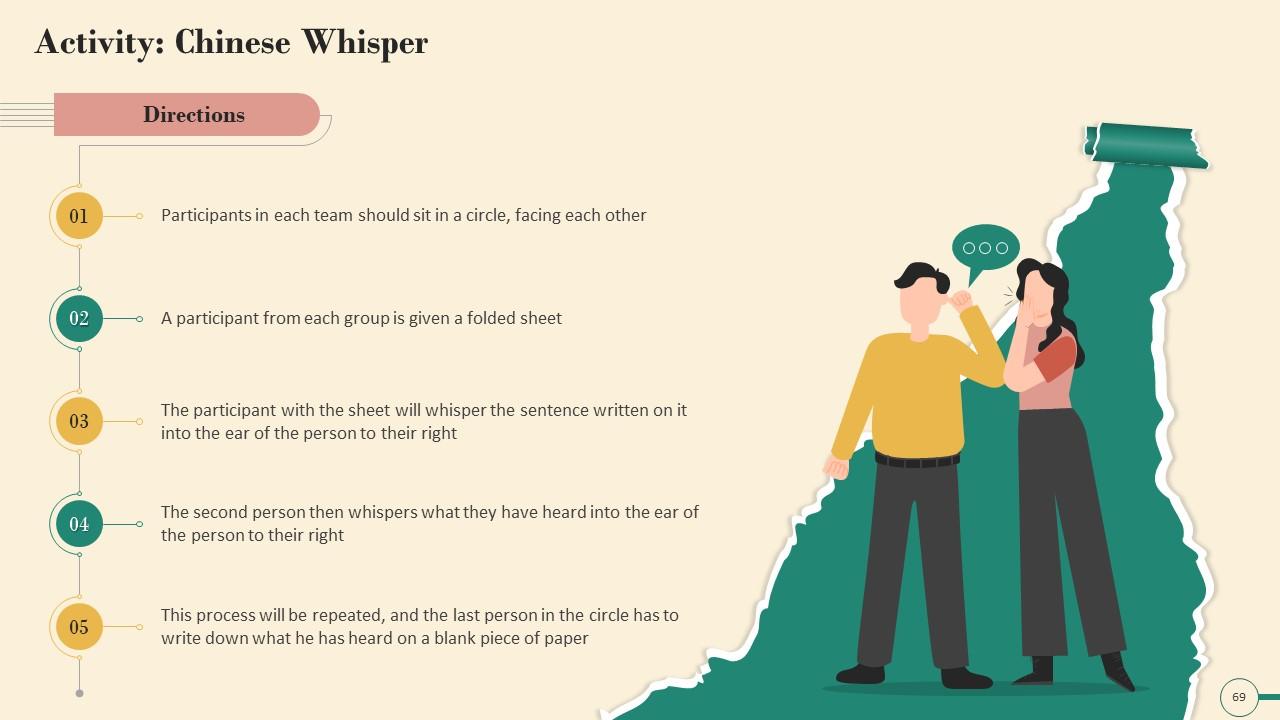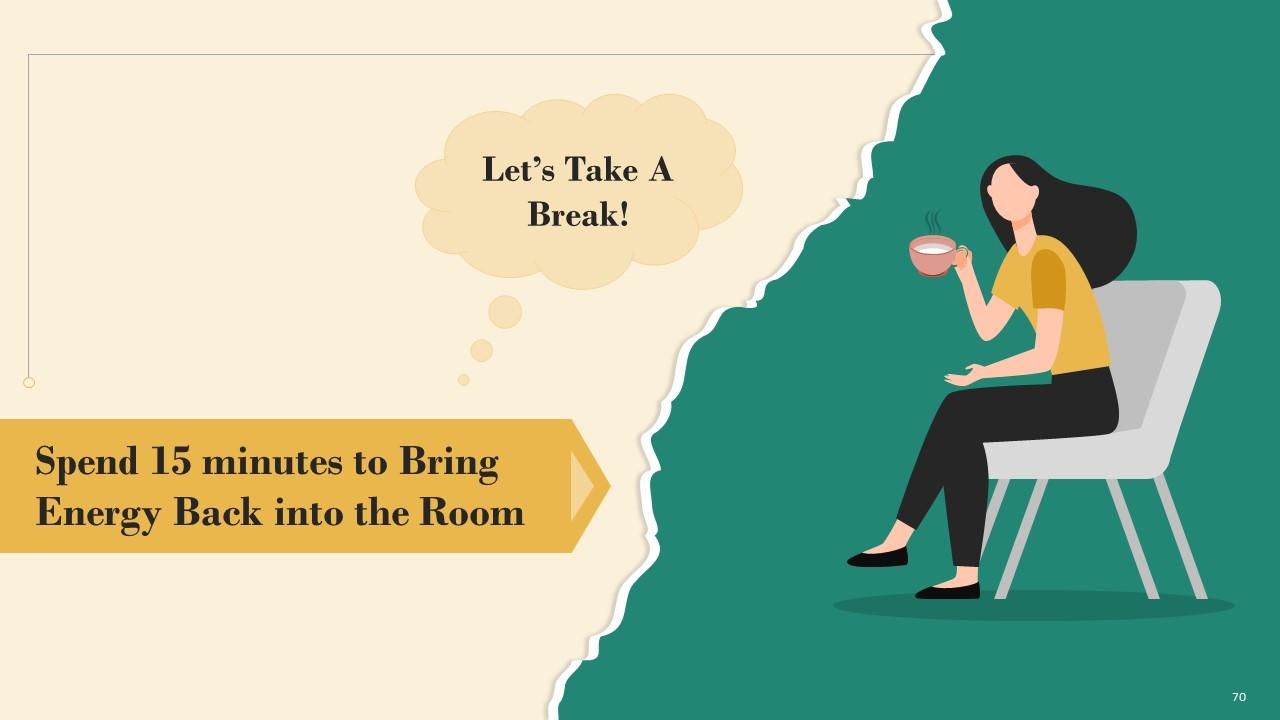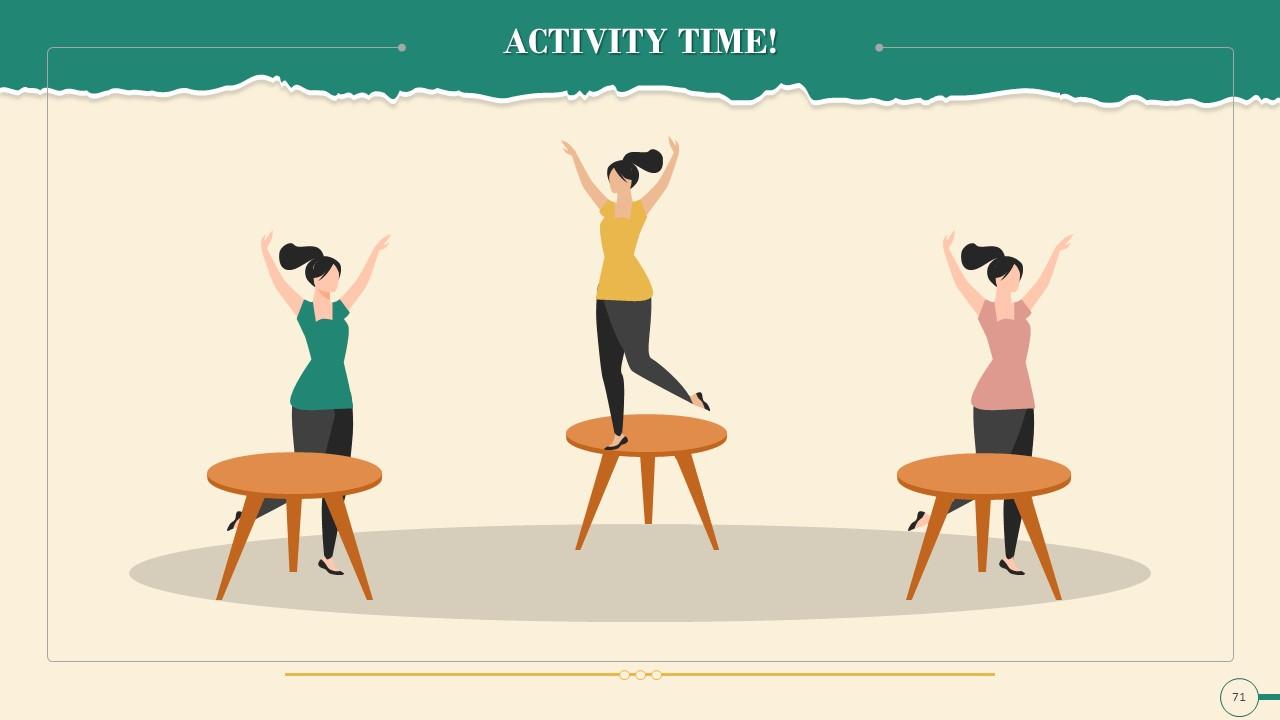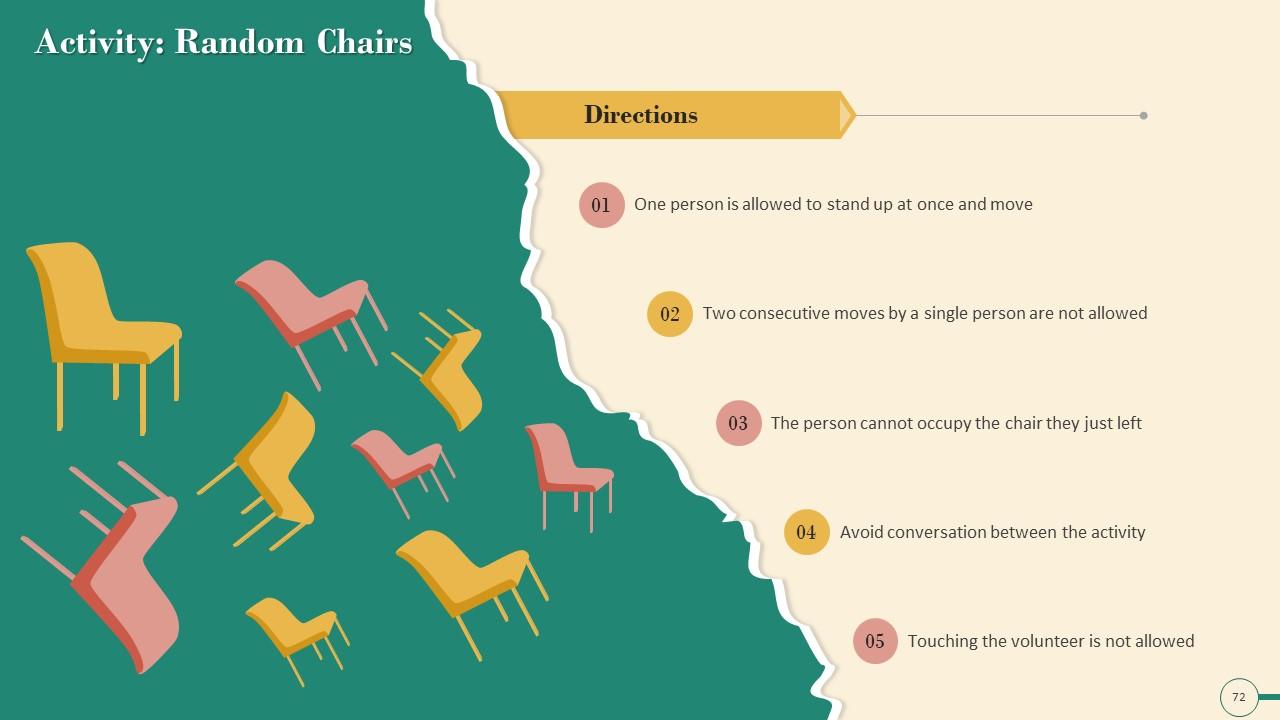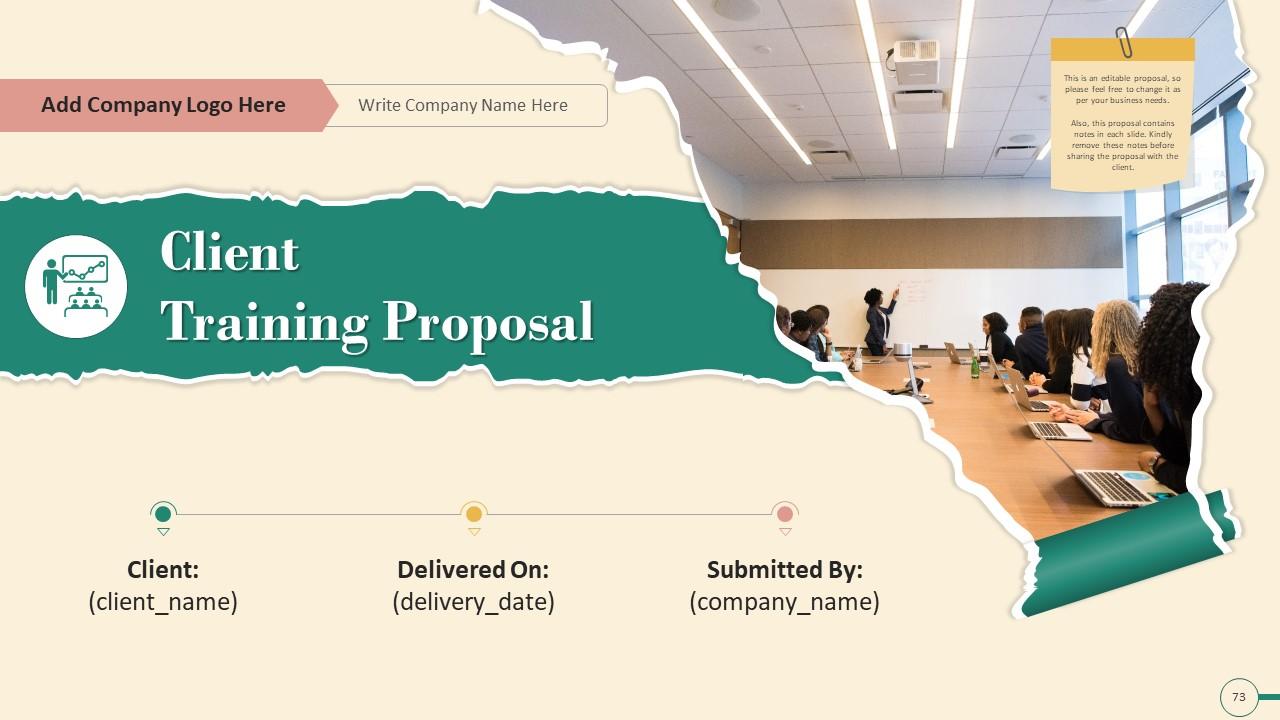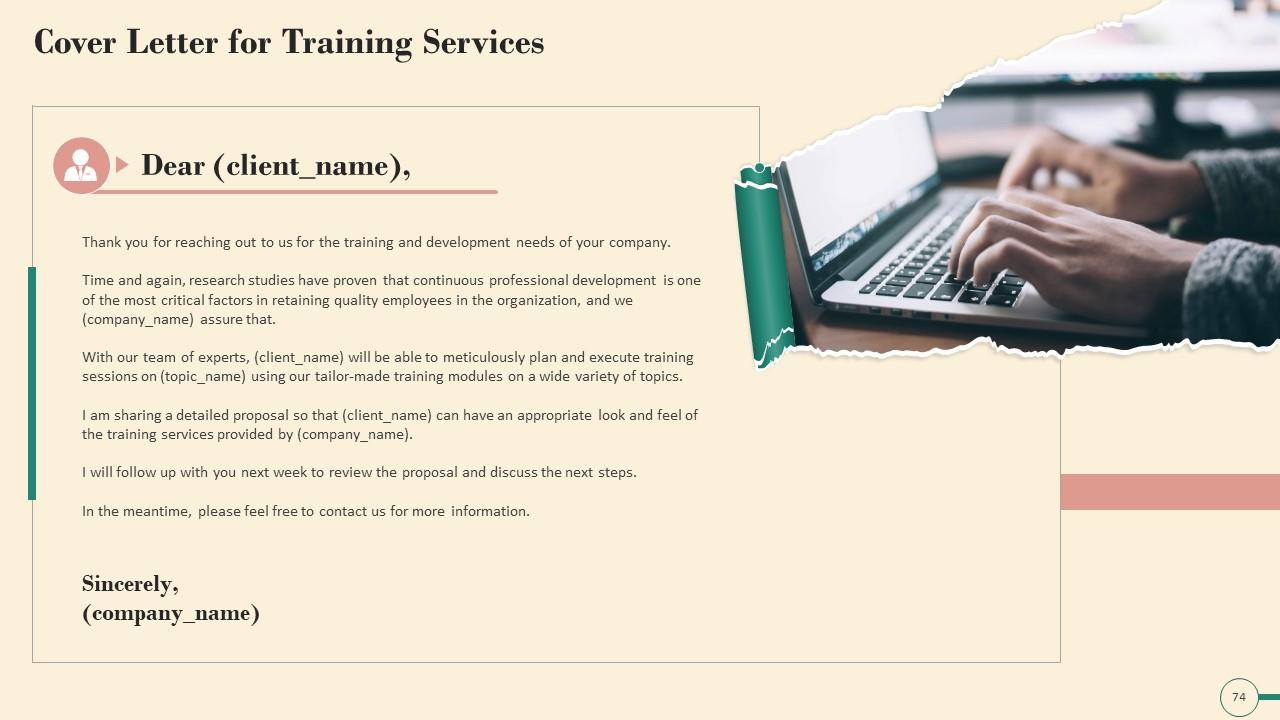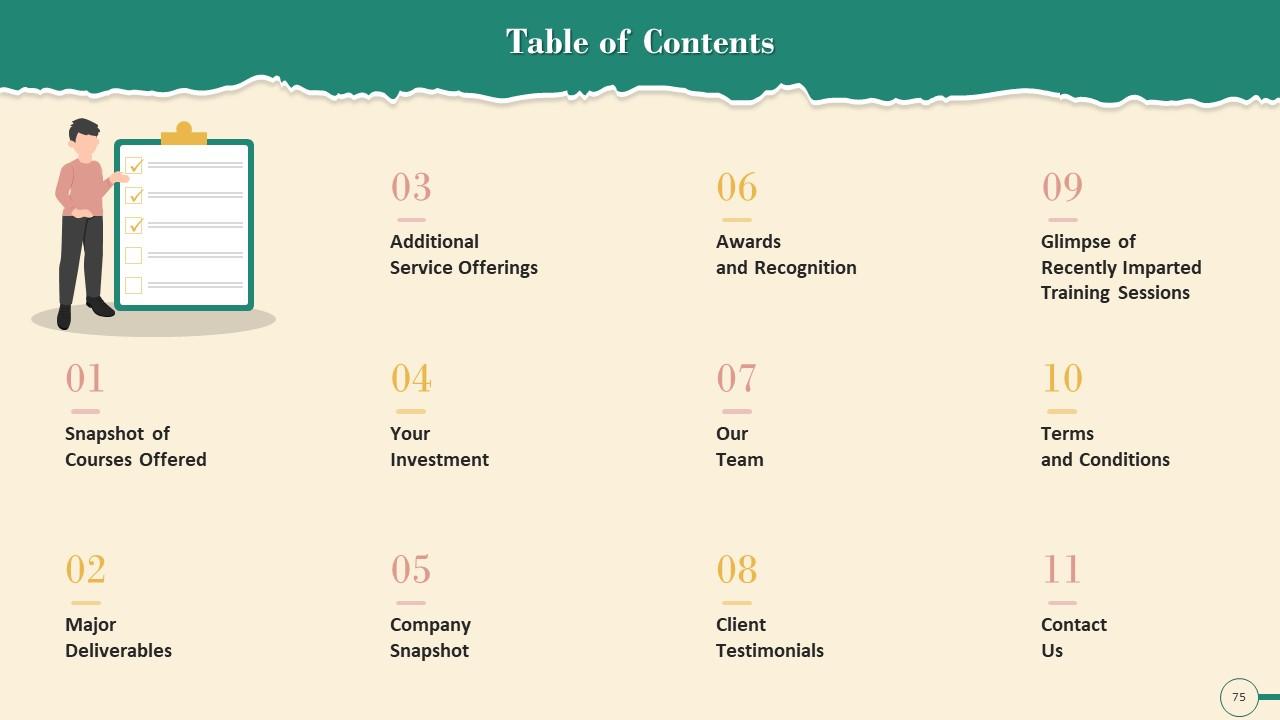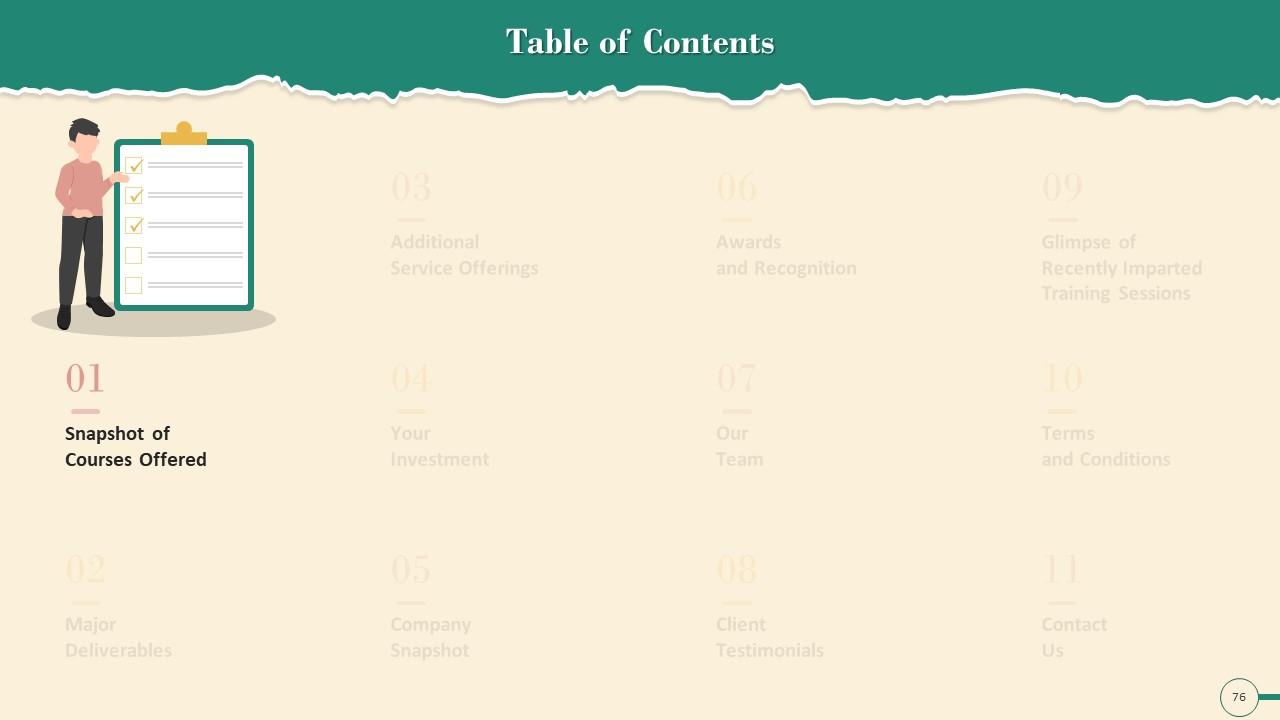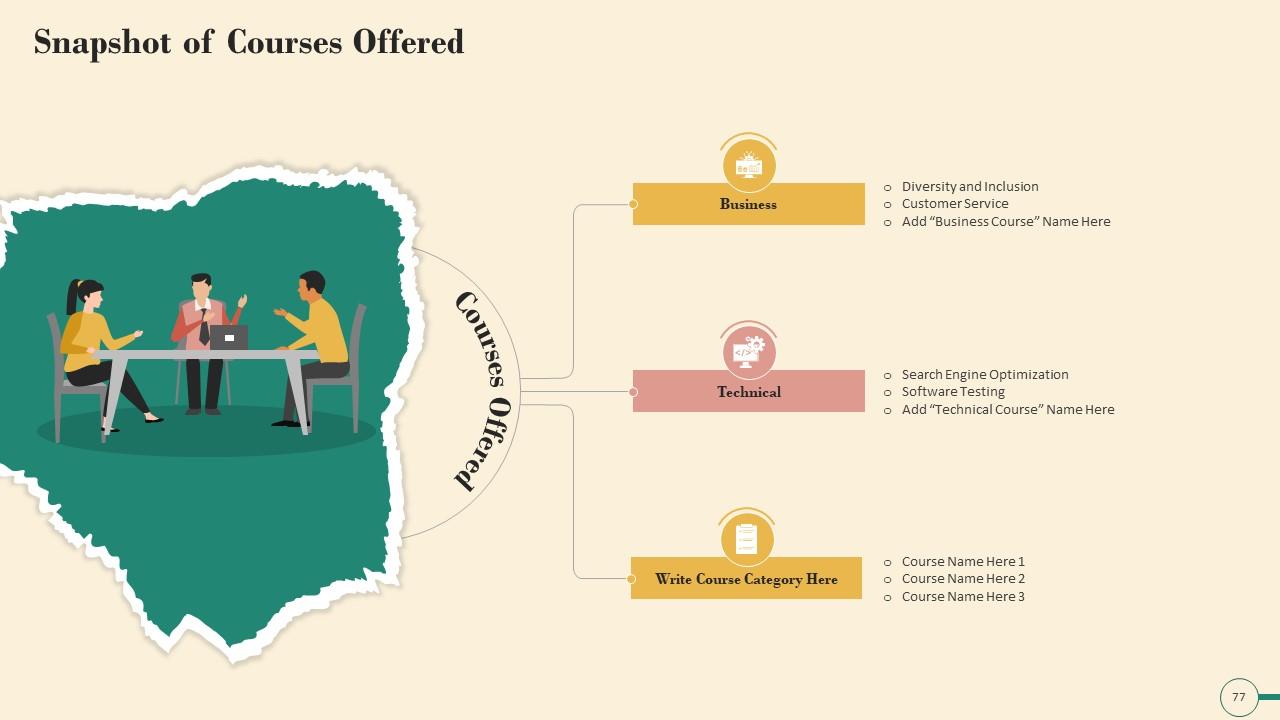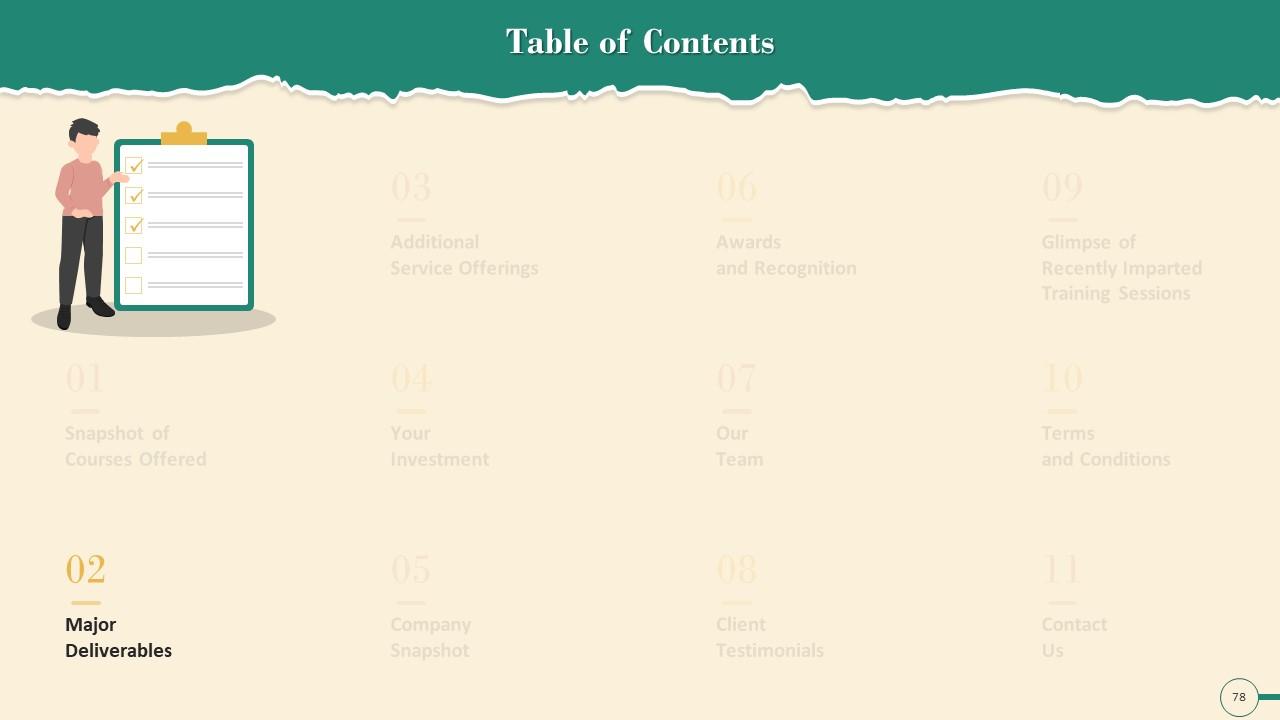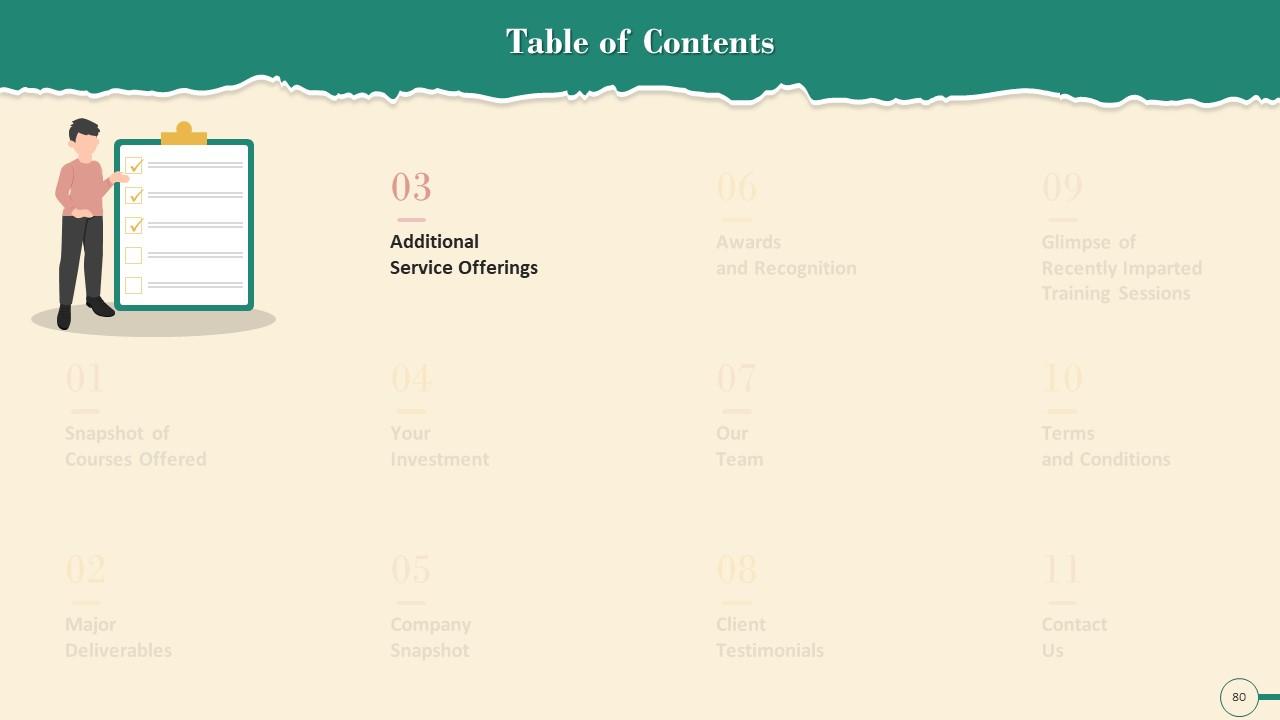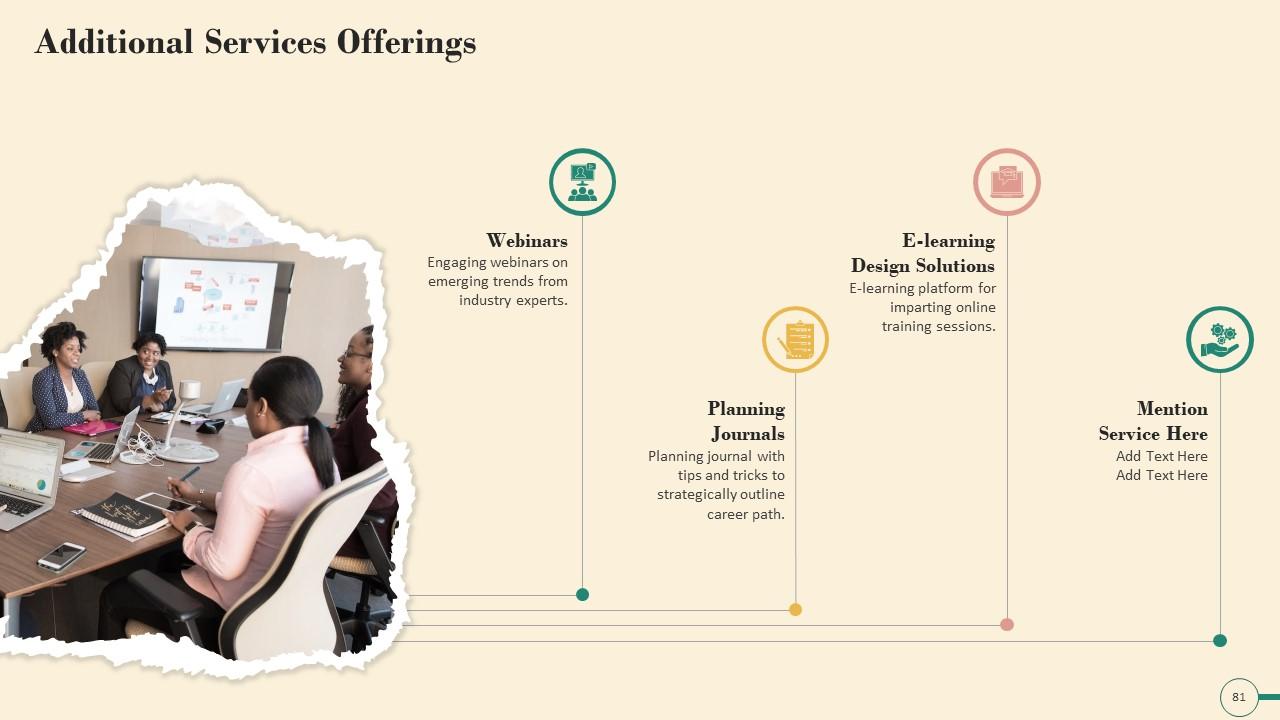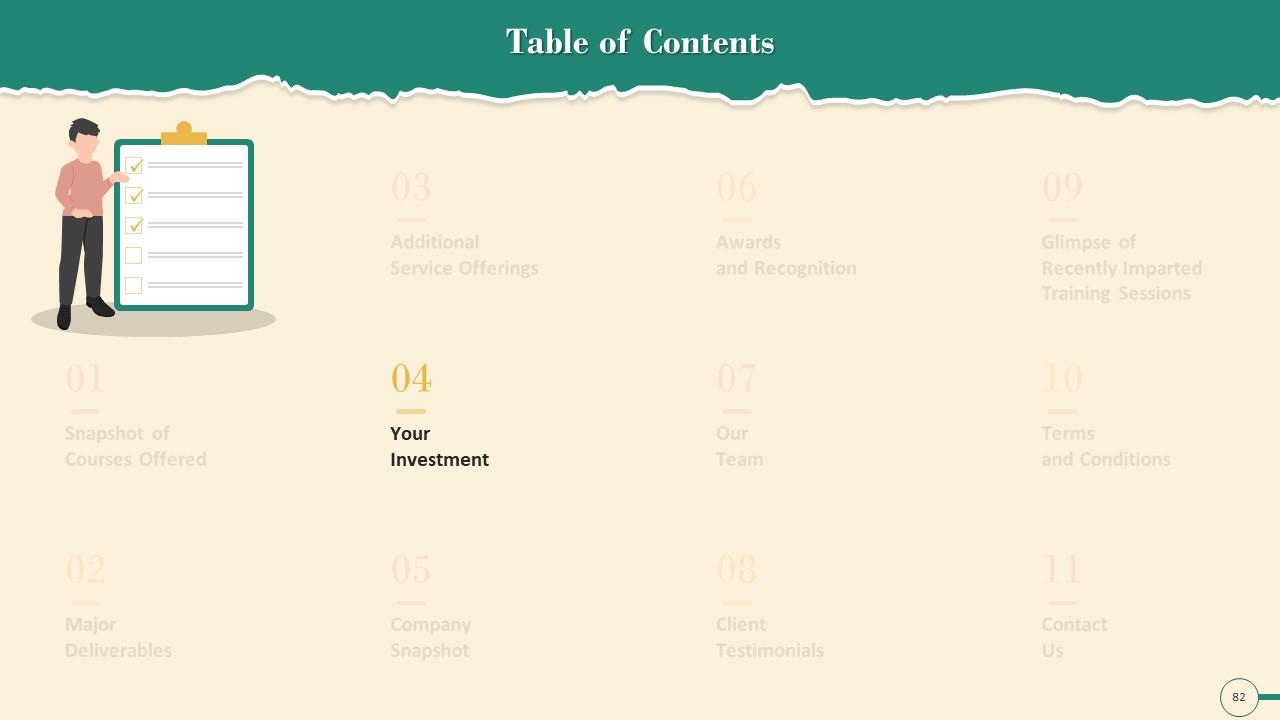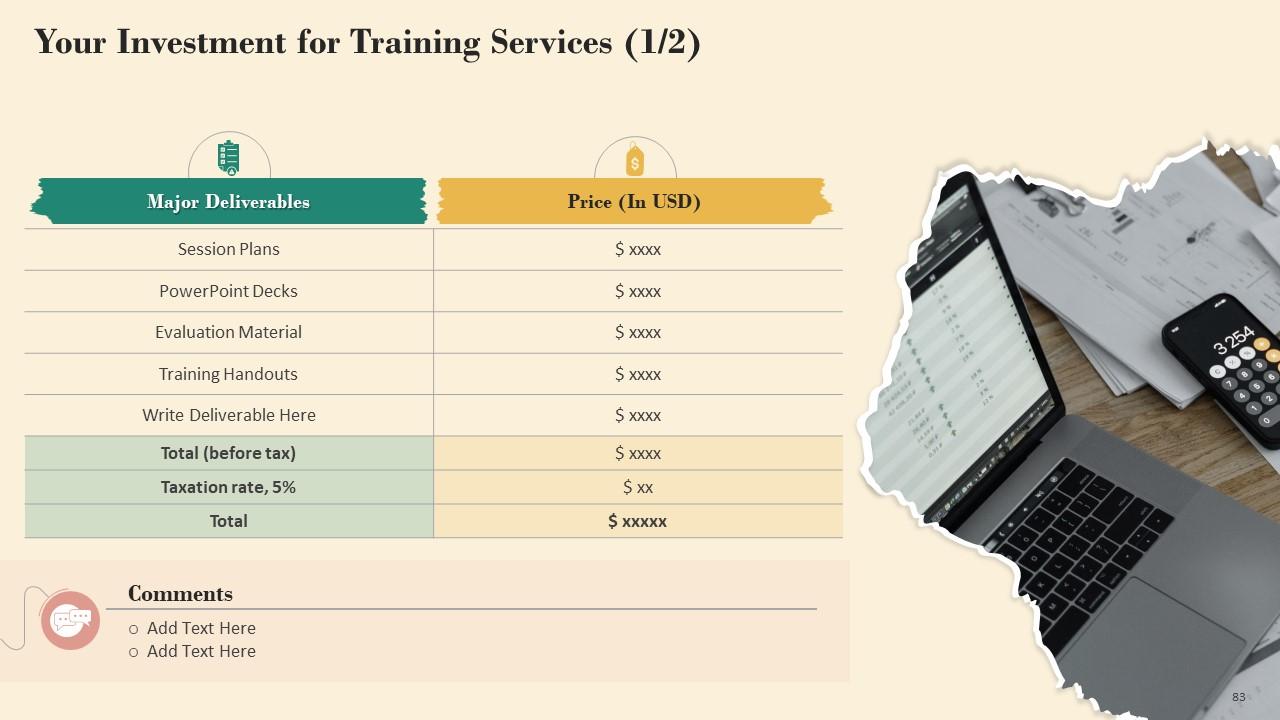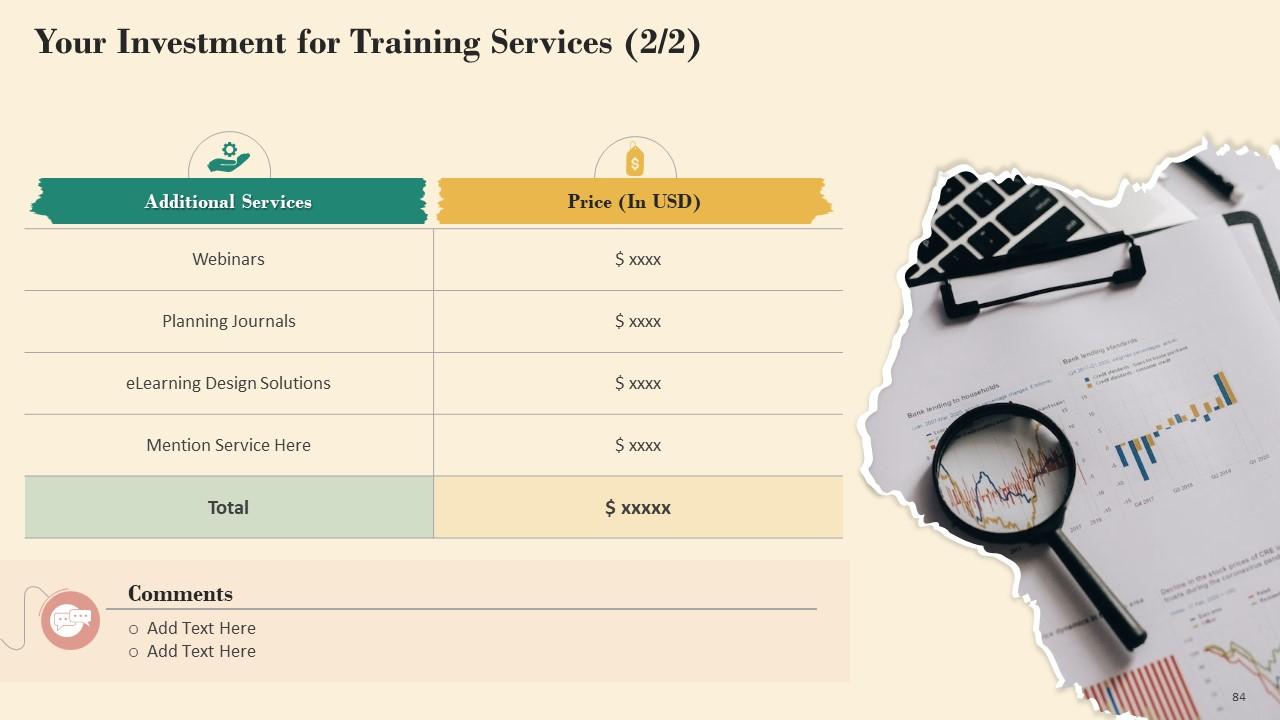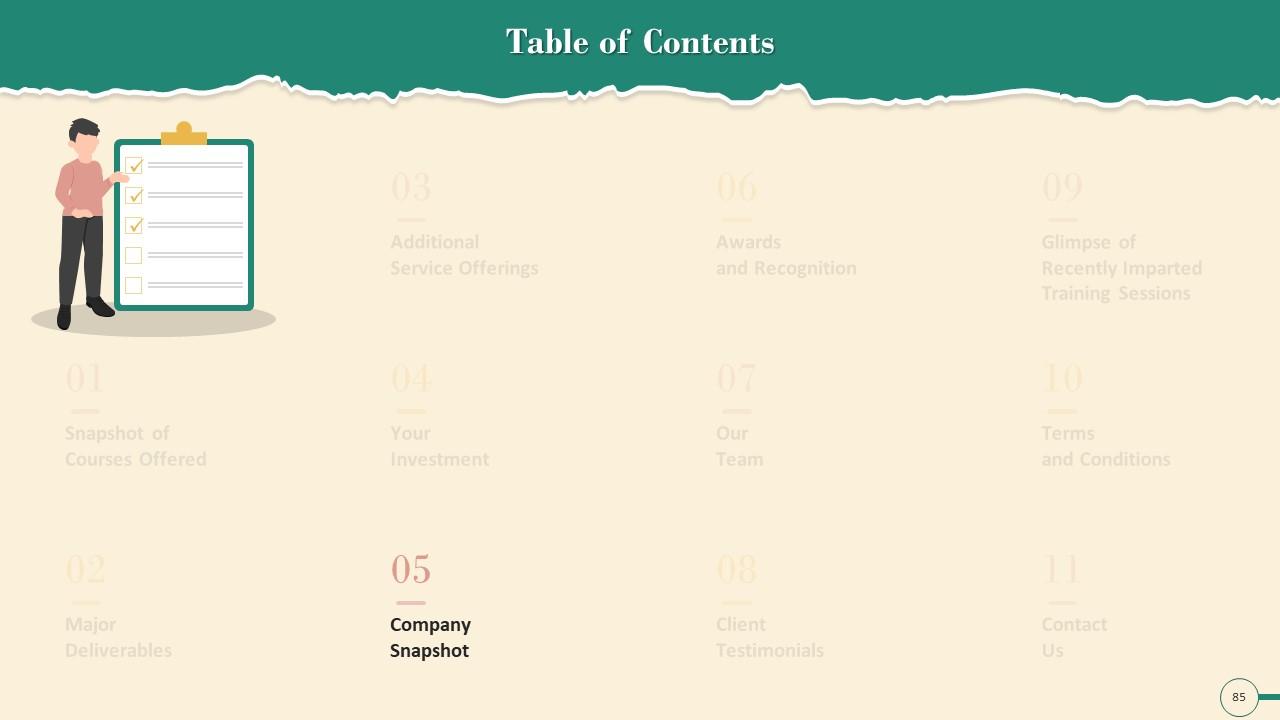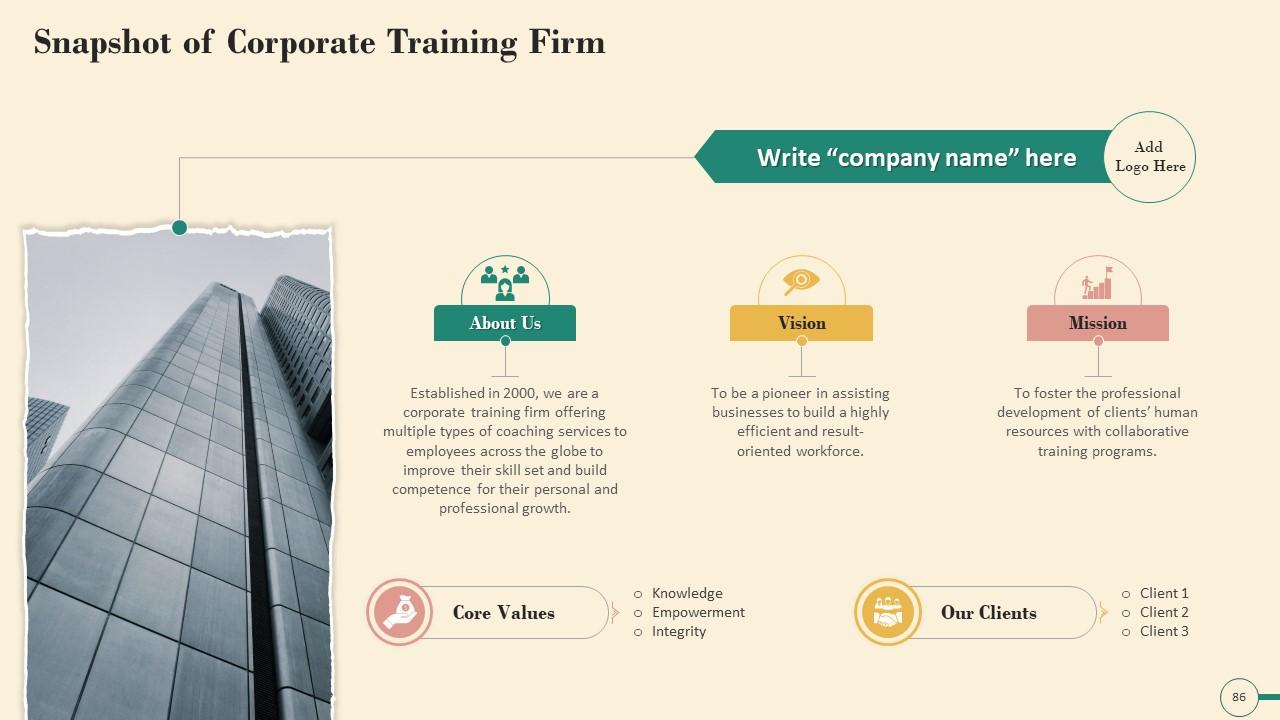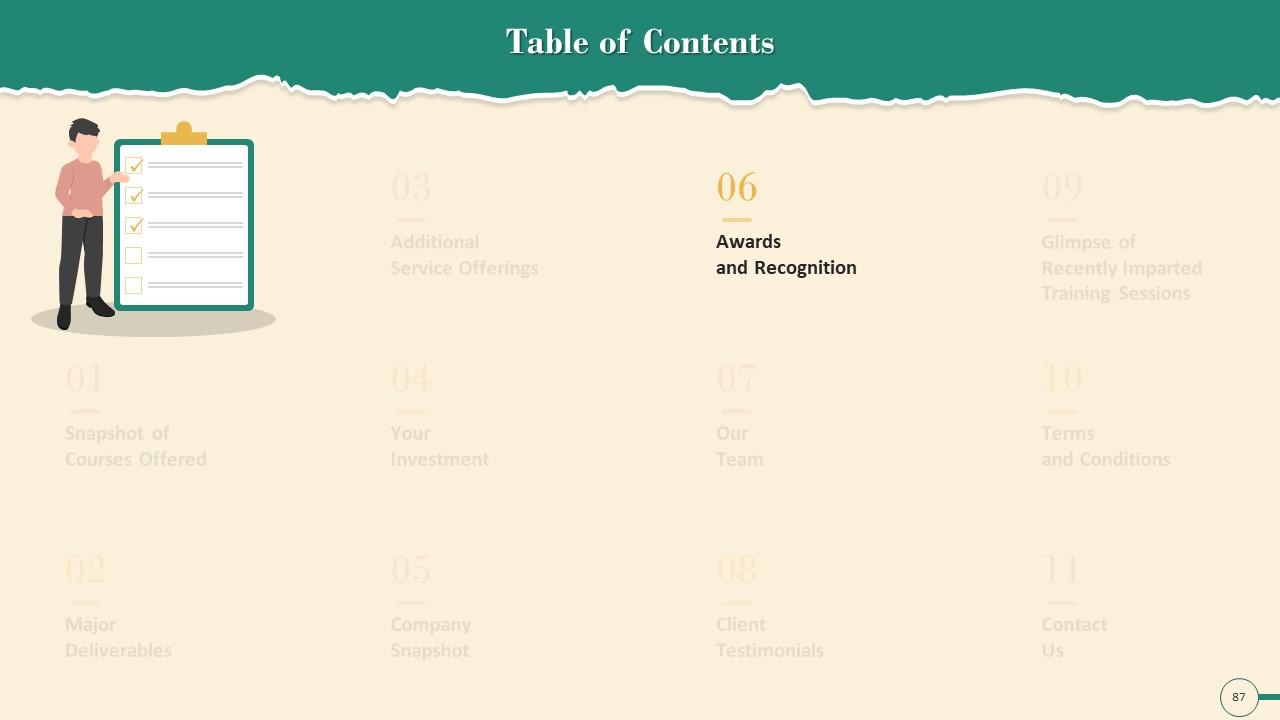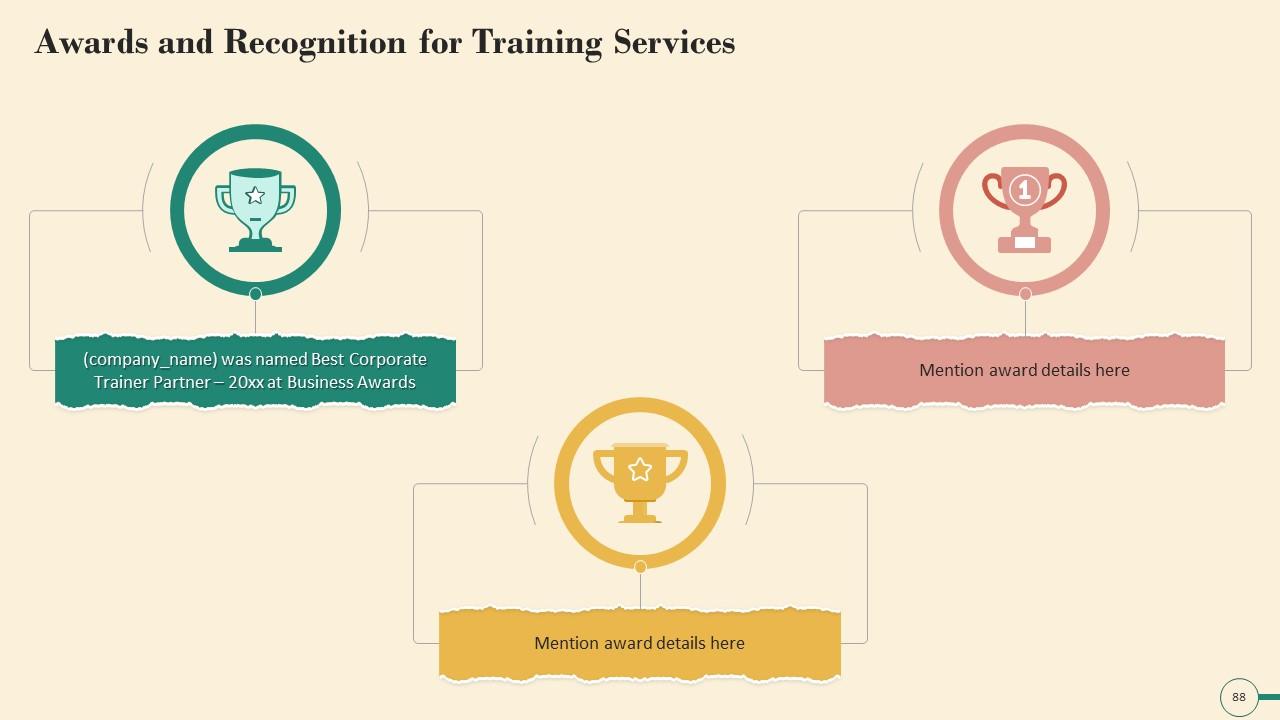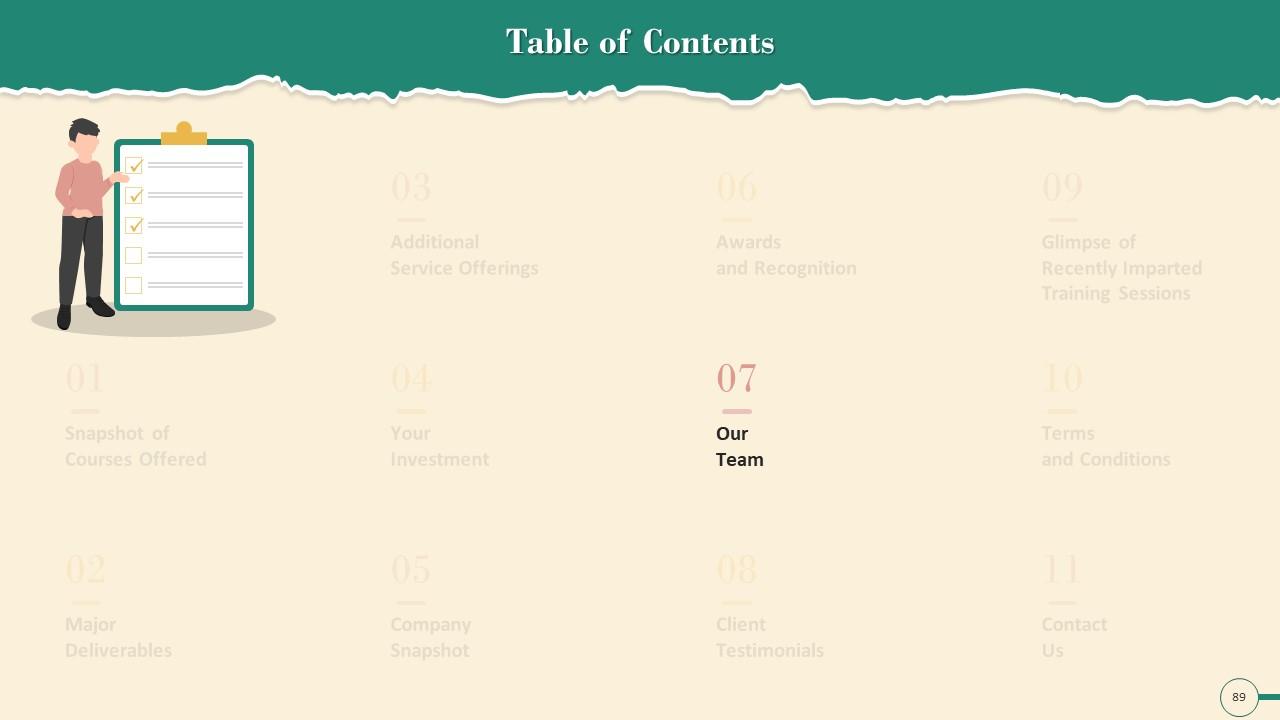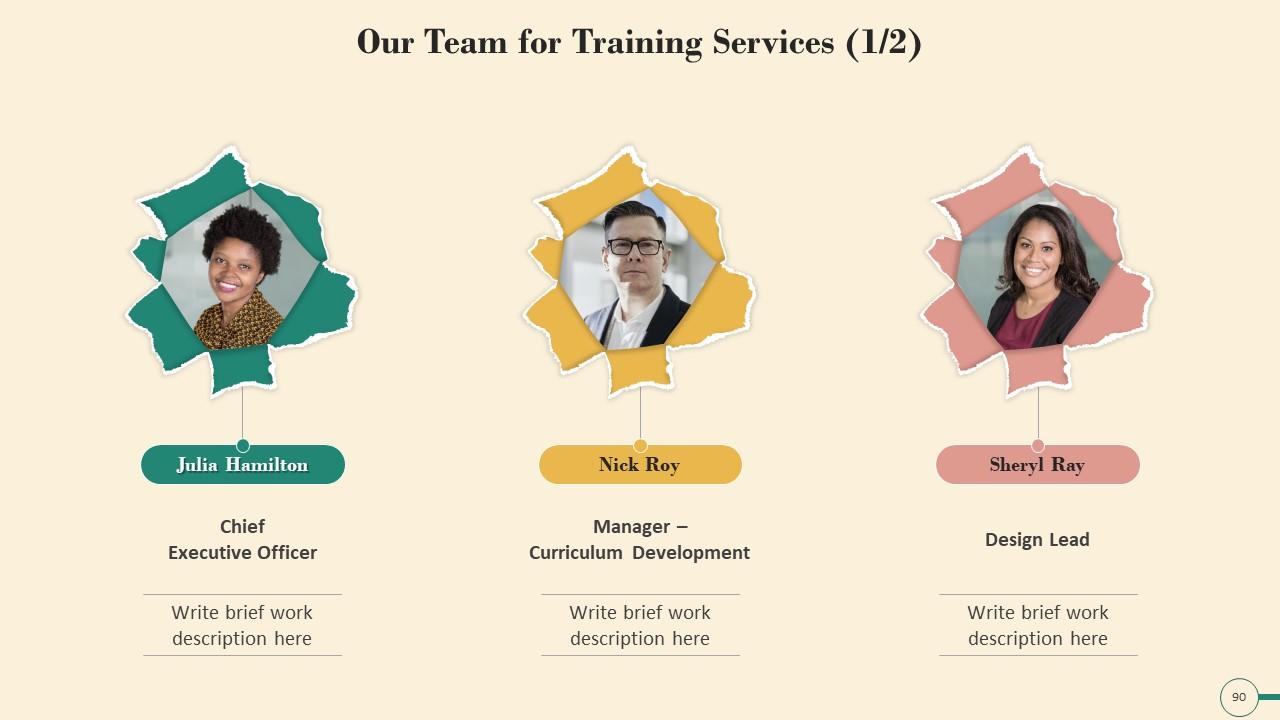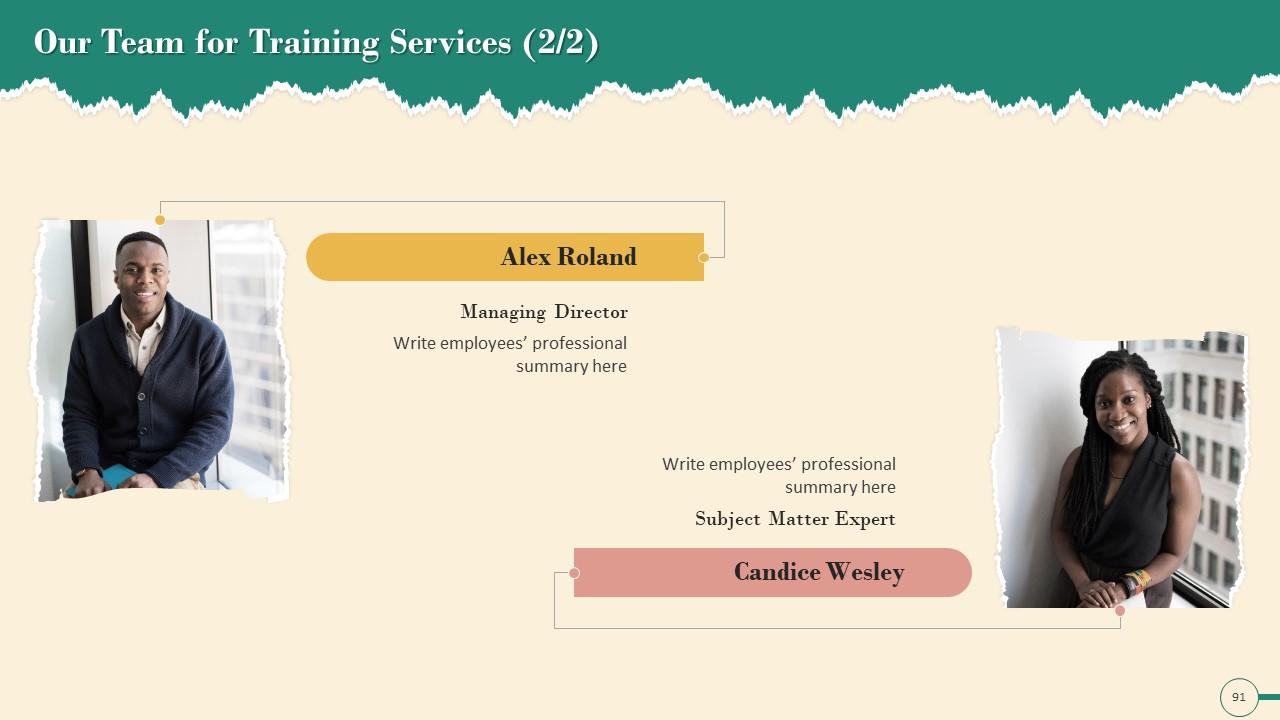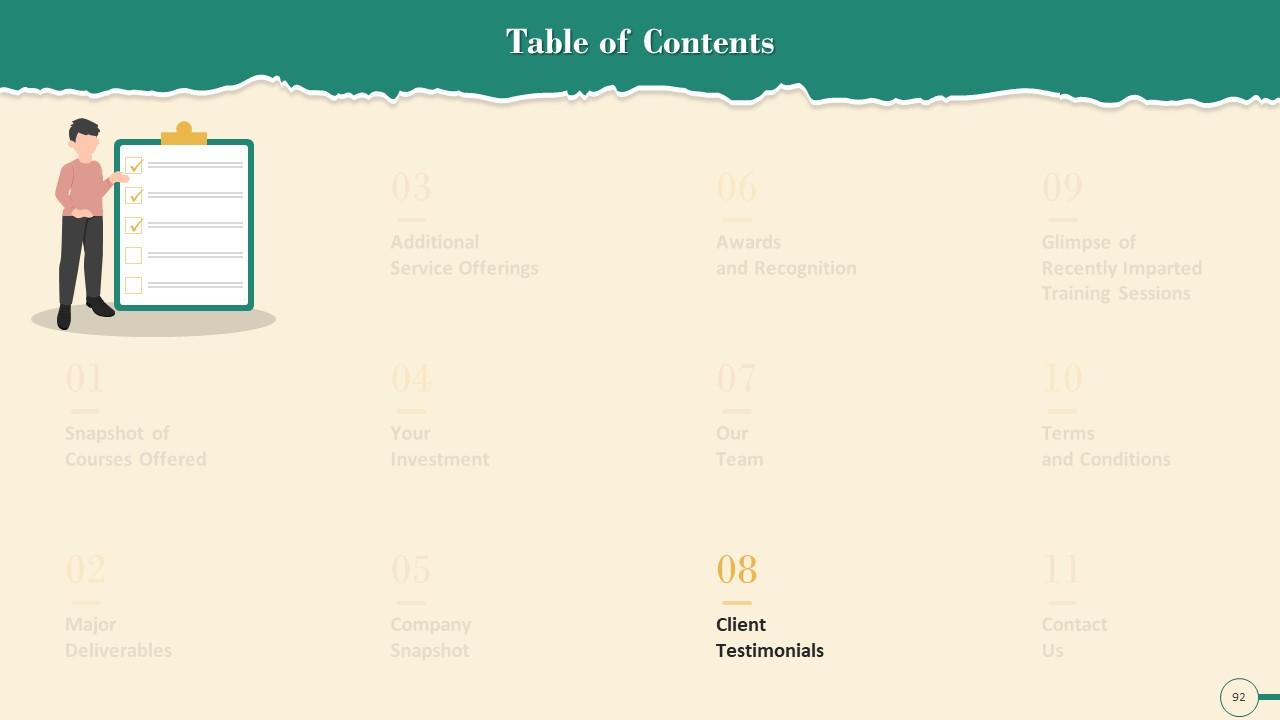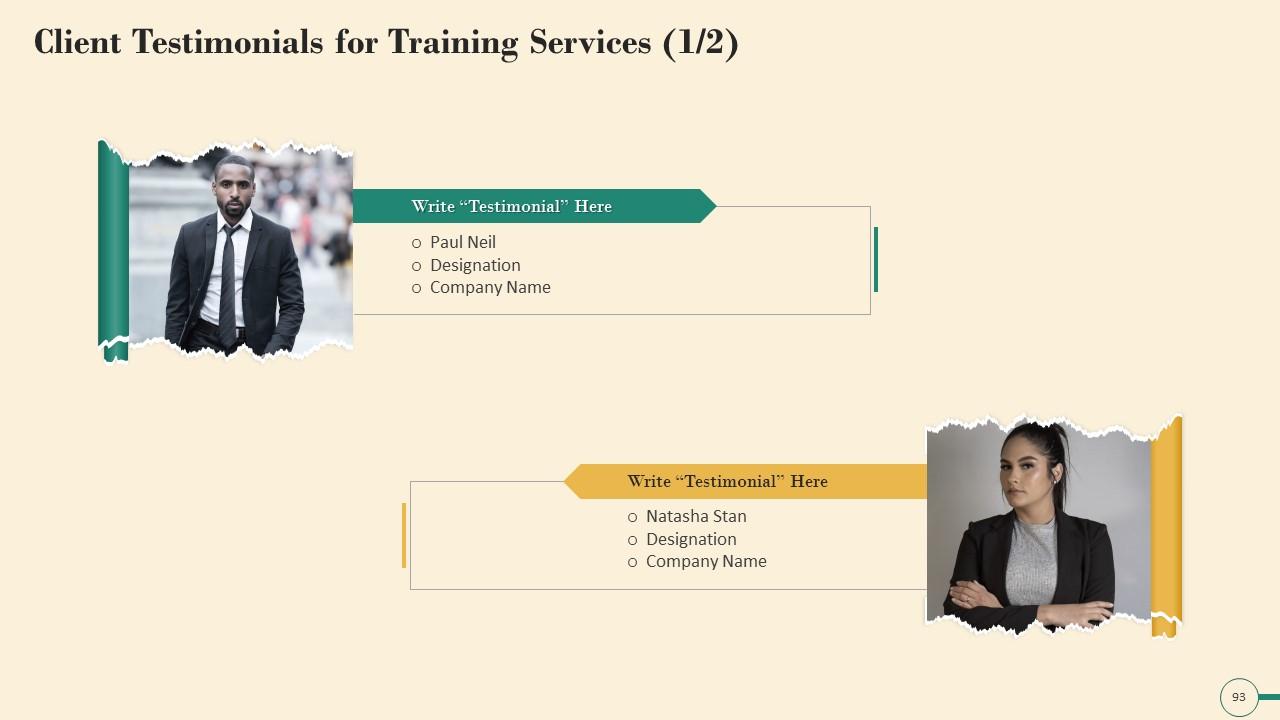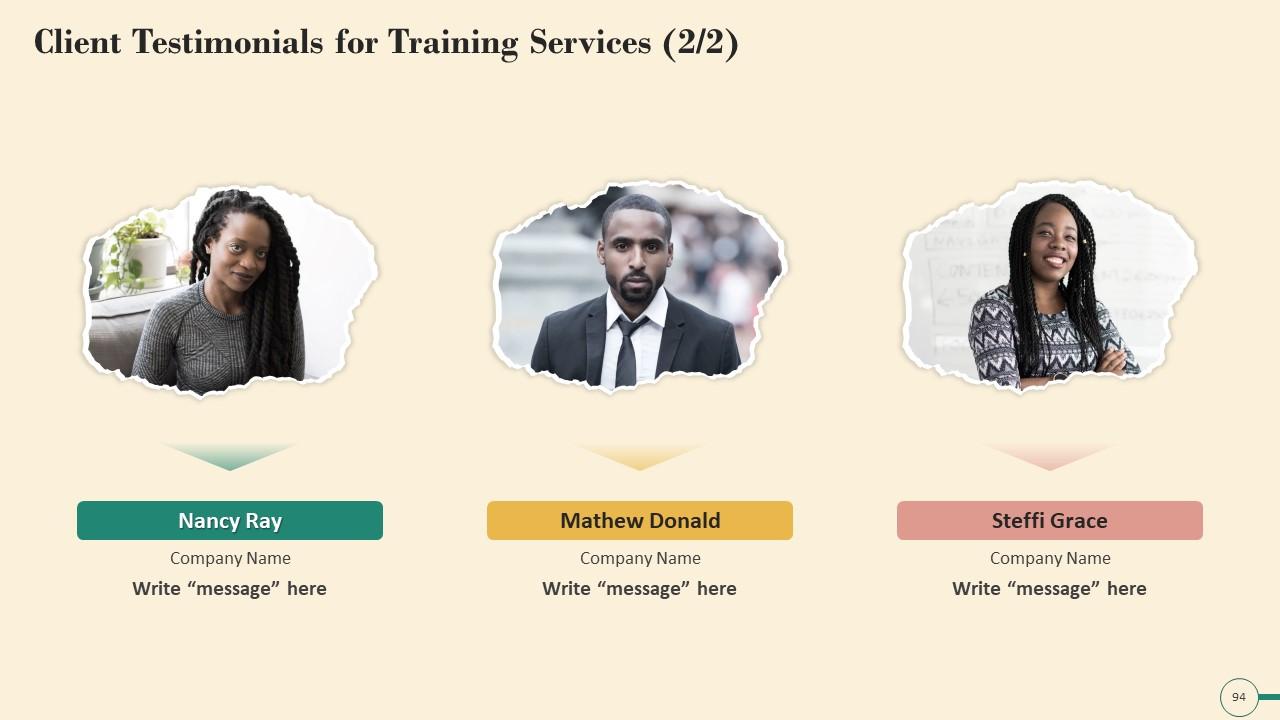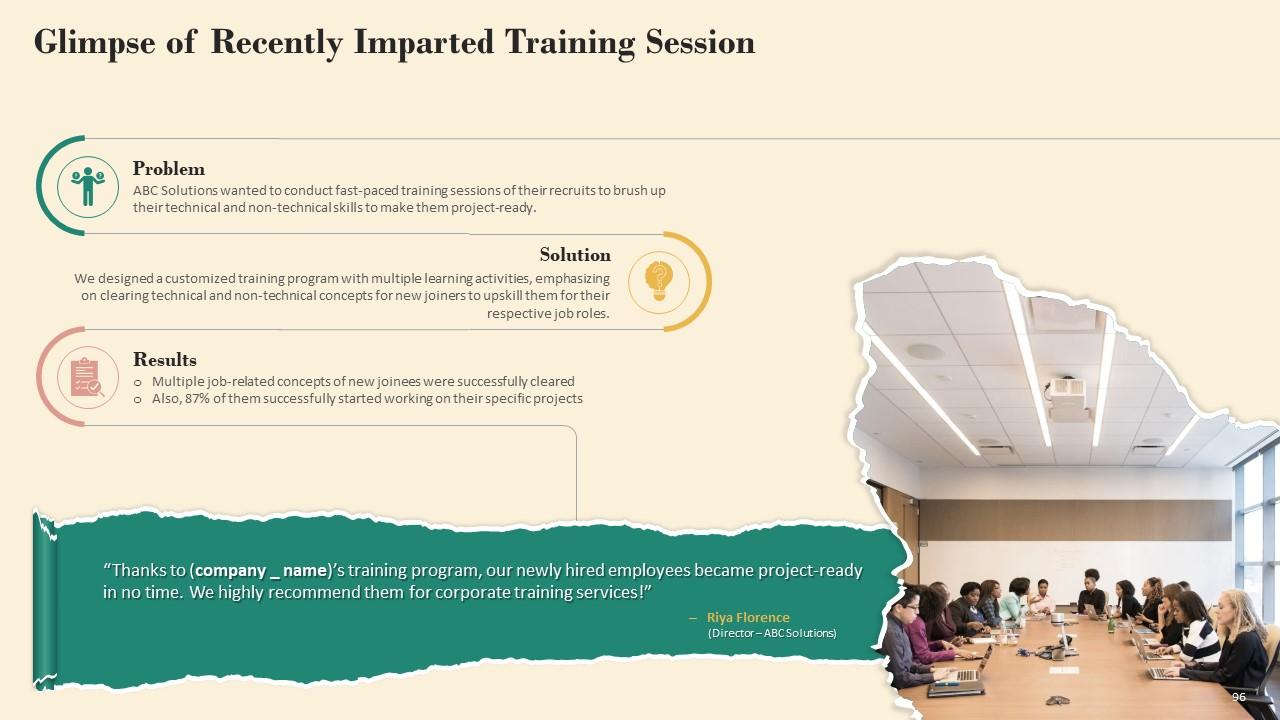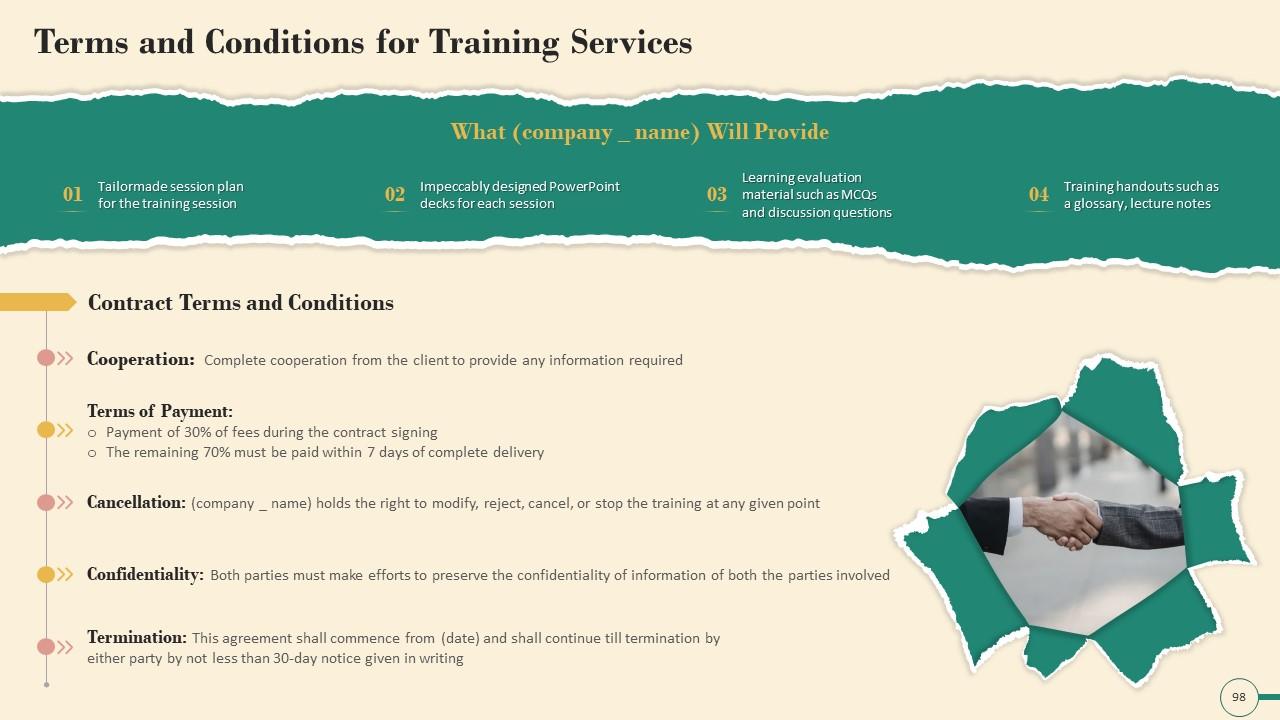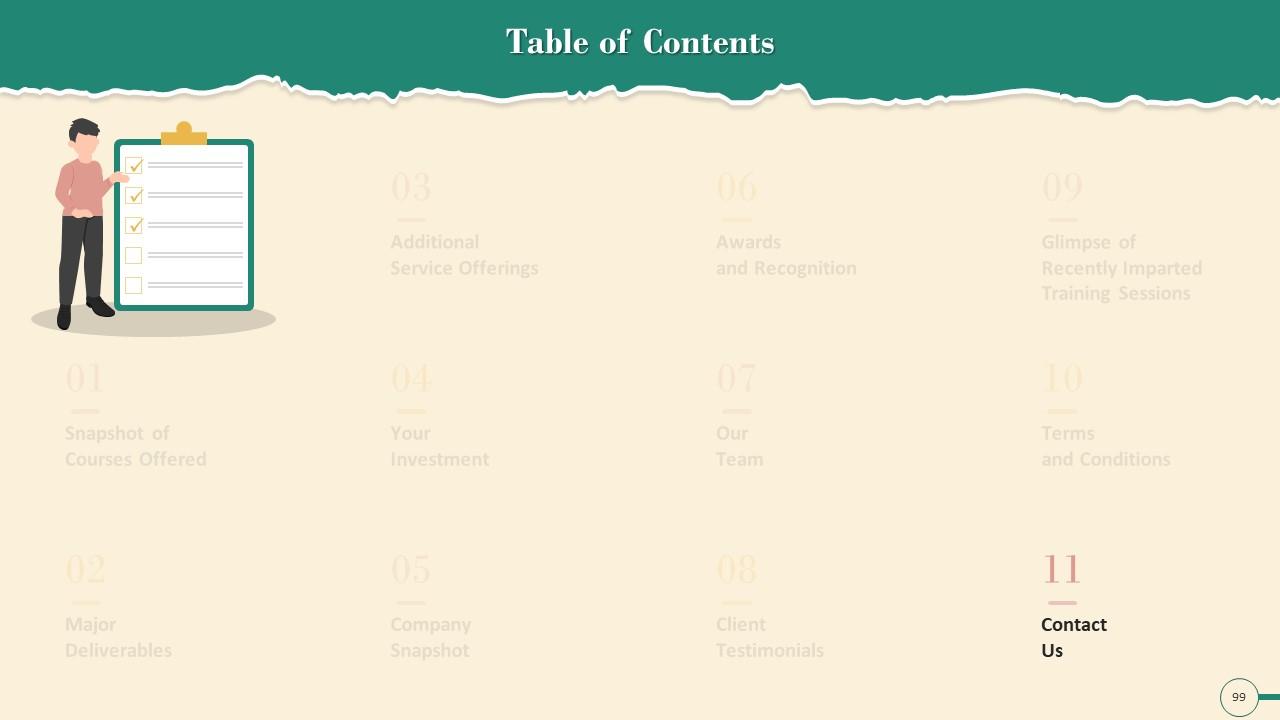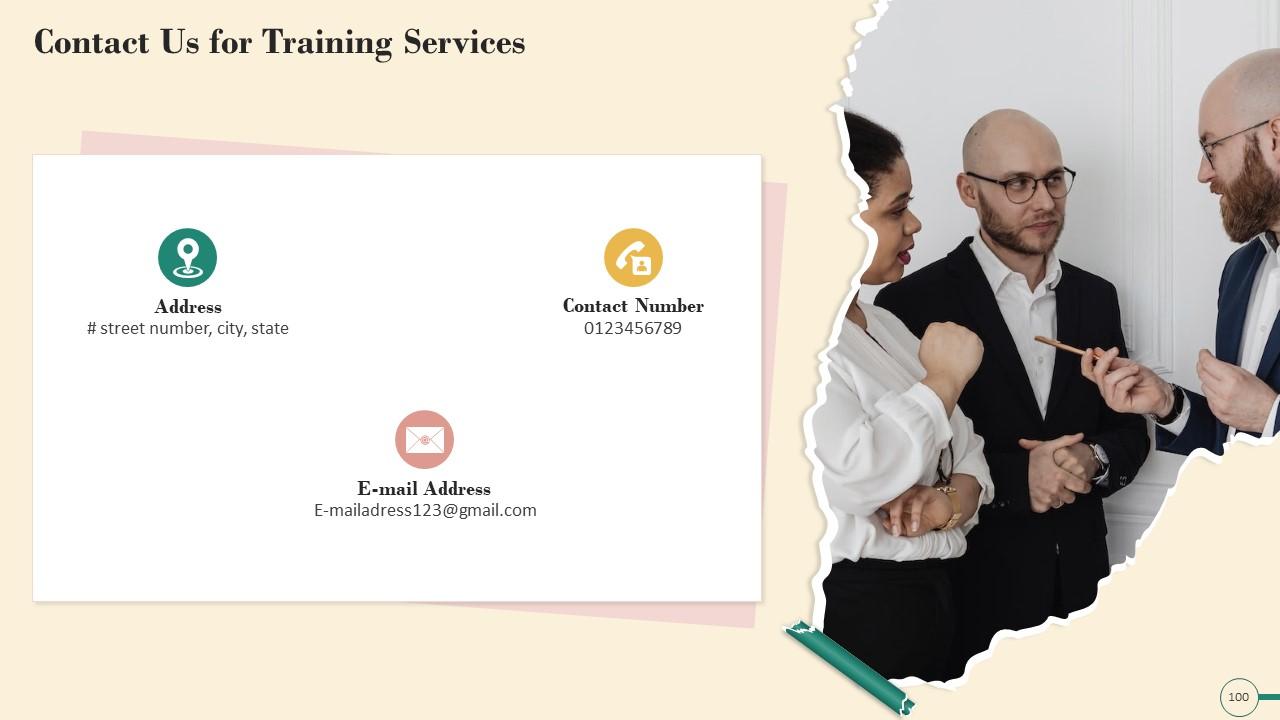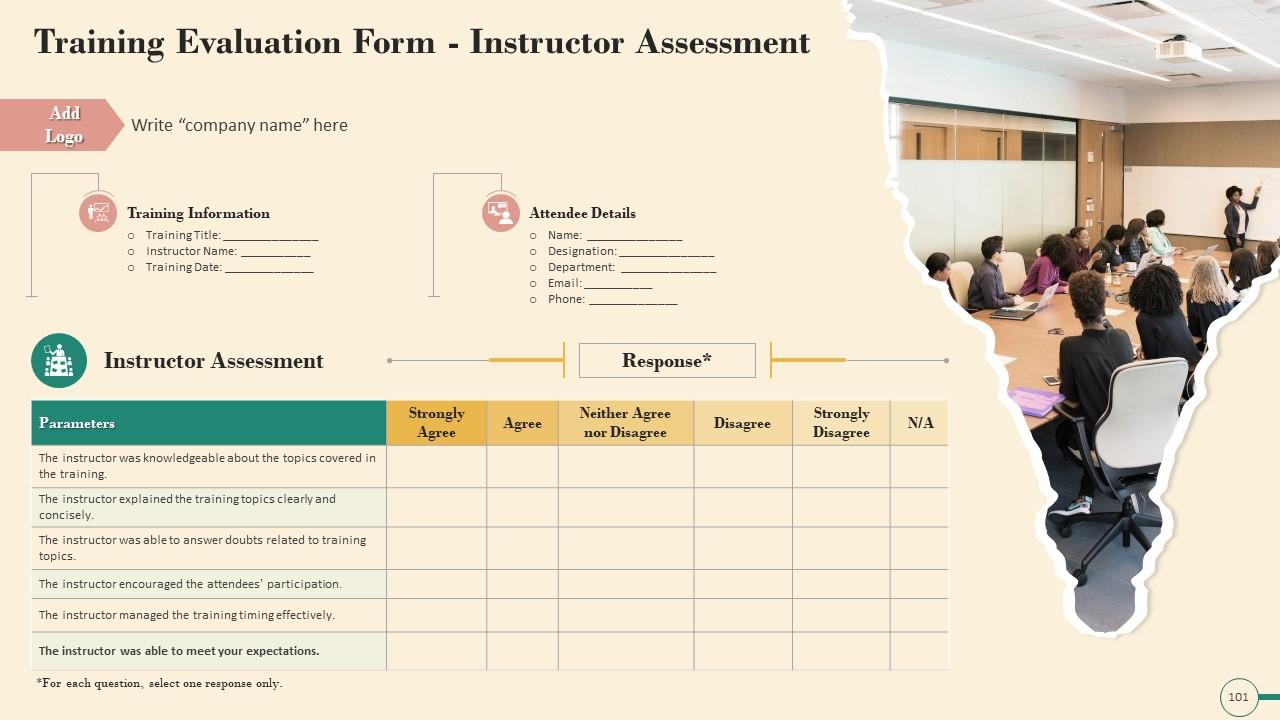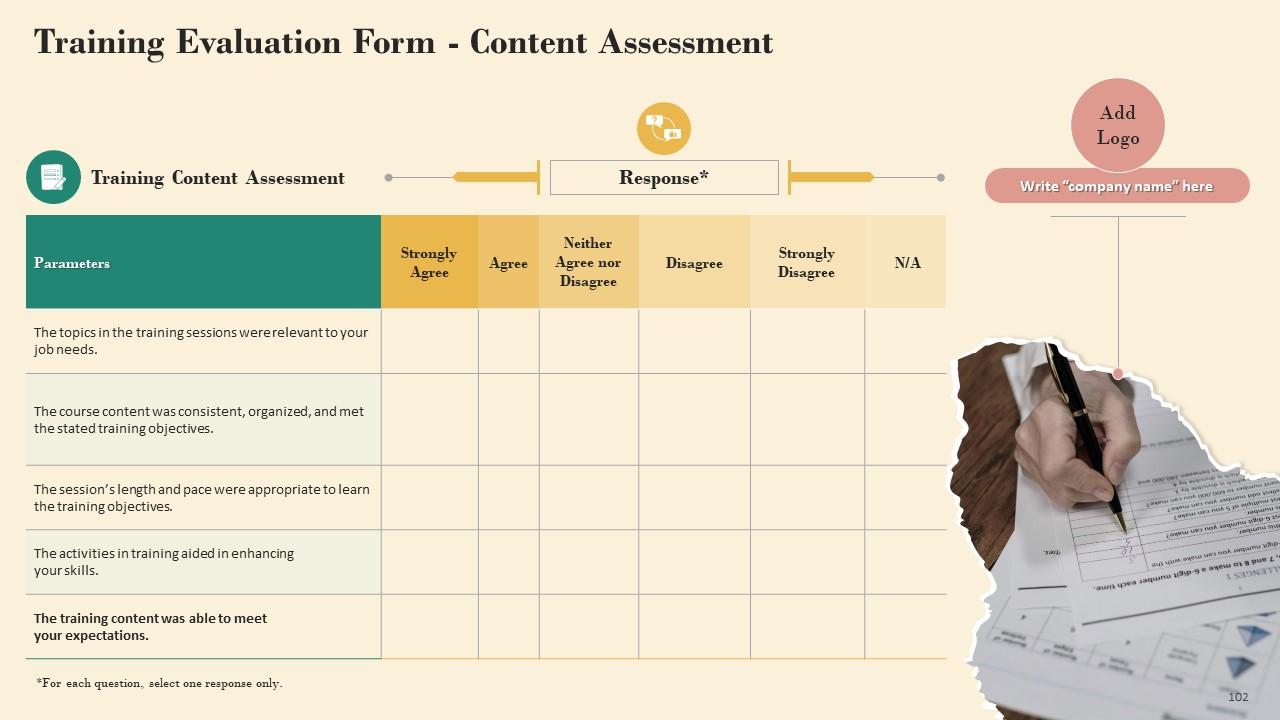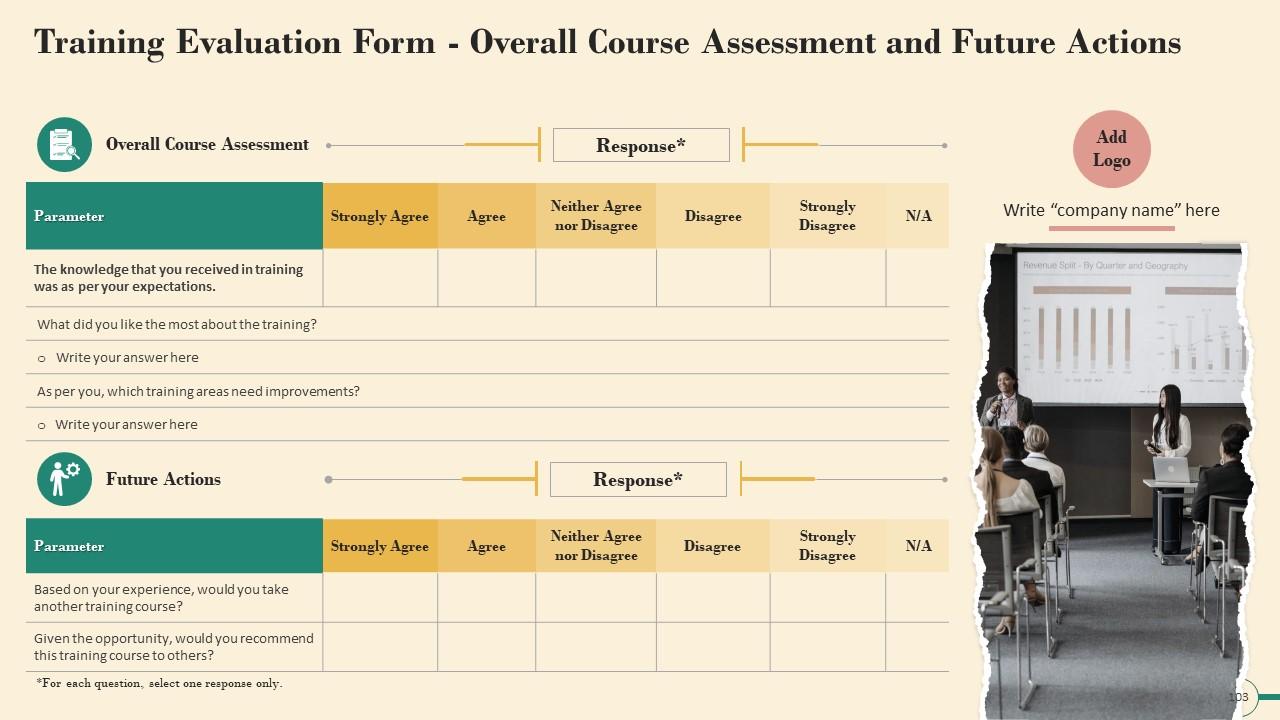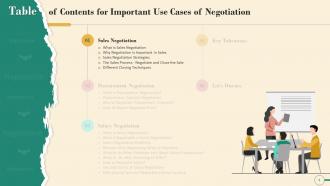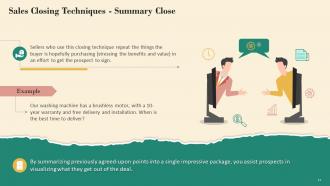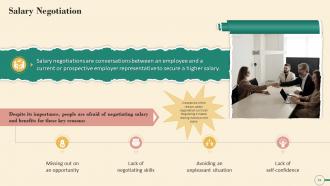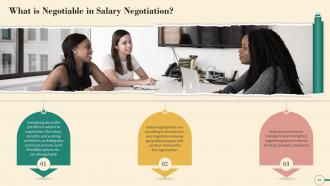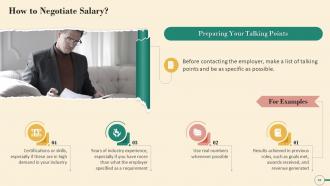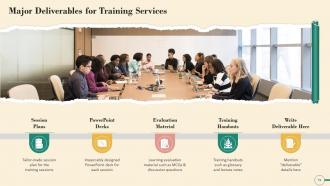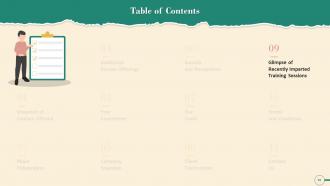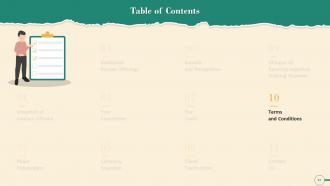Important Use Cases Of Negotiation Training Ppt
In detail, this training module on Important Use Cases of Negotiation covers the topics Sales Negotiation, Procurement Negotiation, and Salary Negotiation. The Sale Negotiation includes the Importance of Negotiations in Sales, Sales Negotiation Strategies Plan to Win, Build Value, Lead the Negotiation, Control Over Emotions, Trade, Dont Cave In, and Always Be Willing to Walk Away, and Techniques to Close Sales Now or Never Close, Question Close, Summary Close, Sharp Angle Close, Takeaway Close, Assumptive Close, and Soft Close. Procurement Negotiation covers Why Negotiate Procurement Contracts. and How do Buyers Negotiate Prices. Further, Salary Negotiation has topics Reasons Why Negotiating Salary is Important, How to Negotiate Salary, Dos and Donts of Salary Negotiation. It also has an Activity, Key Takeaways, and Discussion Questions related to the topic to make the coaching session more interactive. The deck has PPT slides on About Us, Vision, Mission, Goal, 30-60-90 Days Plan, Timeline, Roadmap, Training Completion Certificate, and Energizer Activities. It also includes a Client Proposal and Assessment Form for training evaluation.
In detail, this training module on Important Use Cases of Negotiation covers the topics Sales Negotiation, Procurement Nego..
- Google Slides is a new FREE Presentation software from Google.
- All our content is 100% compatible with Google Slides.
- Just download our designs, and upload them to Google Slides and they will work automatically.
- Amaze your audience with SlideTeam and Google Slides.
-
Want Changes to This PPT Slide? Check out our Presentation Design Services
- WideScreen Aspect ratio is becoming a very popular format. When you download this product, the downloaded ZIP will contain this product in both standard and widescreen format.
-

- Some older products that we have may only be in standard format, but they can easily be converted to widescreen.
- To do this, please open the SlideTeam product in Powerpoint, and go to
- Design ( On the top bar) -> Page Setup -> and select "On-screen Show (16:9)” in the drop down for "Slides Sized for".
- The slide or theme will change to widescreen, and all graphics will adjust automatically. You can similarly convert our content to any other desired screen aspect ratio.
Compatible With Google Slides

Get This In WideScreen
You must be logged in to download this presentation.
PowerPoint presentation slides
Presenting Training Deck on Important Use Cases of Negotiation. This deck comprises of 103 slides. Each slide is well crafted and designed by our PowerPoint experts. This PPT presentation is thoroughly researched by the experts, and every slide consists of appropriate content. All slides are customizable. You can add or delete the content as per your need. Not just this, you can also make the required changes in the charts and graphs. Download this professionally designed business presentation, add your content and present it confidently.
People who downloaded this PowerPoint presentation also viewed the following :
Content of this Powerpoint Presentation
Slide 4
This slide provides information about sales negotiations. It emphasizes that sales negotiation is a conversation between a buyer and seller to reach an agreement. These negotiations, typically, involve some back and forth, with both parties bringing concessions to the table.
Slide 5
This slide explains the importance of negotiation in sales. It mentions that good negotiations can result in more significant product/service margins which can aid in the development of better products and the maintenance of better products/services. It also highlights that today, one of the most critical skills required of a salesperson is the ability to negotiate effectively. Without quality skills in this crucial area, you risk losing out to cheaper offerings from your competition or failing to build value in the minds of buyers for your products or services.
Slide 6
This slide depicts the most common sales negotiation strategies. The strategies are: Plan to win, Build Value, Lead the Negotiation, Control Over Emotions, Plan to Win, Trade, Don't Cave In, and Always Be Willing to Walk Away
Slide 7
This slide demonstrates the importance of planning as a sales negotiation strategy. It emphasizes that the importance of preparation in sales negotiations cannot be overstated. Lack of knowledge creates uncertainty on both sides of the negotiation, resulting in delayed negotiations and lost sales. Many aspects of negotiation can be anticipated, if one conducts research and plans ahead of time.
Slide 8
This slide depicts Building Value as a sales negotiation strategy. It emphasizes that when confronted with a challenge or under pressure to sell, far too many sellers are tempted to give up. Whether the objection is based on price, trust, urgency, competitive challenges, or something else, it can be met with problem-solving and new ideas. It also mentions that if you focus on objectives and help you and your buyers meet them, you can continuously develop ideas to build value without lowering the price.
Slide 9
This slide showcases Leading the Negotiation as a sales negotiation strategy. It highlights that many sellers let the buyer drive the sales negotiation. On the other hand, top-performing sales negotiators are twice as likely to take the initiative. Sellers must take the initiative. They should set the agenda for meetings, begin with offers and ideas, and end with sharing goals and concerns. It also mentions that sellers who make the first offer are more likely to be pleased with the negotiation outcome.
Slide 10
This slide explains how emotions can be used as a sales negotiation strategy. It emphasizes the fact that sales negotiations are highly emotional events. The best sales negotiators intentionally manipulate buyers’ emotions and are more likely to be emotionally prepared during negotiations. It also mentions that the best negotiators manage their anger and frustration, which allows them to focus. When they are worried or anxious, they smoothen themselves out to do what needs to be done without conflict or fear of loss.
Slide 11
This slide tells the importance of Not Caving In as a sales negotiation strategy. It emphasizes the importance of reciprocity in trading. There is an exchange of goods/services, and trading has the potential to increase the value for both parties. Both parties give up something of lower value in exchange for something of greater value. It also emphasizes that sellers who prepare for trades ahead of time and have them ready when the time comes create better, more frequent agreements and reach agreements more frequently.
Slide 12
This slide explains always being Willing to Walk Away as a sales negotiation strategy. It mentions that mindset plays a significant role when it comes to negotiating. If a buyer has leverage if they know you need a sale, they will put you in a difficult situation and press you until there is very little value in a deal. It also highlights that you'll start on a more level playing field, if you're willing to walk and a buyer knows it.
Slide 13
This slide provides information about what to be kept in mind during a sales meeting. The points are: Determining whether the customer has a set budget for this purchase, recognizing buying signals, Selling in a 'consultative' manner, Making trade concessions, such as on price or warranty, Close the sale, and if you can't, offer to return in a few days with a tailored proposal. It also highlights the ABC (Always Be Closing), which explains that once closed, stop selling and leave; you are not required to continue if your customer says "yes" early in the meeting.
Slide 14
This slide showcases kinds of Sales Closing Techniques. The techniques are: Now or Never Close, Question Close, Summary Close, Sharp Angle Close, Takeaway Close, Assumptive Close, and Soft Close.
Slide 15
This slide explains the Now or Never sales closing technique, which entails making an effort that includes a special feature or benefit that requires an immediate purchase. A twenty-four -hour flash sale for an online store can instill a sense of urgency. It also emphasizes that sometimes prospects may object to this aggressive sales approach and ask for more time or simply say "no."
Slide 16
This slide depicts question close, a sales closing technique. The technique includes closing the deal by asking leading questions, e.g., "Would you agree to the sale if we could deliver this product tomorrow?" or "How much would it take to reach an agreement today?". It also highlights that this technique uncovers hidden objections and determines how serious the prospect is about closing the deal.
Slide 17
This slide describes the Summary Close, which is a sales closing technique. In this technique, sellers repeat the items the buyer is likely to purchase to entice the prospect to sign. It also mentions that by condensing agreed-upon points into a single impressive package, you help prospects visualize what they genuinely get out of the deal.
Slide 18
This slide describes a sales closing technique known as the sharp angle close. A sharp angle closing technique is used when a prospect is almost certain to purchase a product but is held back by one nagging objection. They present their objection as a challenge, such as “Can you deliver?" or “There is an issue," etc. It also mentions using the sharp-angle tactic to answer this question with another relevant question to close the deal.
Slide 19
This slide depicts a sales closing technique known as the takeaway close. When a seller is on the verge of closing the deal, and the customer is hesitant, he/she suddenly
starts complaining to drive a bargain. Takeaway closing technique can offer to withdraw the whole deal from the prospects to persuade them to accept the offer. This method can be used for prospects who are a time sink and consume a lot of your time.
Slide 20
This slide provides information on assumptive close that is a sales closing technique. The assumptive close or the presumptive close is a closing technique in which phrases and questions imply that your prospect will make a purchase. It also highlights that in this technique instead of asking the prospect if they want to buy, ask how they want to buy.
Slide 21
This slide explains the "soft close," a sales closing technique. The soft close is described as a technique that involves showing your prospect the product's usefulness and then asking a low-impact question to determine whether they are interested in learning more. It also emphasizes how this technique precludes the prospect's need to commit to you in any way, giving you more time to learn about their business needs.
Slide 23
This slide depicts information about procurement negotiations. It emphasizes that procurement negotiation refers to a process in which a purchasing manager selects one or more prospective contractors, negotiates with one or more of them, and awards the contract to one of them based on their best interests. It also mentions the managers' goals, such as increasing purchase savings, increasing the business's ROI (Return on Investment), and lowering the organization's risk (i.e., reputational damage, operational disruption, financial distress, etc.).
Slide 24
This slide depicts information about contract negotiations for procurement. It emphasizes that negotiating procurement contracts is a standard method for determining the best price and payment terms, delivery, key performance indicators, quality standards, etc. Winning procurement negotiations are built on the delicate balance of safeguarding stakeholder information while gathering as much information as possible on vendor priorities, preferences, and positions. It also states that negotiating procurement contracts with vendors necessitates skill, strategy, and strong vendor relationships.
Slide 25
This slide depicts information regarding the reasons for procurement contract negotiation. The reasons are: Agreement, costs, value, performance, conflict, problem, and quality.
Slide 26
This slide depicts information regarding how buyers negotiate. Some of the tactics are: Anchoring, whack back, sticker shock, cherry picking, pencil sharpening, and going gone.
Slide 29
This slide provides information about salary negotiations. It emphasizes that salary negotiations are conversations between an employee and a current or prospective employer representative to secure a higher salary. It also mentions that, despite the importance of negotiating salary and benefits, people are afraid of doing so for various reasons:
- Missing out on an opportunity
- Lack of Negotiating skills
- Avoiding an unpleasant situation
- Lack of self-confidence
Slide 30
This slide describes what is negotiable during a salary negotiation. It states that the job offer is negotiable in every way. Salary, benefits, and working conditions, such as days and hours worked, work flexibility options, and so on, are all negotiable. It also emphasizes that salary negotiations differ by position and that salary negotiation leeway increases with position level within the organization. Executives and senior managers have the highest negotiating power in terms of salary, benefits, and perks.
Slide 31
This slide discusses the factors that influence an employer's salary negotiation leeway. The following factors are considered: the job level within the organization, the scarcity of job-related skills and experience in the job market, the selected individual's career advancement or stage, as well as their expertise, and the salary range for the job within the organization, the compensation paid for equivalent positions in the geographic region, and the current economic conditions in the industry.
Slide 32
This slide provides information regarding reasons why negotiating salary is essential. The reasons are: Not negotiating will cost you; Failing to negotiate, is failing to grow; Your current salary follows you to the next job; Negotiating salary shows an employer that you know your value, one will never get what they want unless they ask for it.
Instructor’s Notes:
- Not Negotiating Will Cost You: When you negotiate your salary, you're not just negotiating the number on your next paycheck. Taking less than you deserve can harm your work performance. Underpaid employees are less satisfied and less productive, which means you may be less likely to earn that raise in the first place
- Fail To Negotiate, Fail to Grow: Salary negotiation provides benefits other than more money. It teaches you to handle difficult workplace conversations while remaining professional, cooperative, and non-adversarial
- Your current salary follows you to the next job: By not negotiating current salary, one reduces the amount they will have to show their next employer for them to evaluate their potential pay in that job. Negotiate a higher salary, and your next employer will be more likely to pay you more
- Negotiating salary shows an employer that you know your value: Salary negotiations demonstrate to your employer that you are competent, confident, and value your abilities. Those are the same skills that your employer will value when it comes to increasing your level of responsibility, entrusting you with critical clients, and promoting you to leadership positions
- One will never get what they want unless they ask for it: You're unlikely to get what you want unless you ask for it, whether money, perks, benefits, or job responsibilities
Slide 33
This slide depicts information regarding the points to be kept in mind when an employer asks about salary expectations. It highlights that an employer may enquire about your salary expectations during the application, interview, or after the interview process.
Slide 34
This slide provides information regarding things to do while receiving an offer. It highlights that it is usually advisable to take some time to reflect after receiving an offer in person, over phone, or by email. One must have complete information about benefits in addition to salary. It also mentions the process to be followed when a person receives an offer over a call/in-person and an offer received in writing.
Slide 35
This slide provides tips for negotiating salary effectively. The recommendations are: Start by calculating your economic worth, Research the market average, Prepare your talking points, Ask for more, Share expenses you’re incurring, and Be flexible.
Slide 36
This slide depicts the salary negotiation tip “Knowing your Economic Worth." It emphasizes the importance of knowing exactly how much value one can offer an employer before negotiating a salary. Geographic location, years of experience in the industry, years of management experience, education level, professional standing, skills, certifications and licenses are all factors that can affect your salary.
Slide 37
This slide depicts the salary negotiation tip "Research the Market Average." It mentions that knowing the market average can provide a good starting point for your salary request and serve as a justification as well. It also highlights the questions to consider while beginning your market research.
The questions are as follows:
- What is the national average salary for the position?
- What is the average in your geographical location and nearby cities?
- How much do comparable companies in your area pay employees in this position?
Slide 38
This slide emphasizes the significance of “Preparing your talking points" while negotiating a salary. It mentions that before contacting the employer, make a list of talking points that are as specific as possible. Among the possibilities are:
- Results achieved in previous roles, such as goals met, awards received, and revenue generated
- Years of industry experience, especially if you have more than what the employer specified as a requirement
- Certifications or skills, especially if they are in high demand in your industry
Slide 39
This slide depicts "Ask for more" as a salary negotiation tip. It emphasizes the one fundamental rule of salary negotiation: Offer the employer a slightly higher figure than your expected salary. Even if they negotiate downwards, you'll still get a good salary. It also states that while providing a salary range, make sure the lowest number you provide is still a reasonable amount.
Slide 40
This slide explains “Sharing your expenses" as a salary negotiation tip. It emphasizes that another reason an employee might want to ask for a raise is to cover any expenses (such as commuting or vehicle wear and tear) incurred due to accepting the job. It also mentions that it is not uncommon for employees to request that their pay be adjusted to account for their expenses.
Slide 41
This slide depicts the salary negotiation tip Be Flexible. It emphasizes that if the employer cannot provide the desired salary, other forms of compensation such as stock options, vacation days, and work-from-home days may be available. In some cases, these benefits may be as valuable as a pay cheque.
Slide 42
This slide depicts the salary negotiation dos and don'ts. The dos are as follows: Always research the expected salary for the position you're seeking, allow the employer to construct the first salary offer, and if asked, say you expect a competitive market salary, get the offer in writing, and so on. Don'ts includes: Raising your salary before the employer does, inflating your current earnings to receive a higher salary offer, feeling obligated to accept the first salary offer, becoming too aggressive in negotiating your expected salary, and accepting an offer if you're unsure about the job or the company.
Slide 43
This slide provides a role play exercise (Job Seeker’s and HR Manager’s perspective) on salary negotiation that trainees can perform.
Slide 57 to 72
These slides contain energizer activities to engage the audience of the training session.
Slide 73 to 100
These slides contain a training proposal covering what the company providing corporate training can accomplish for the client.
Slide 101 to 103
These slides include a training evaluation form for instructor, content and course assessment.
Important Use Cases Of Negotiation Training Ppt with all 108 slides:
Use our Important Use Cases Of Negotiation Training Ppt to effectively help you save your valuable time. They are readymade to fit into any presentation structure.
-
SlideTeam’s readymade presentations have landed my unique images with my bosses in the past and it continues to reward me.
-
The information is visually stunning and easy to understand, making it perfect for any business person. So I would highly recommend you purchase this PPT design now!


